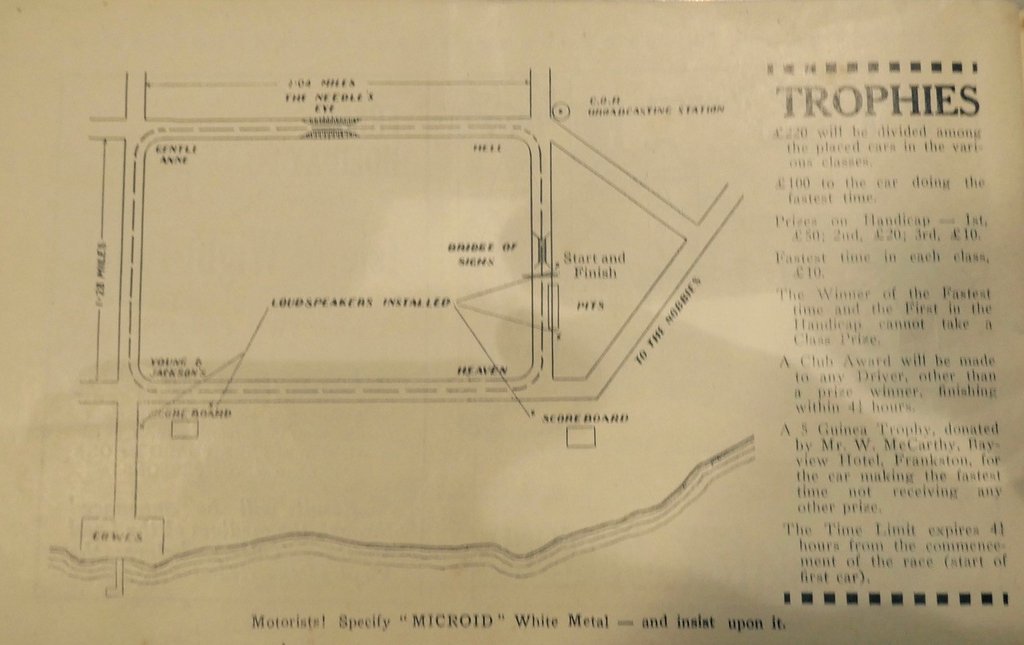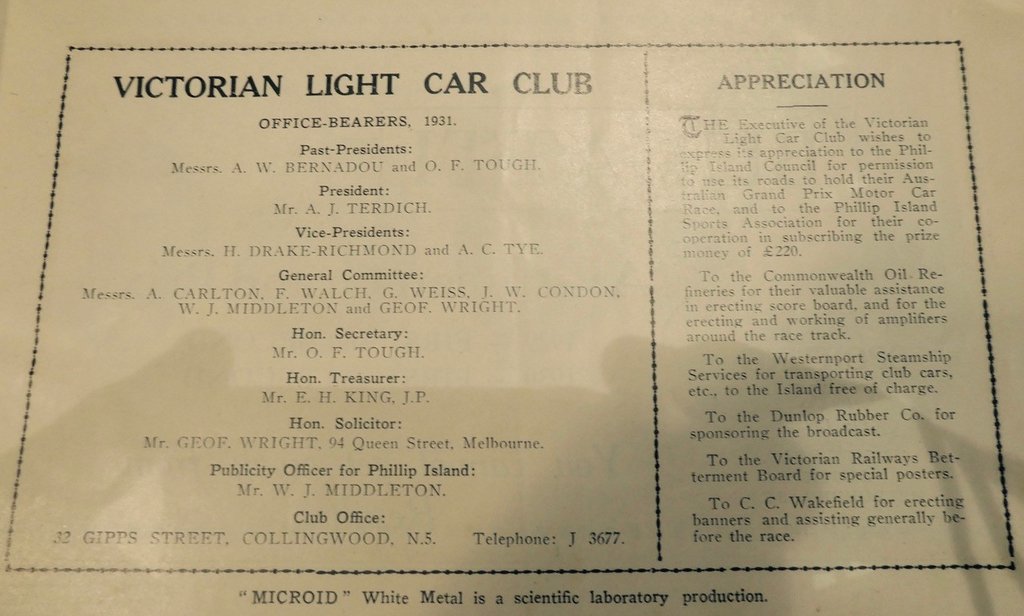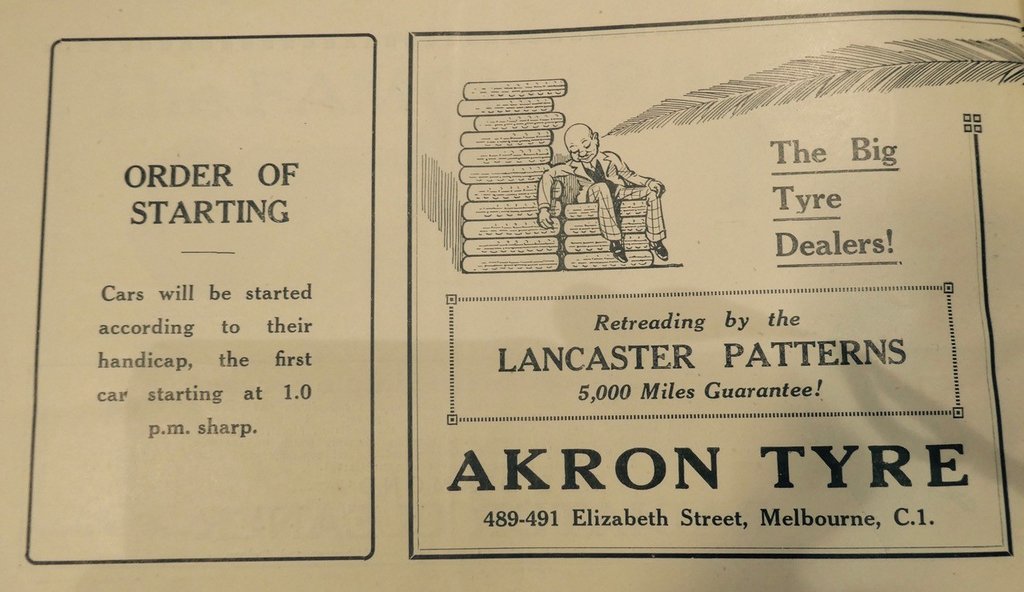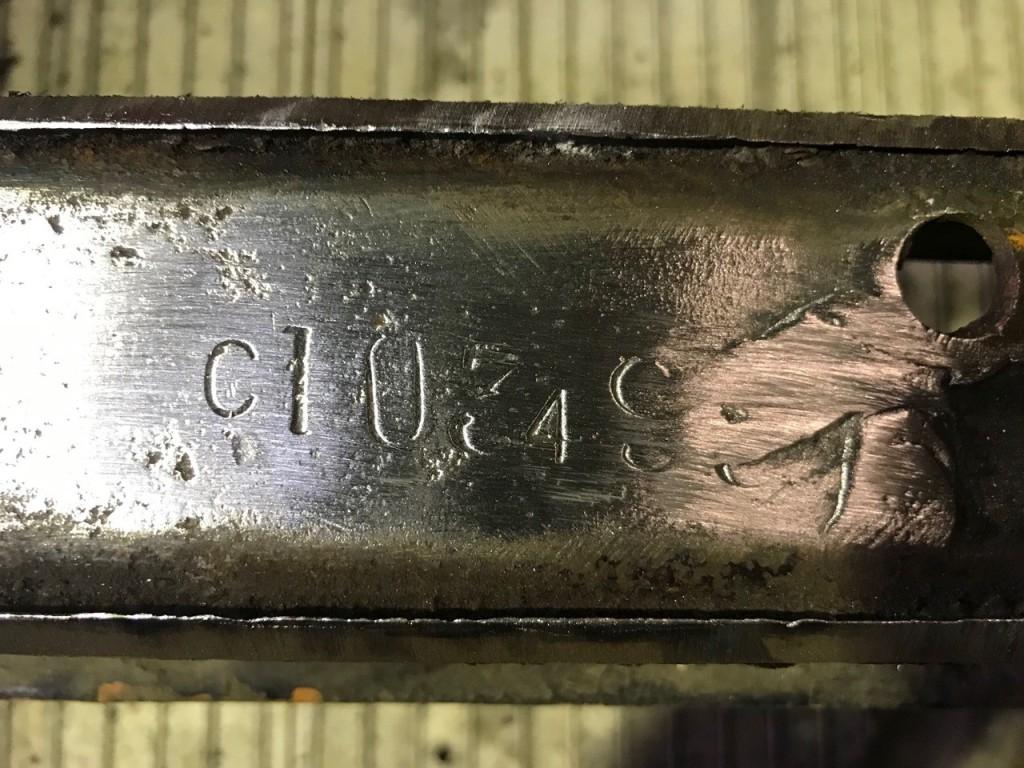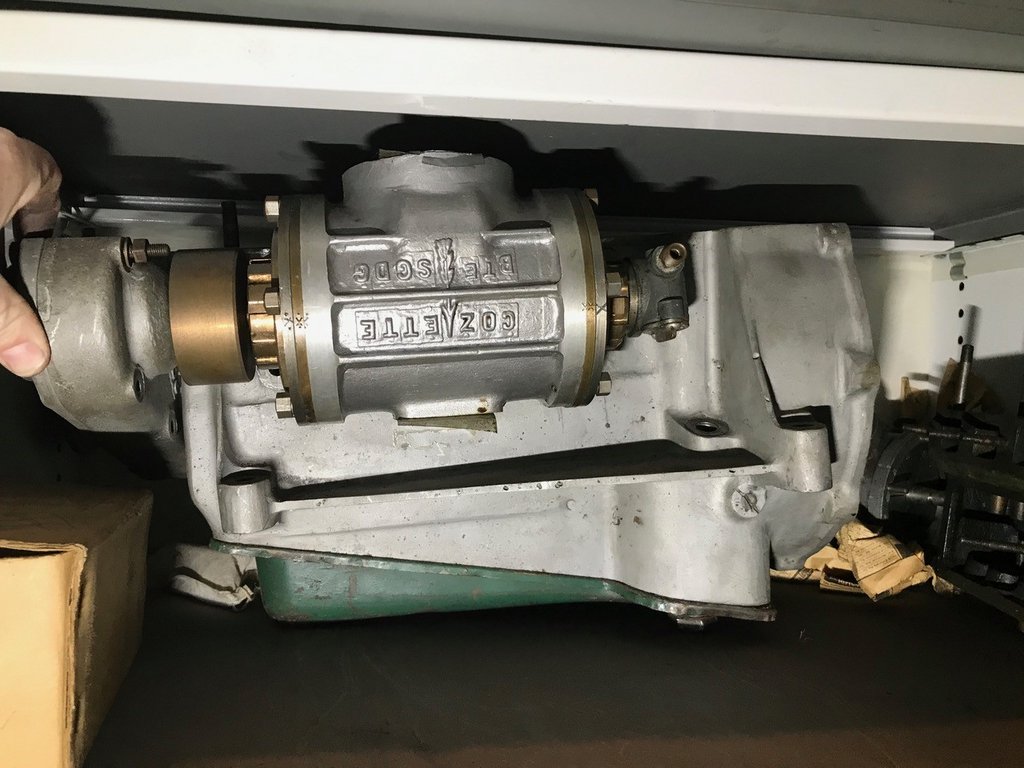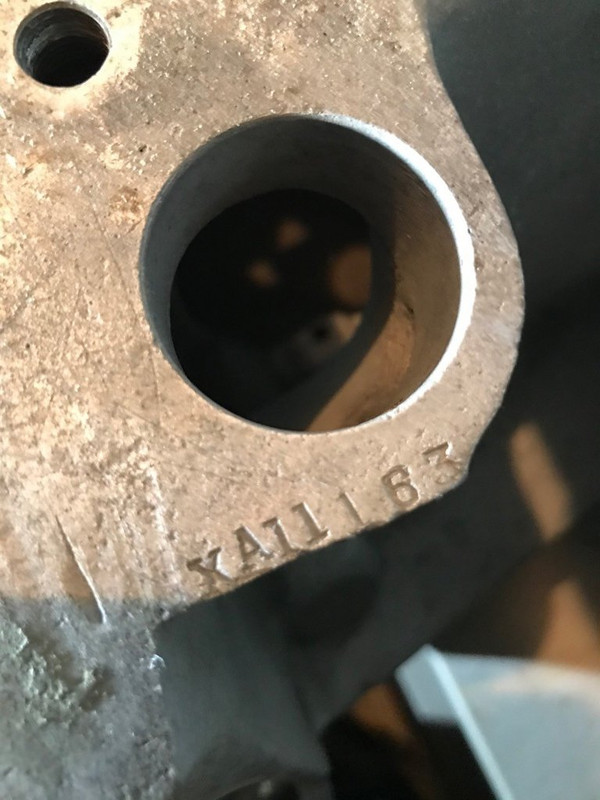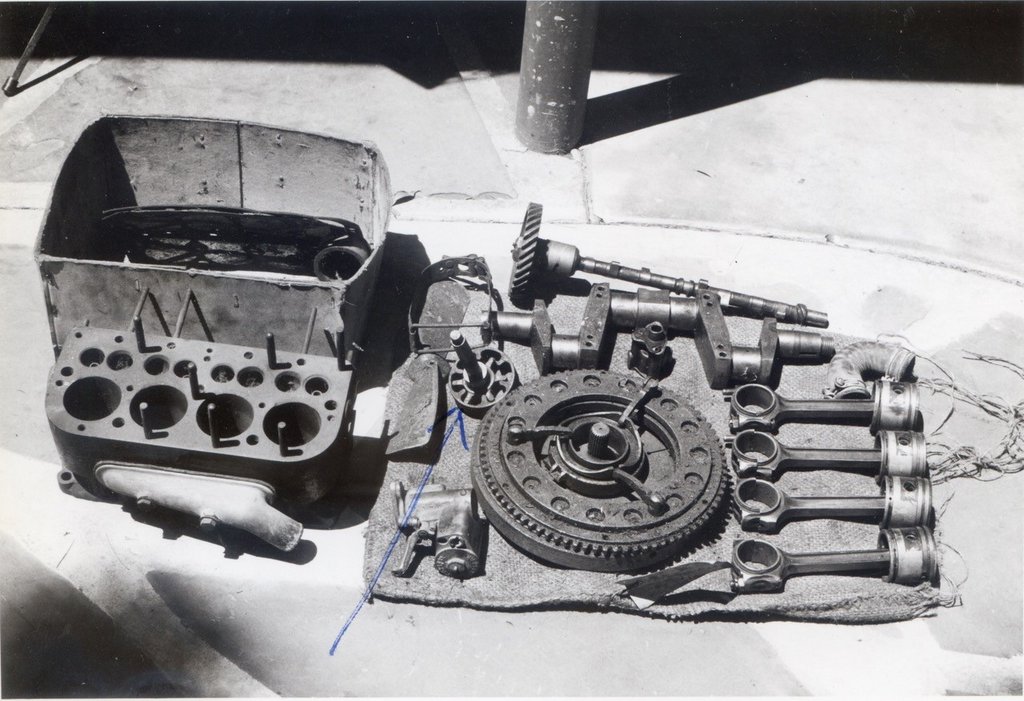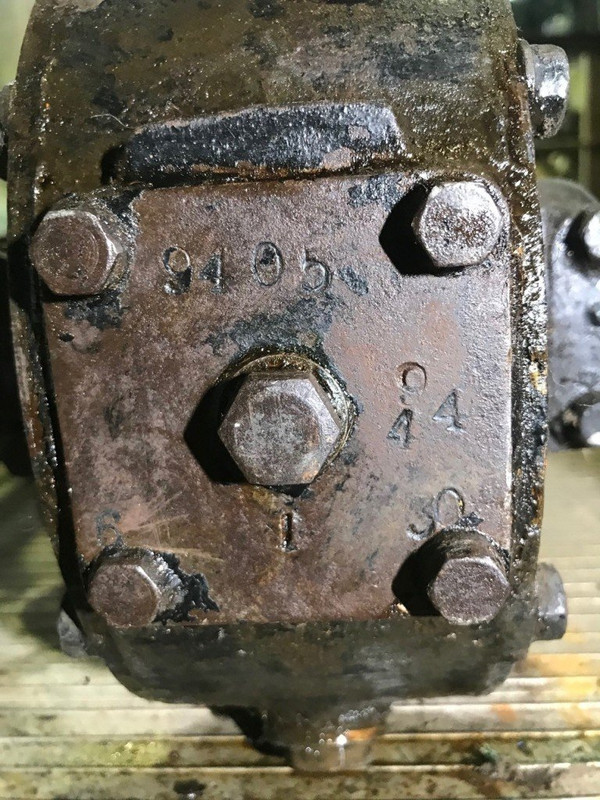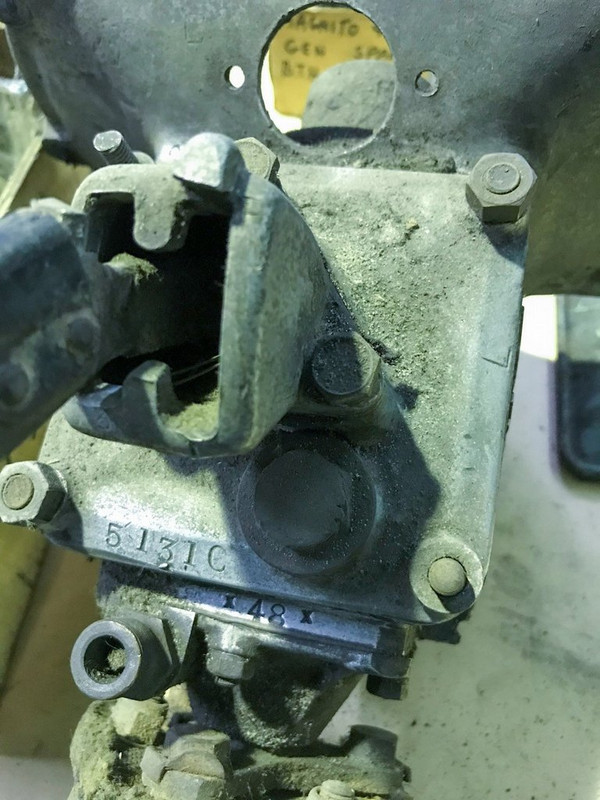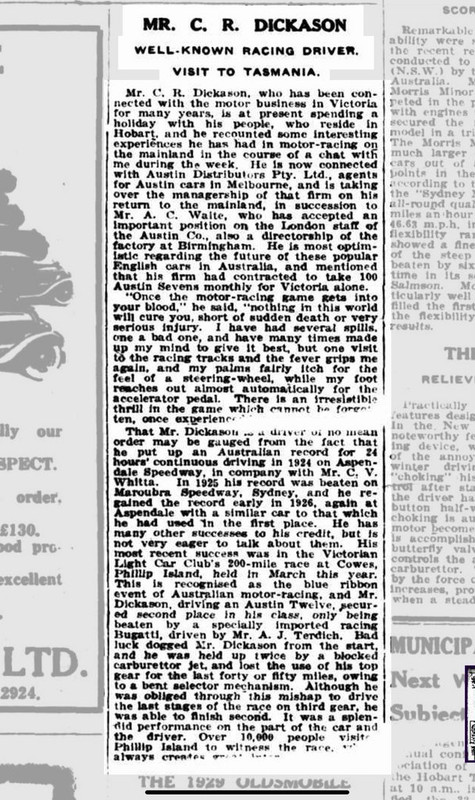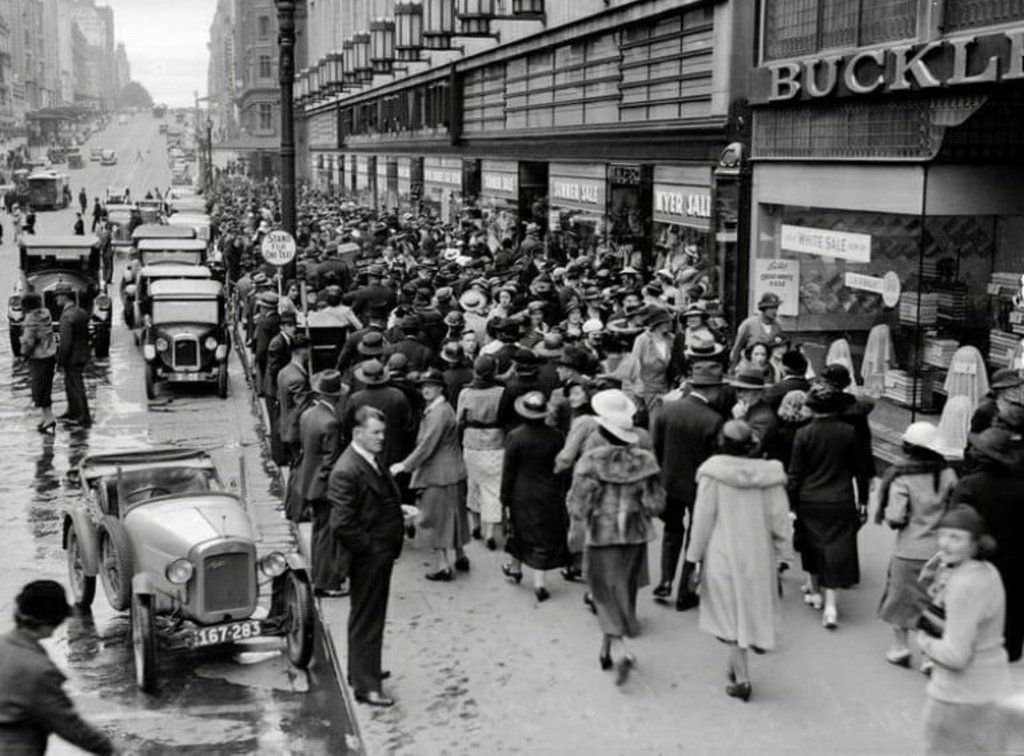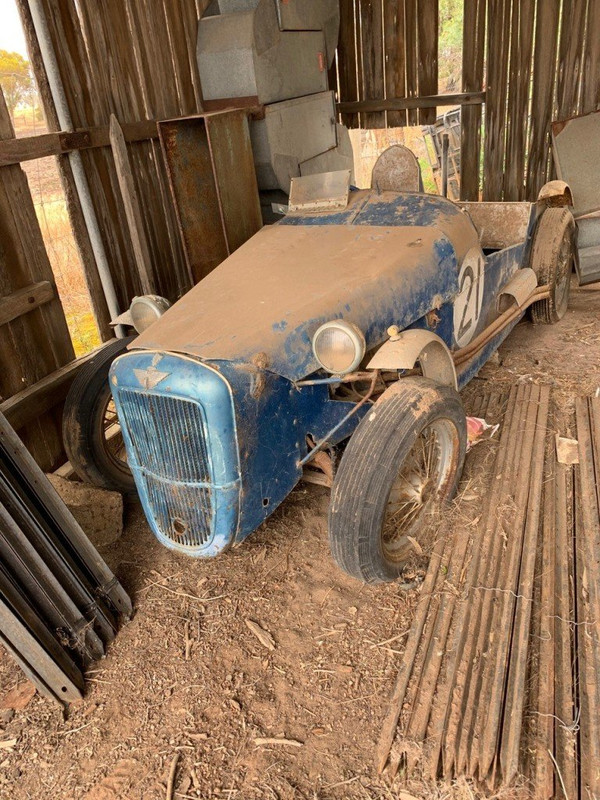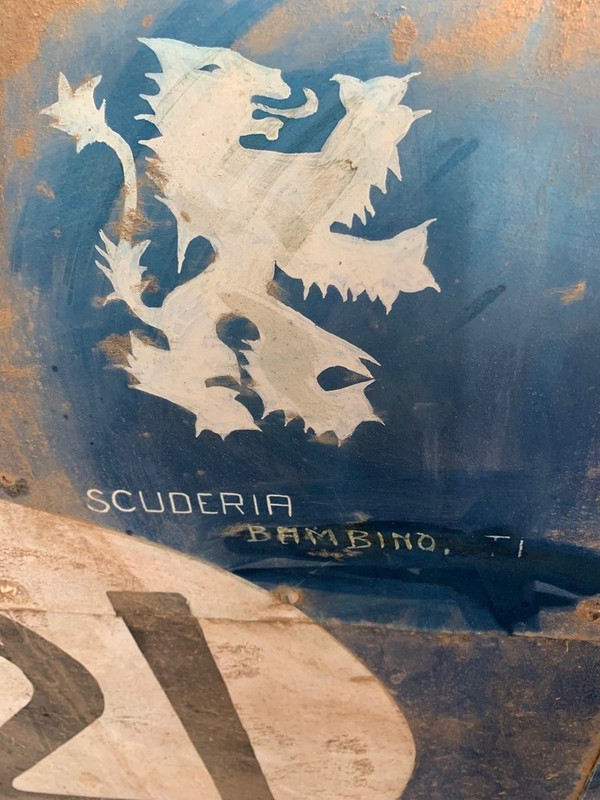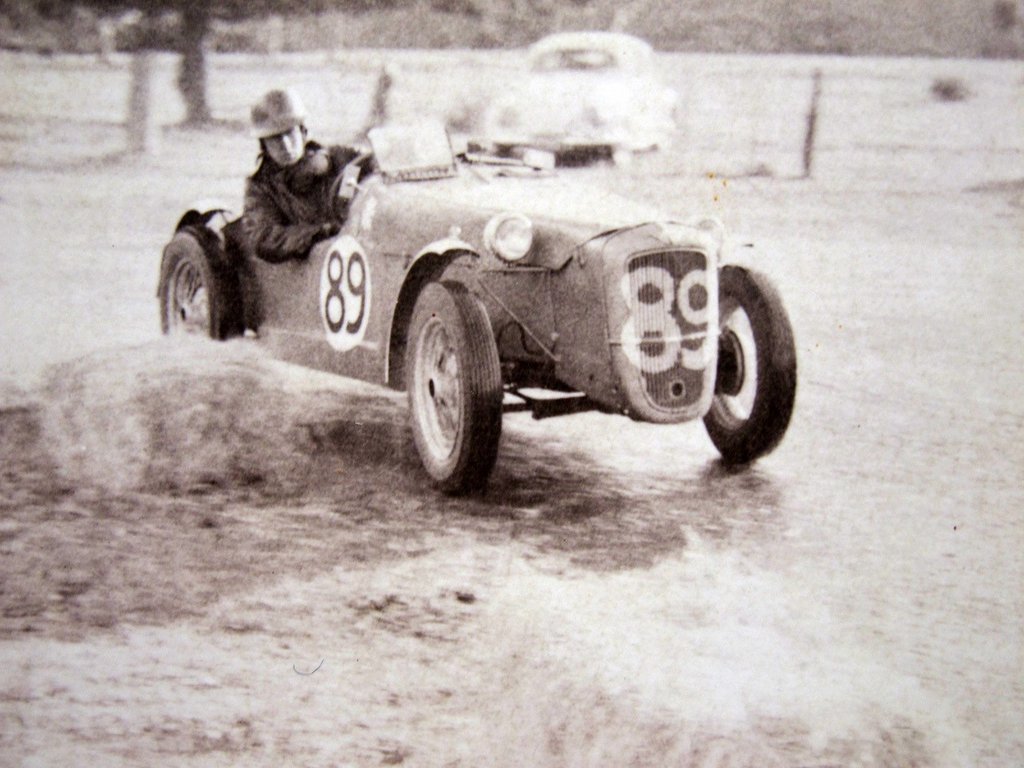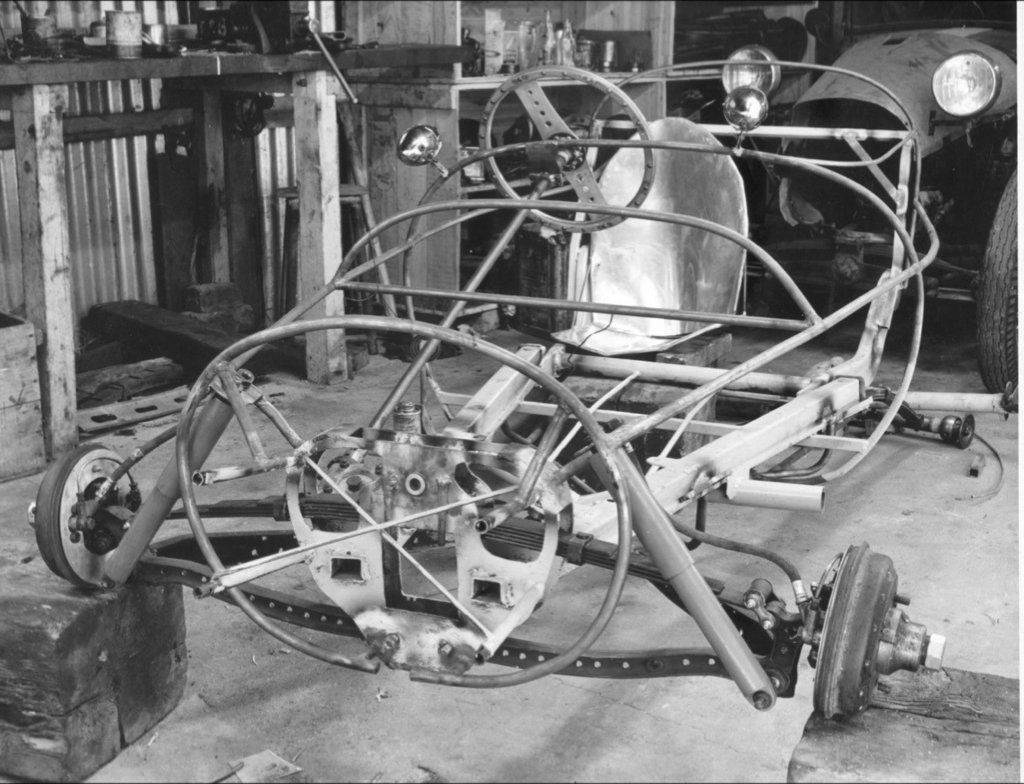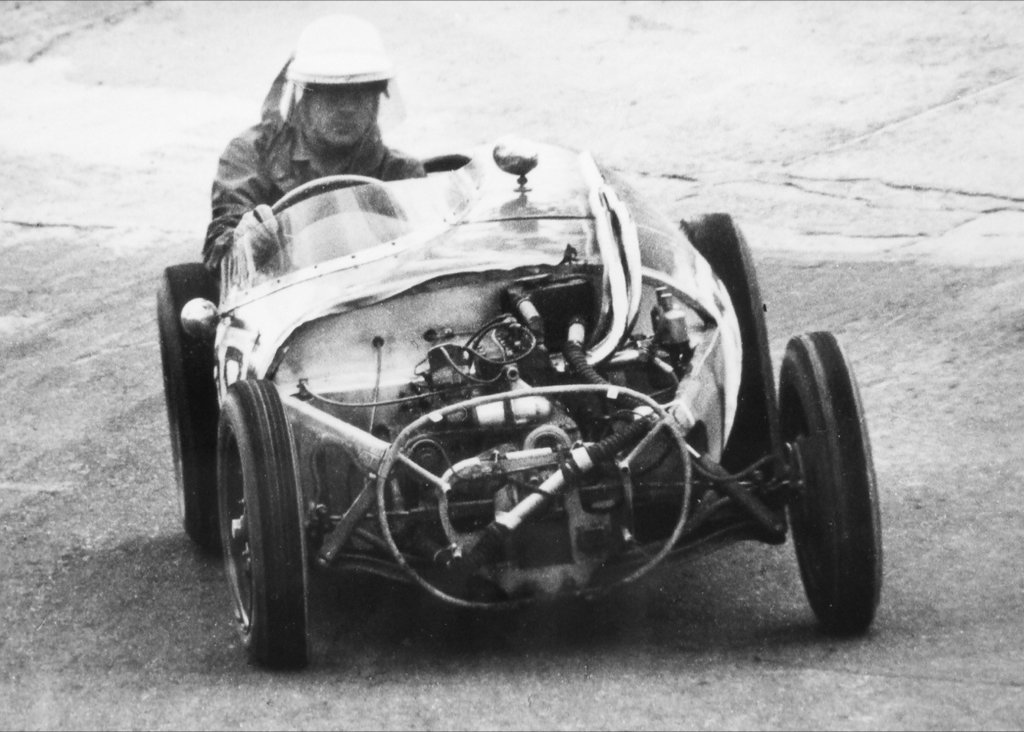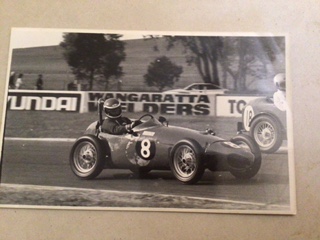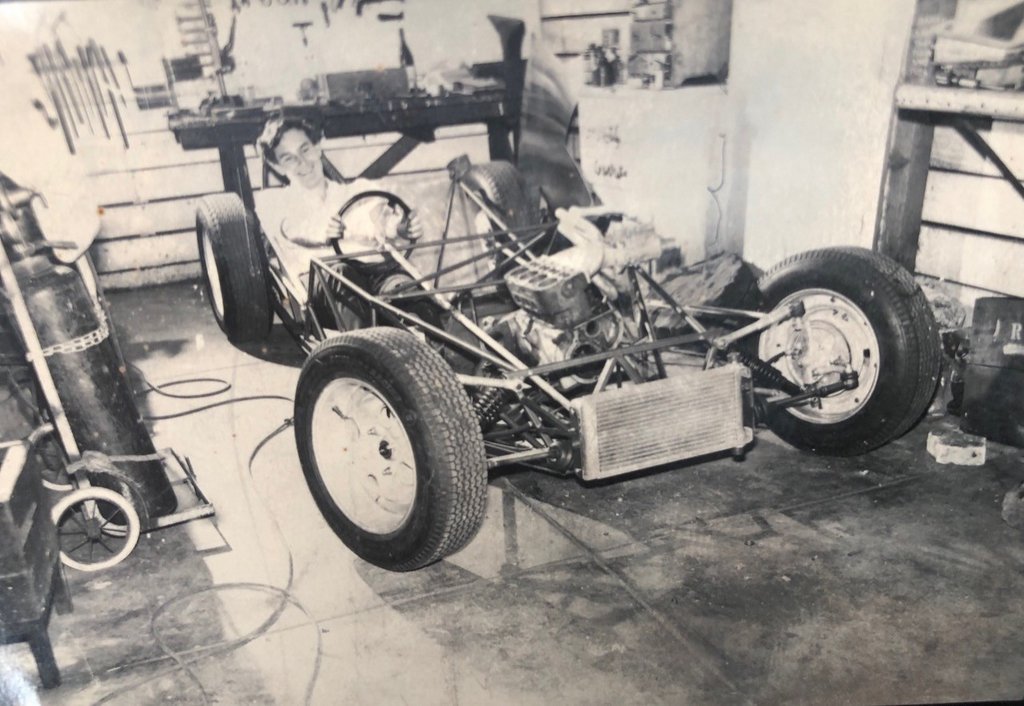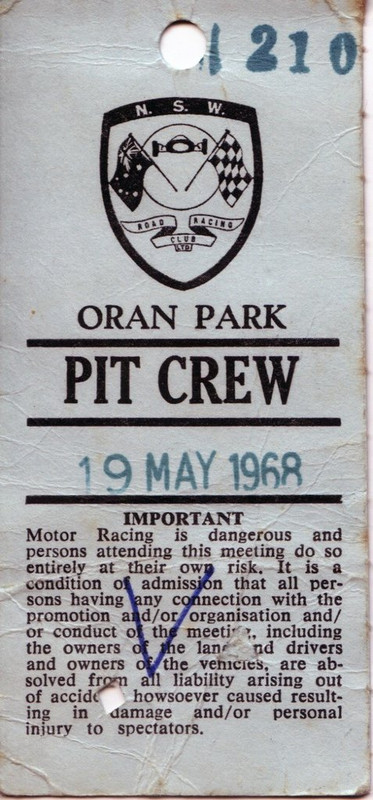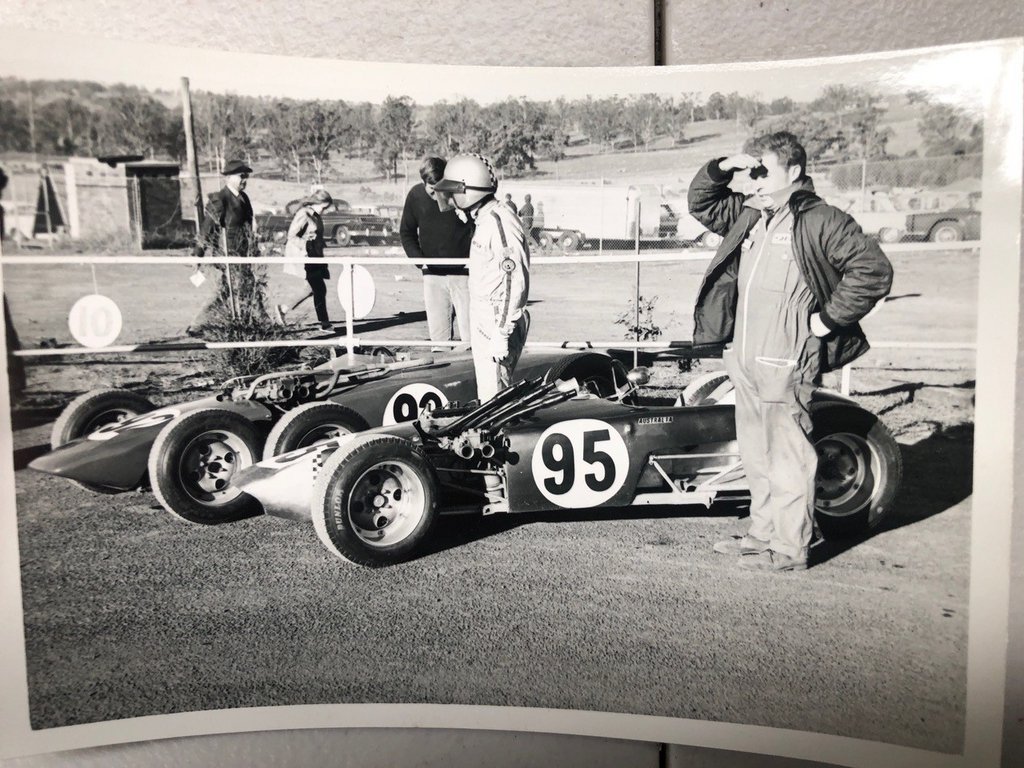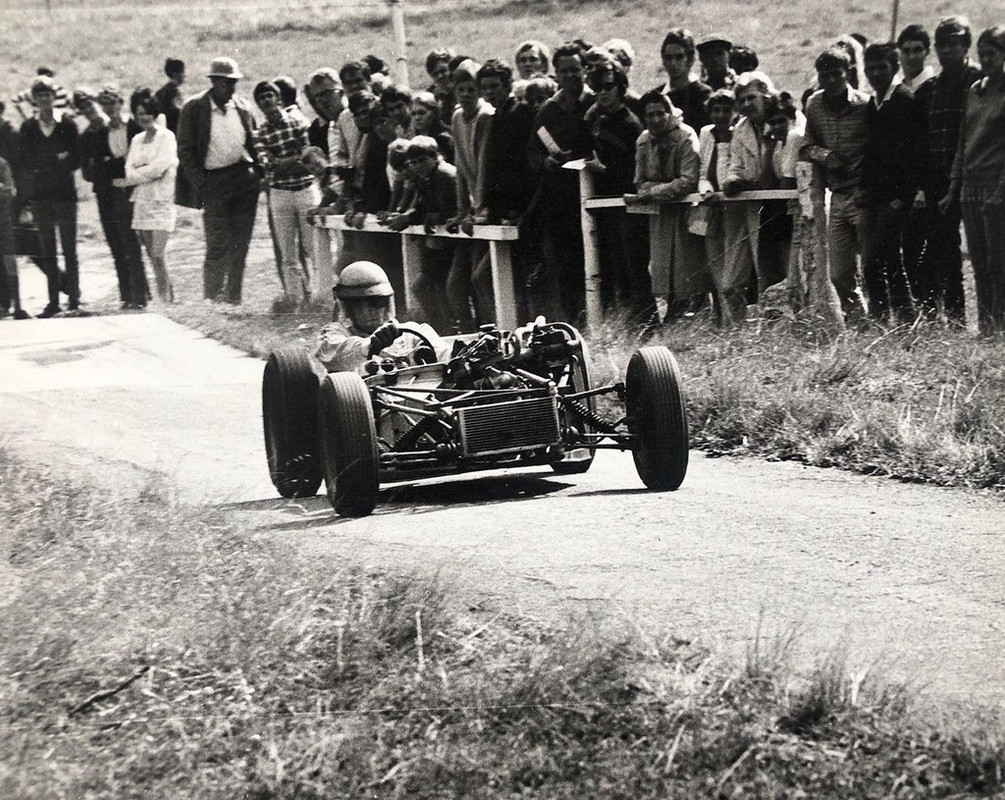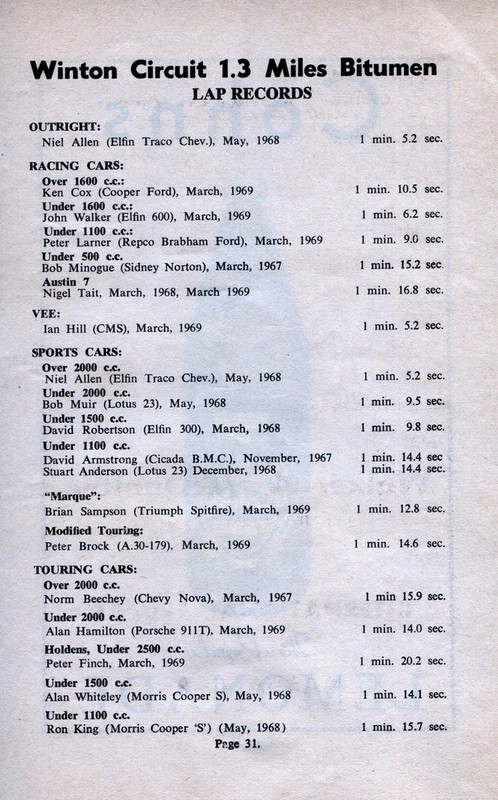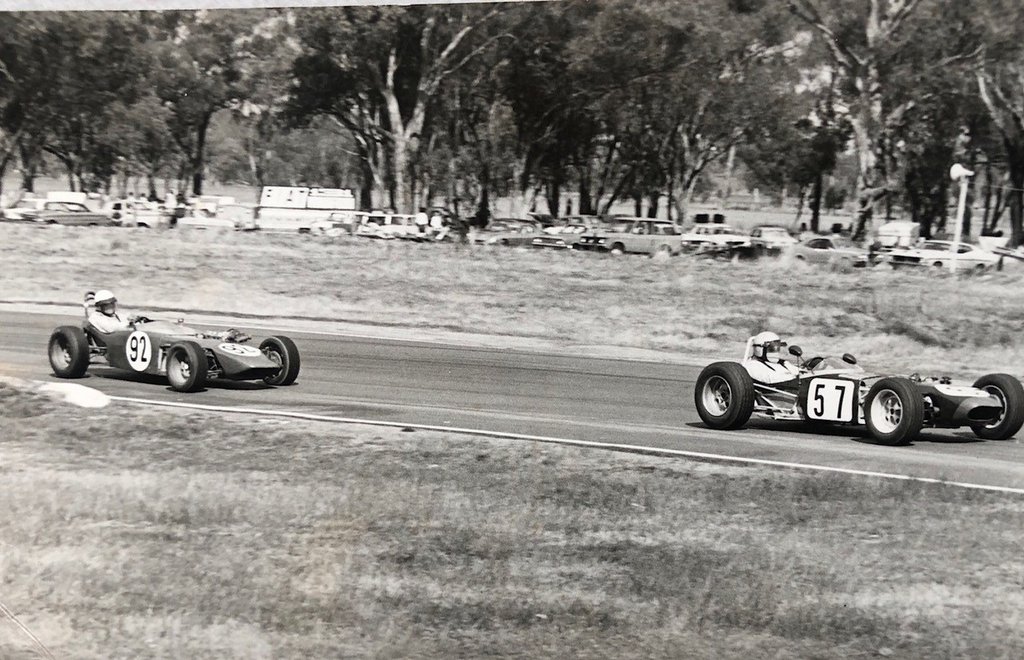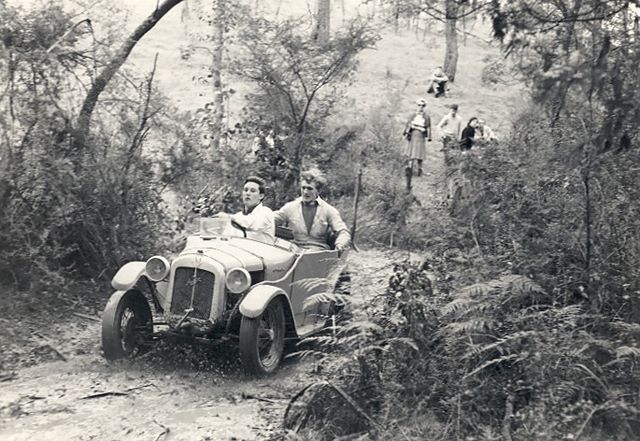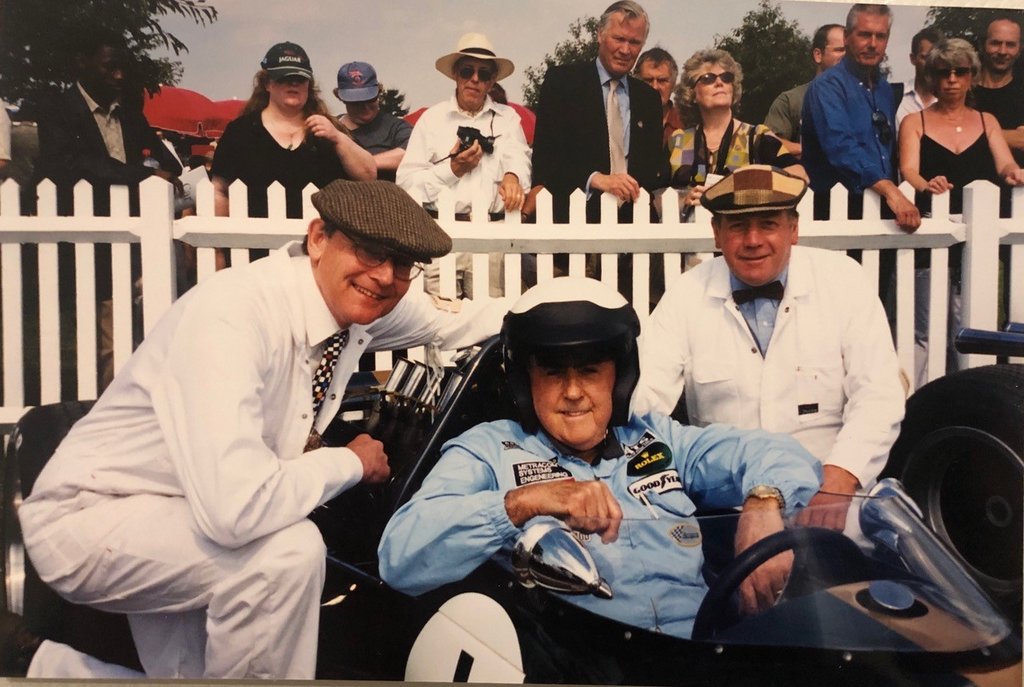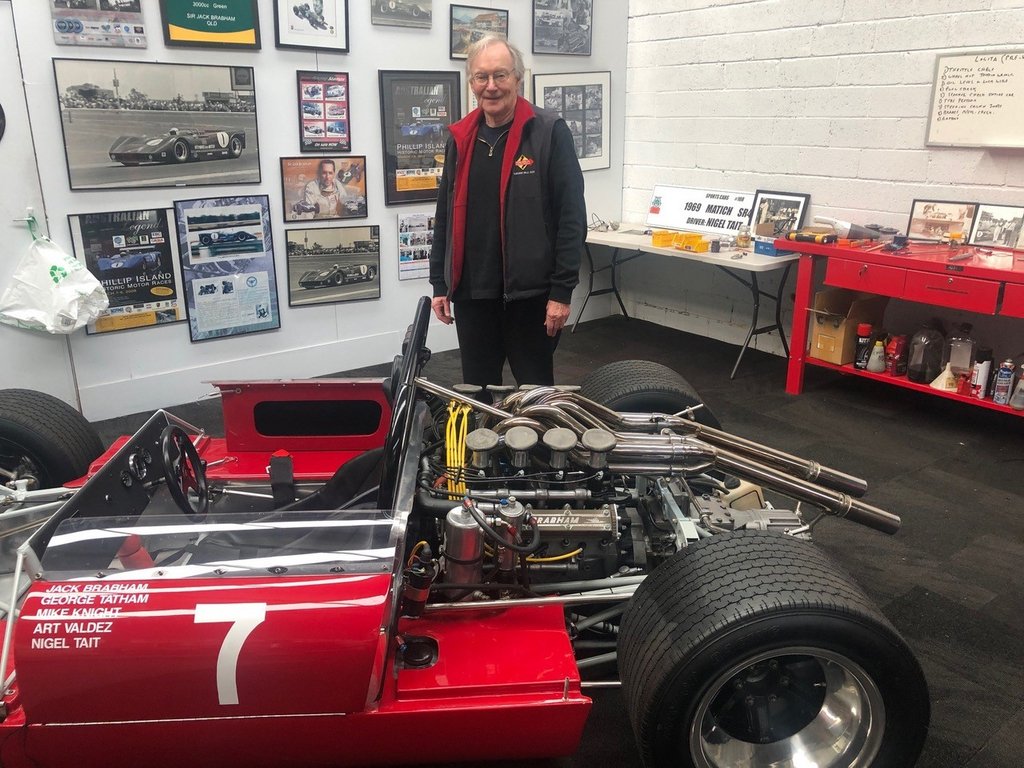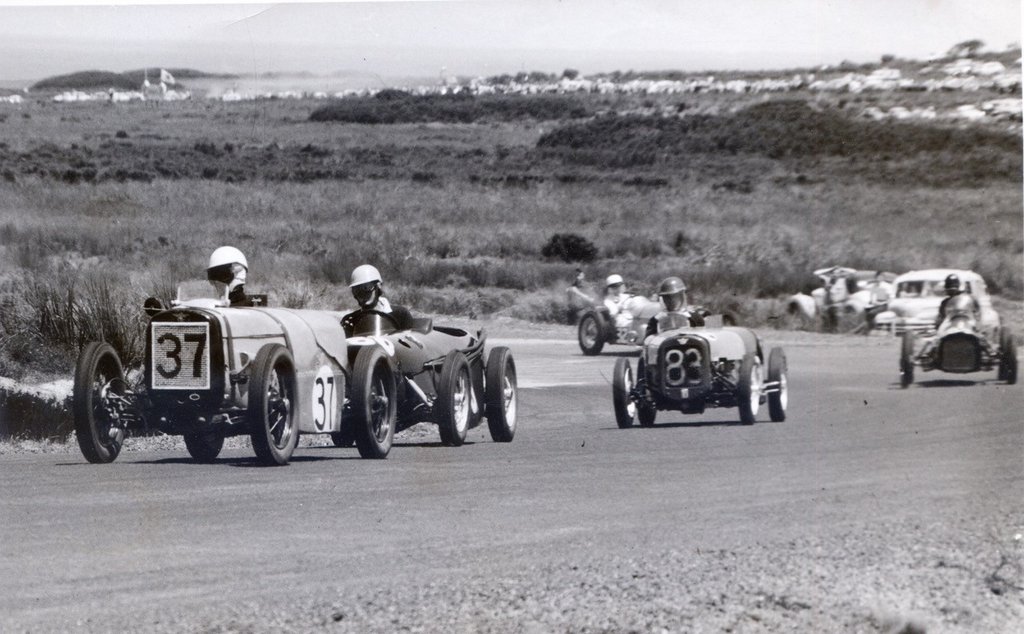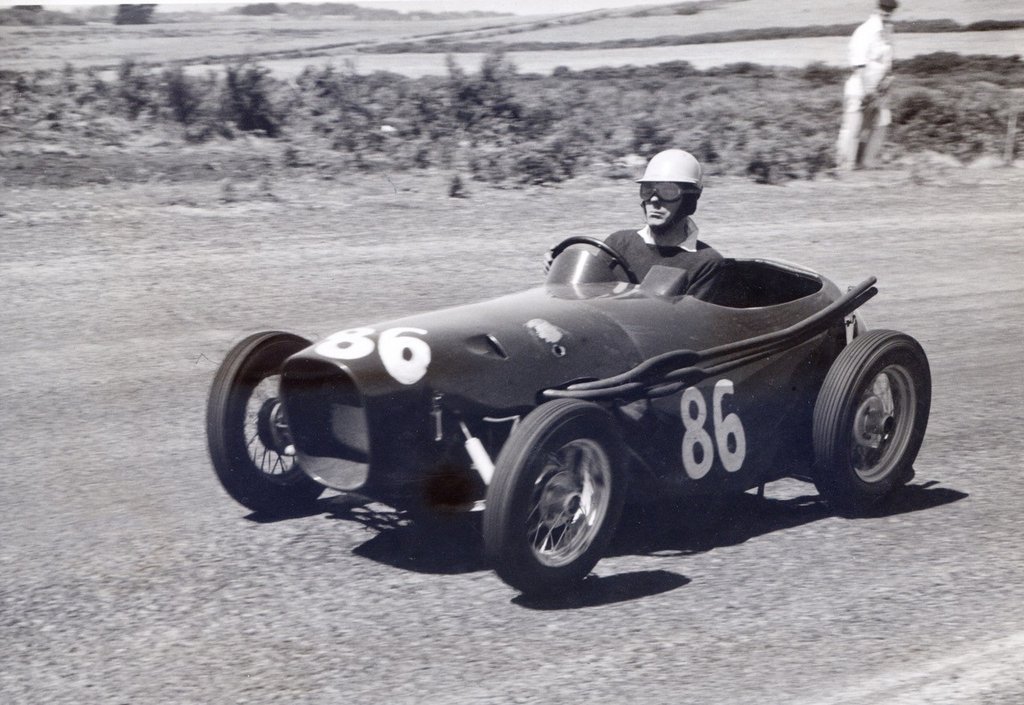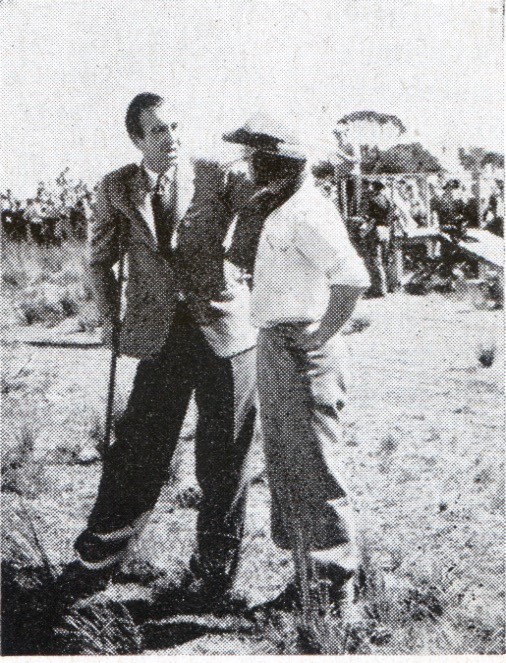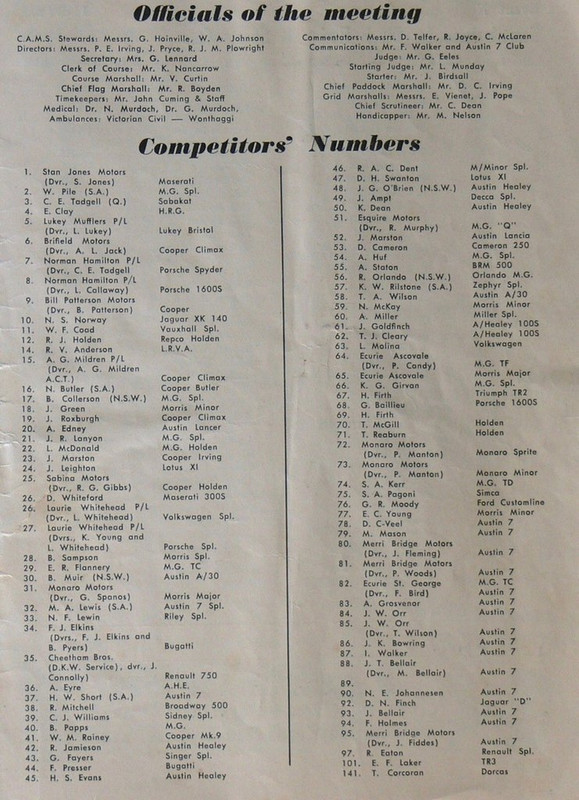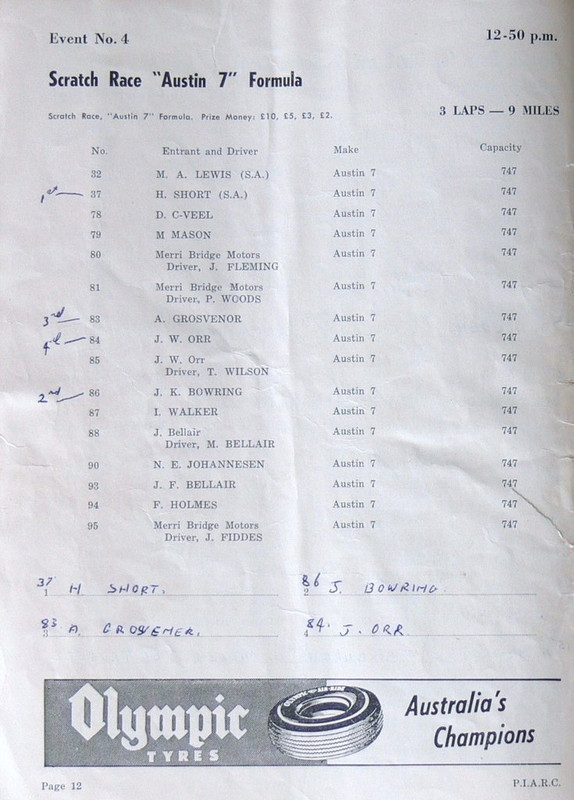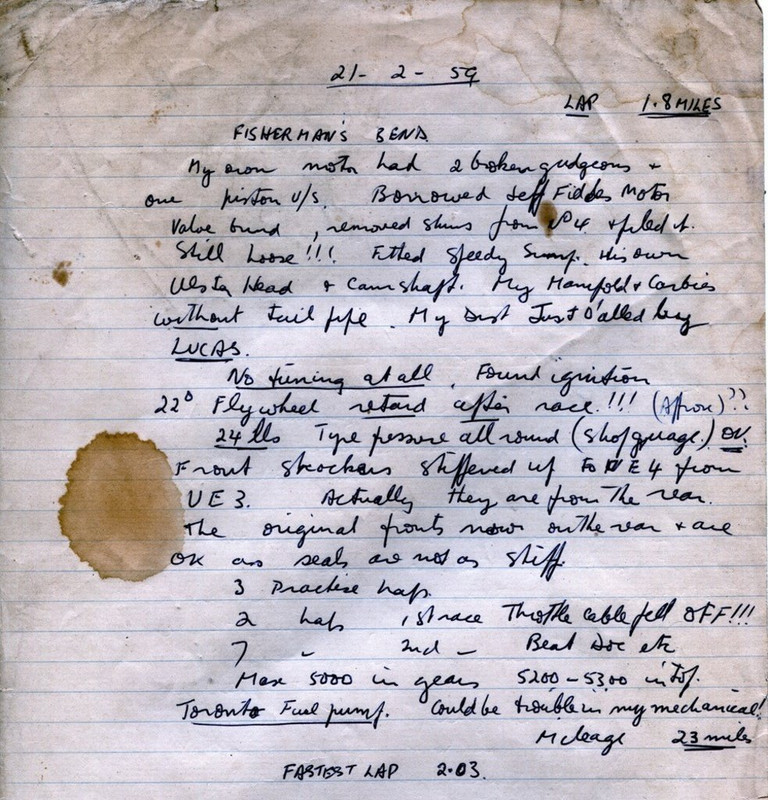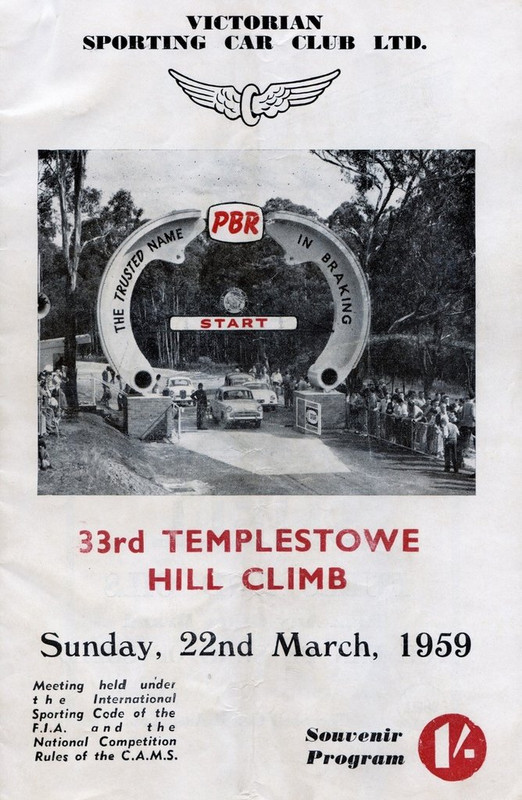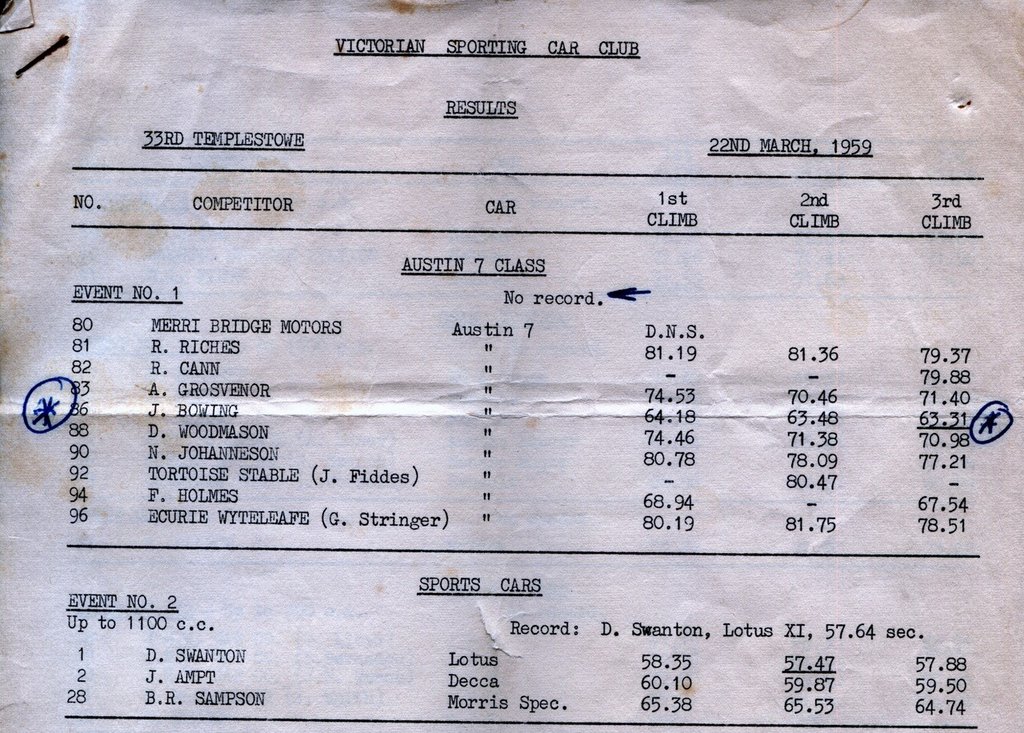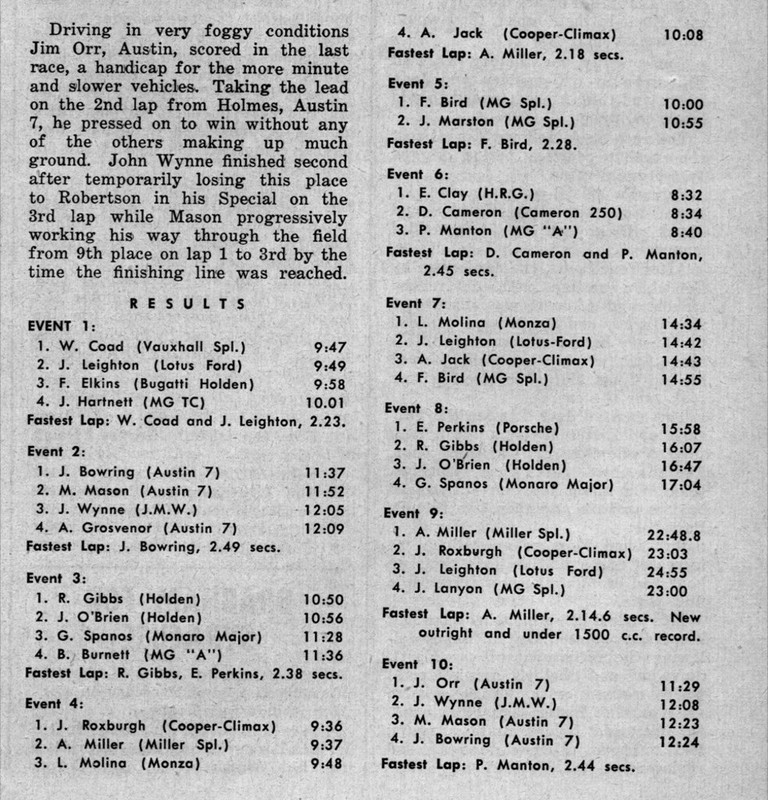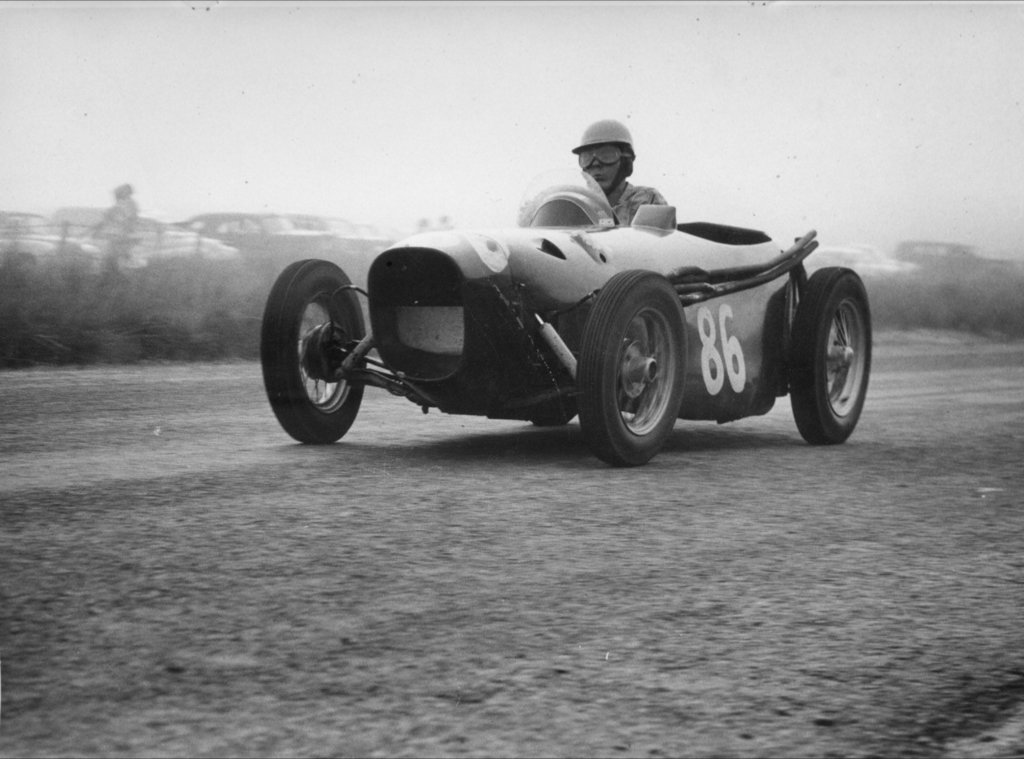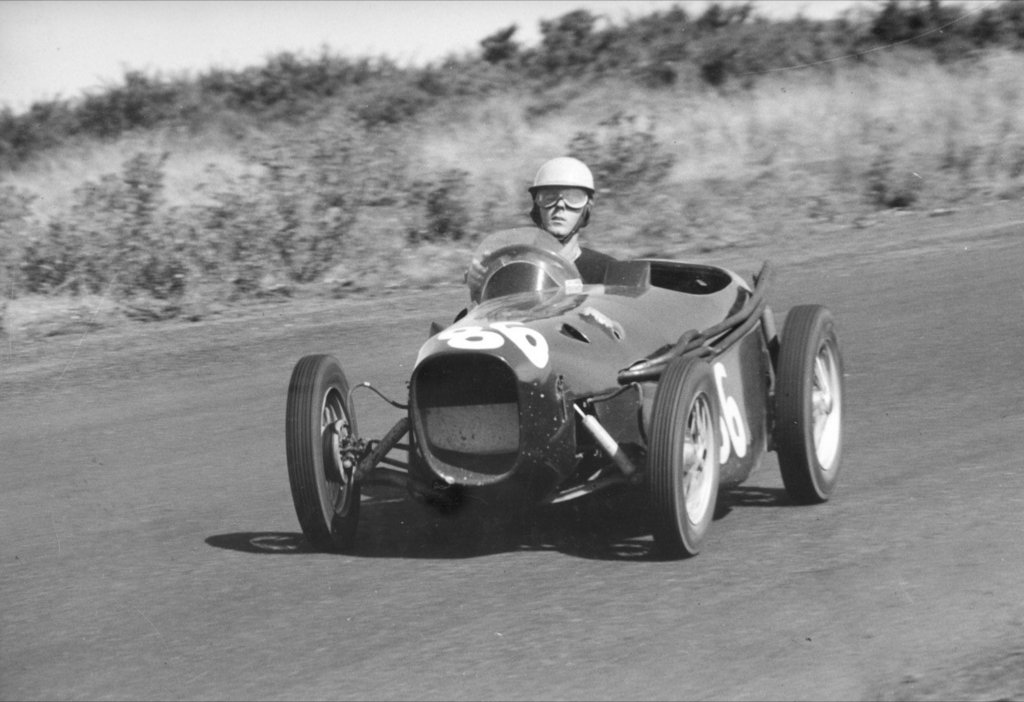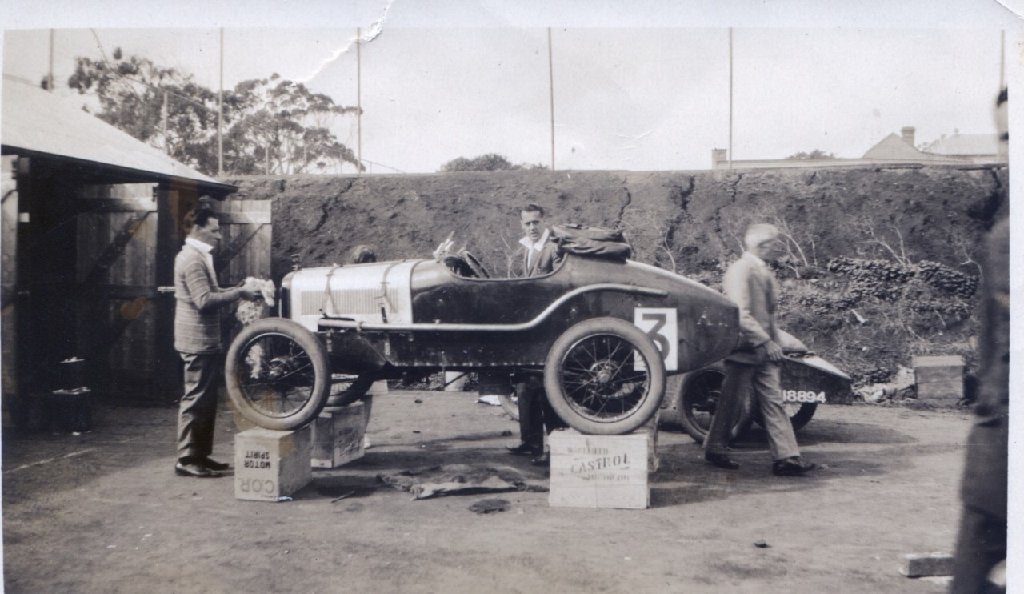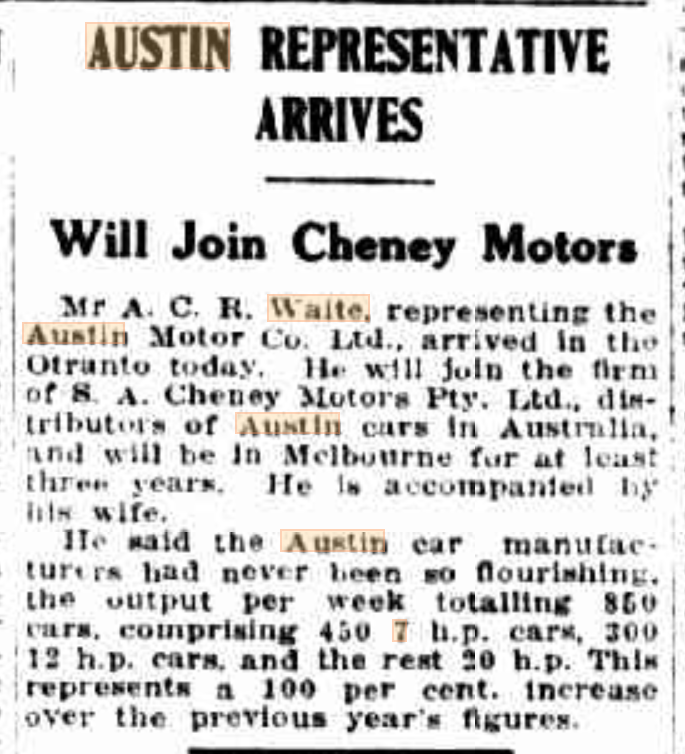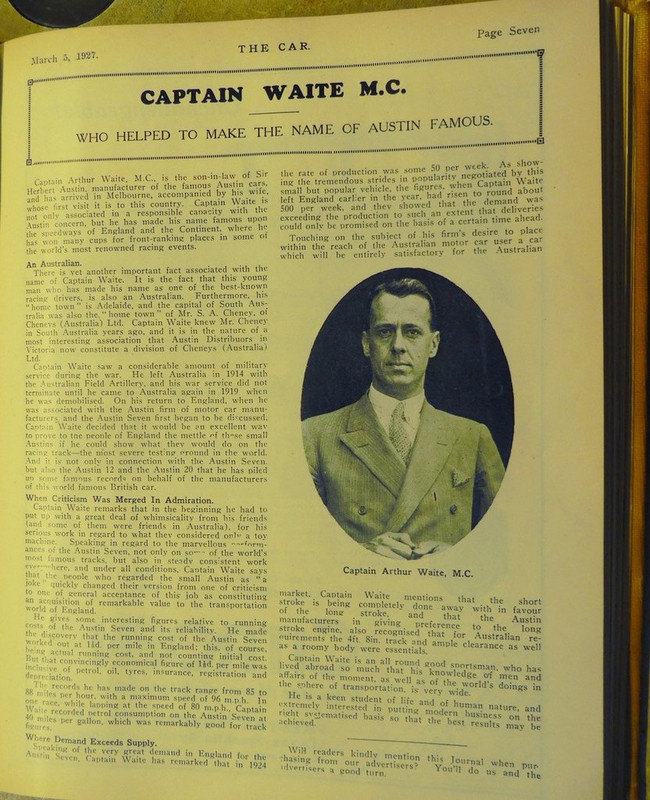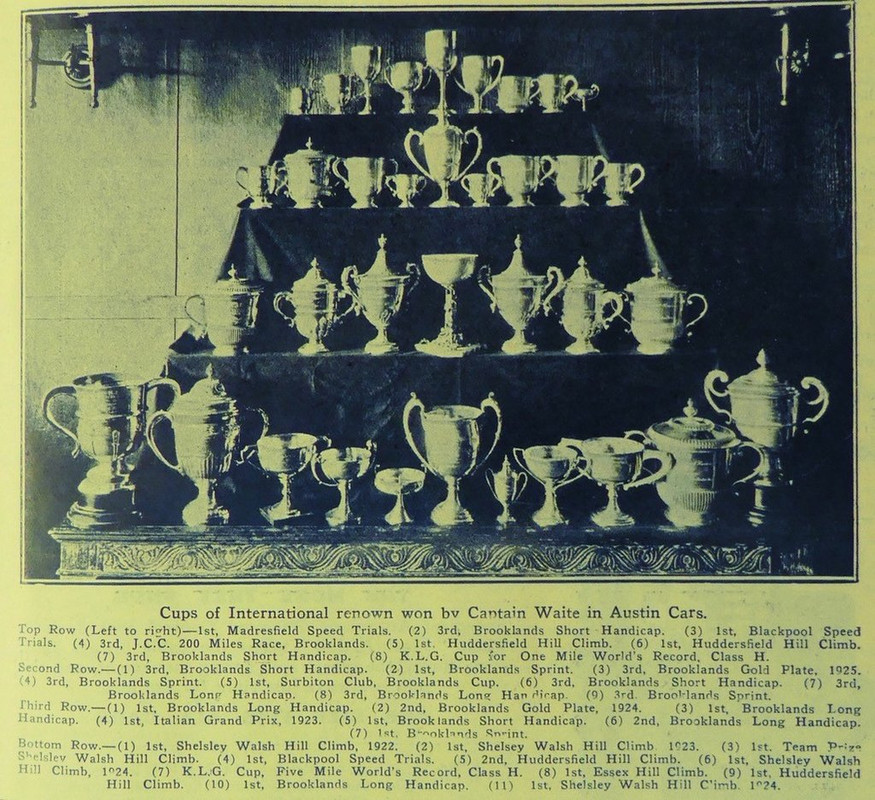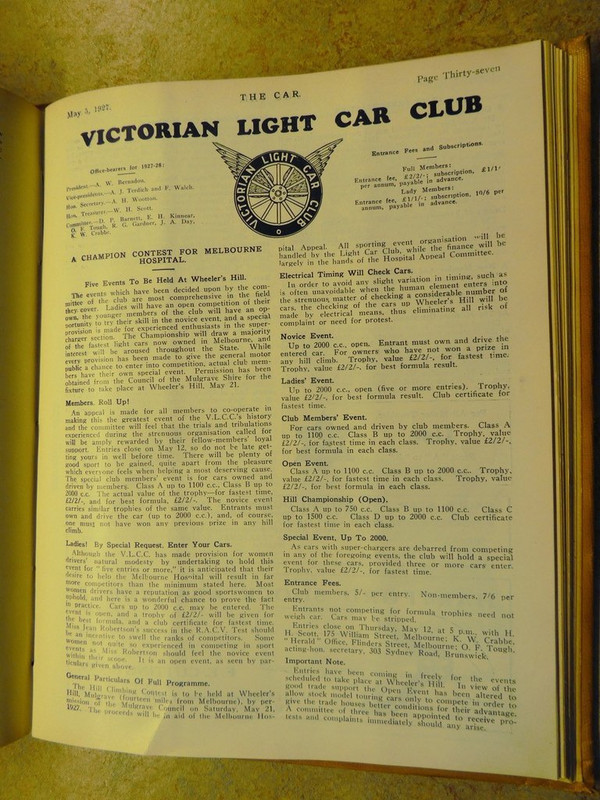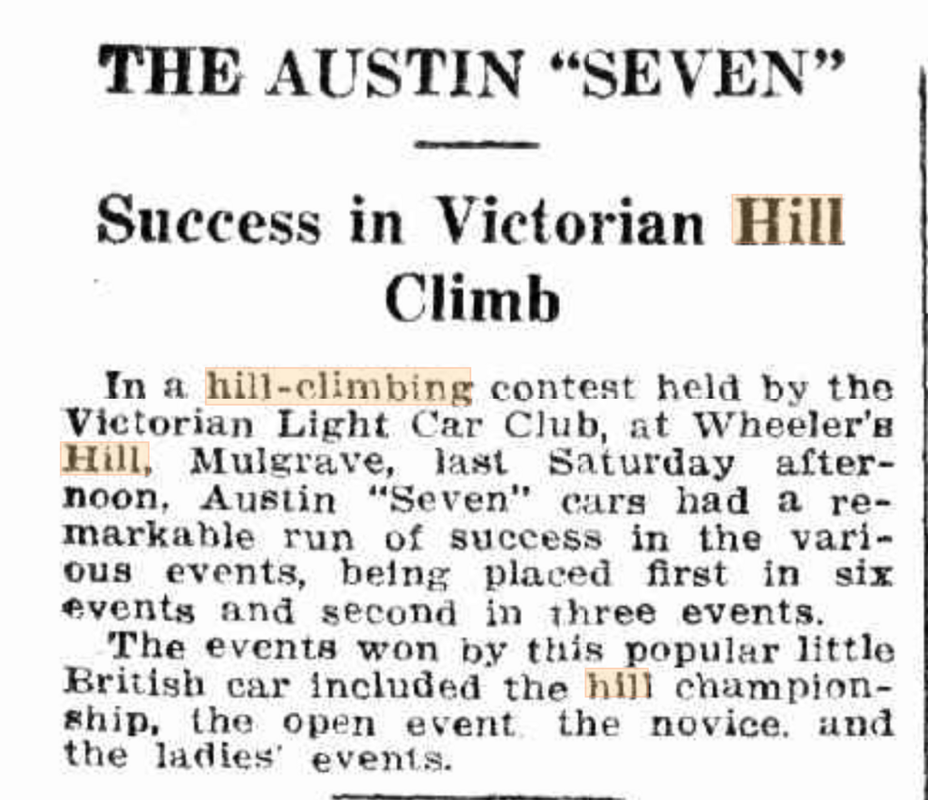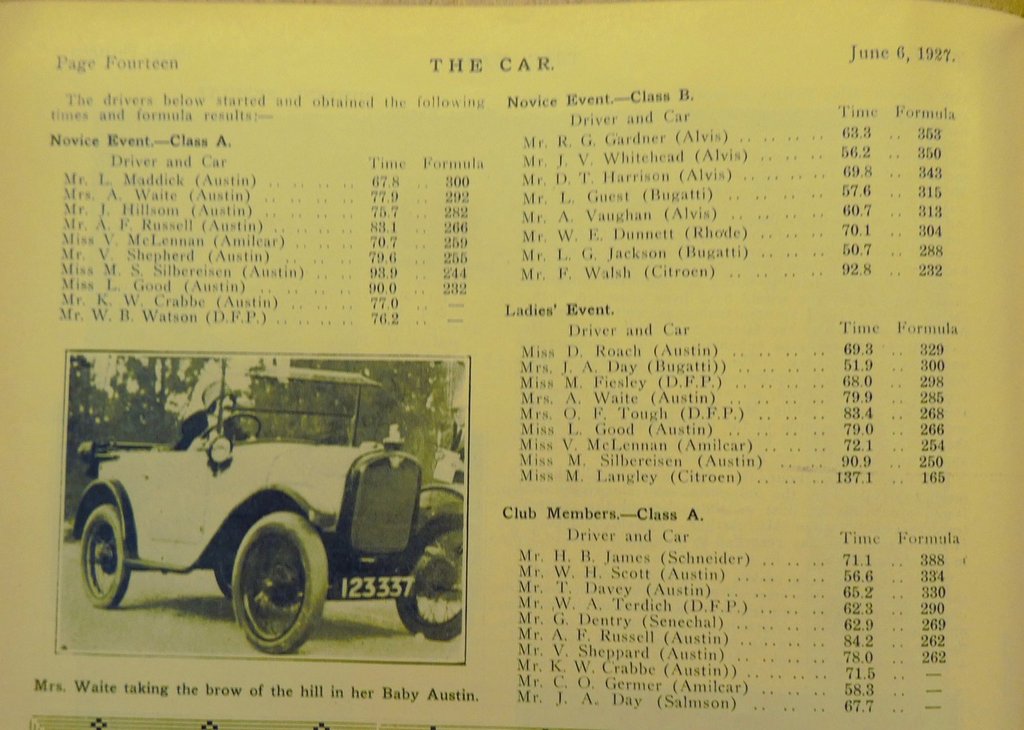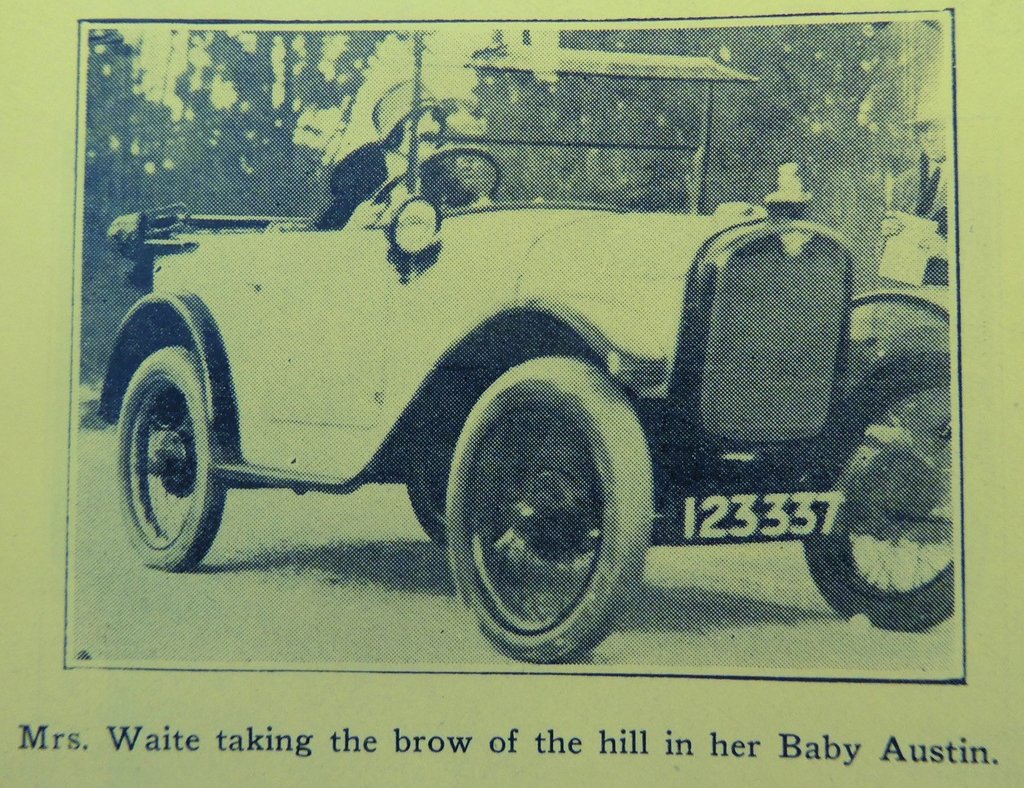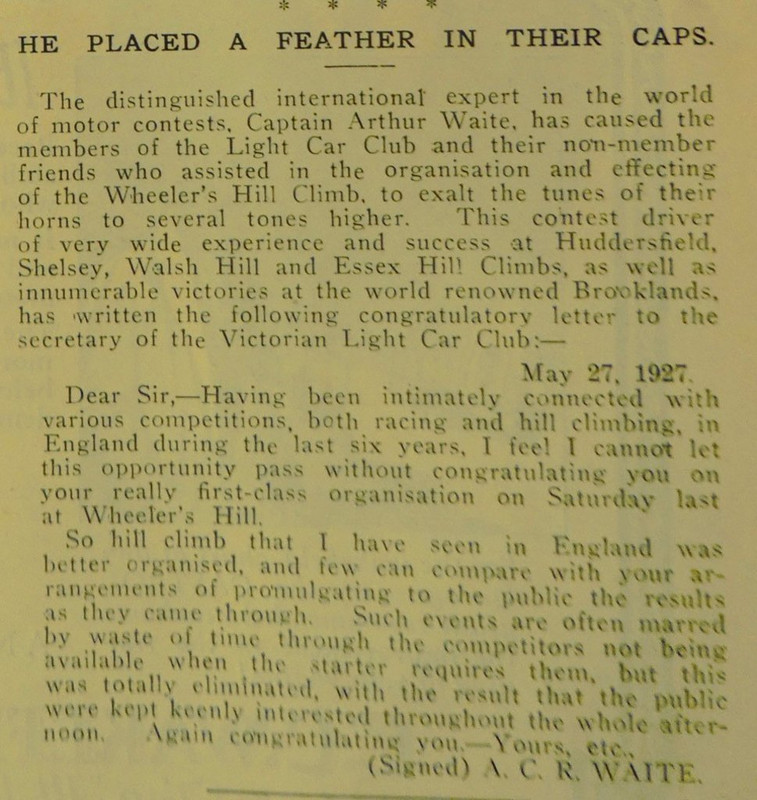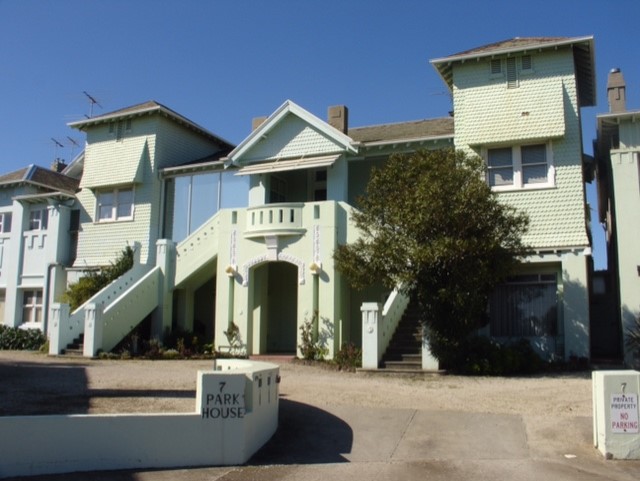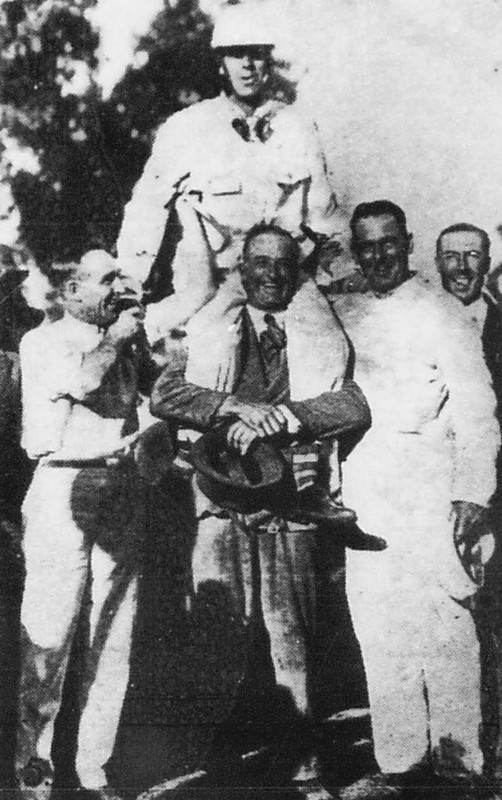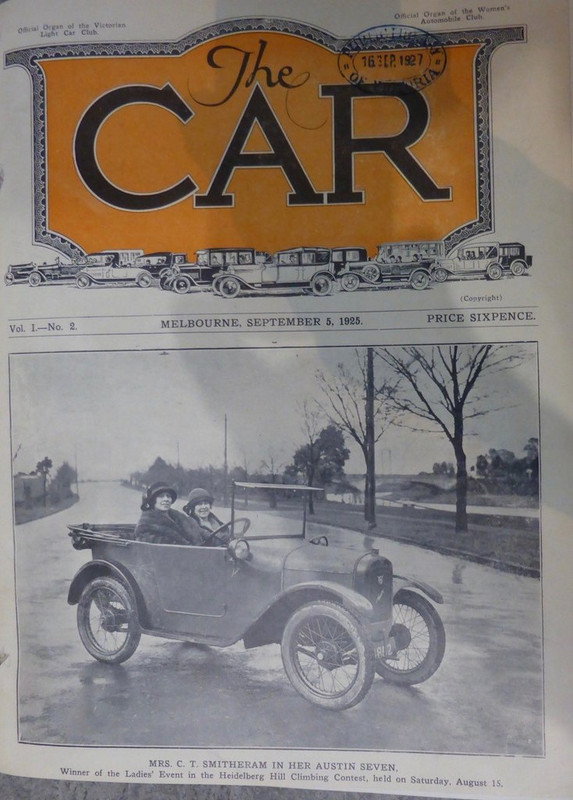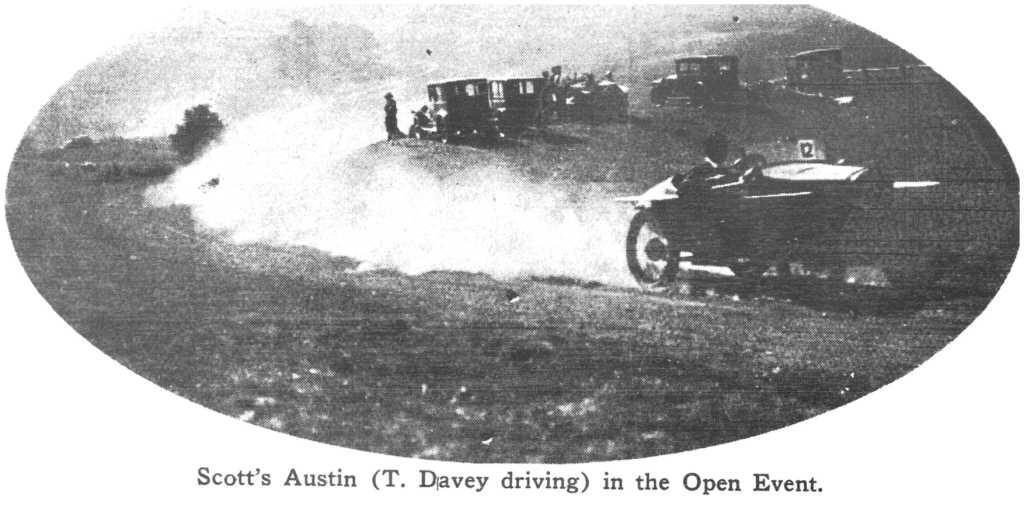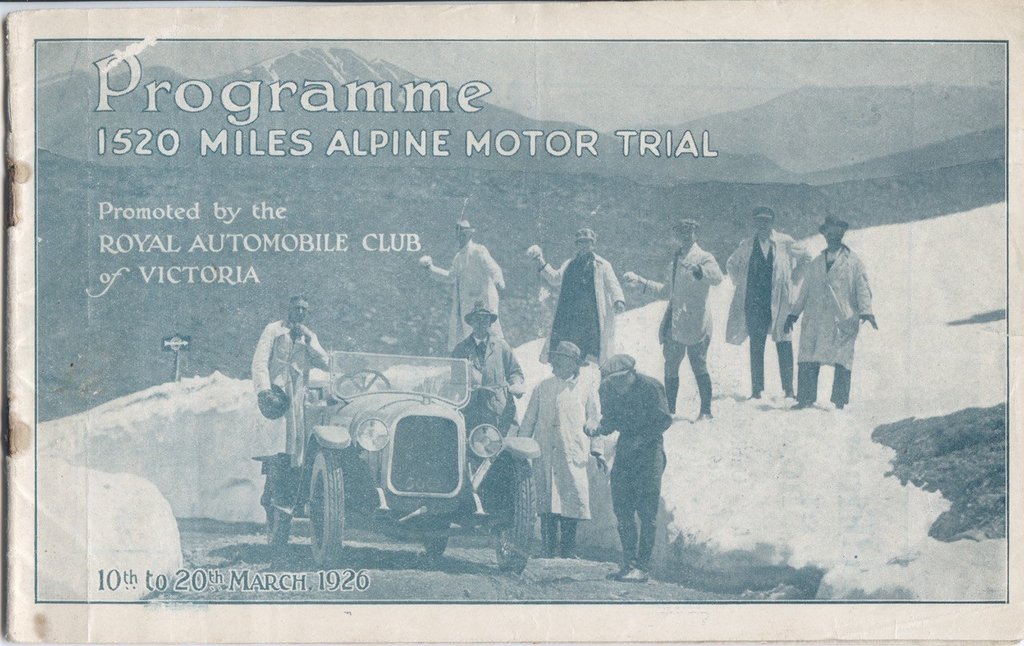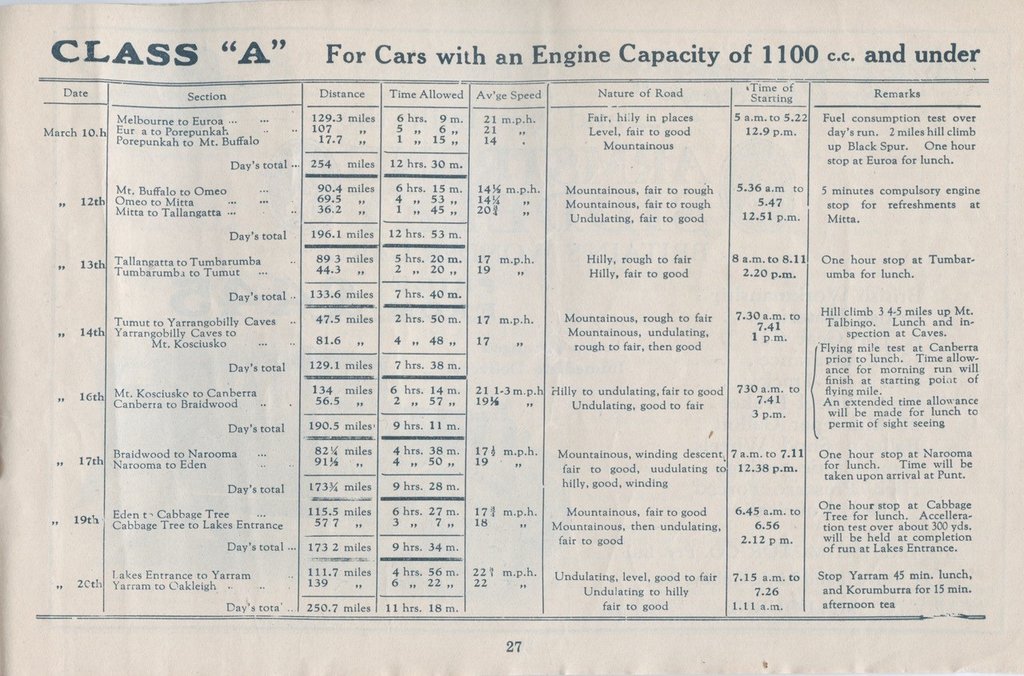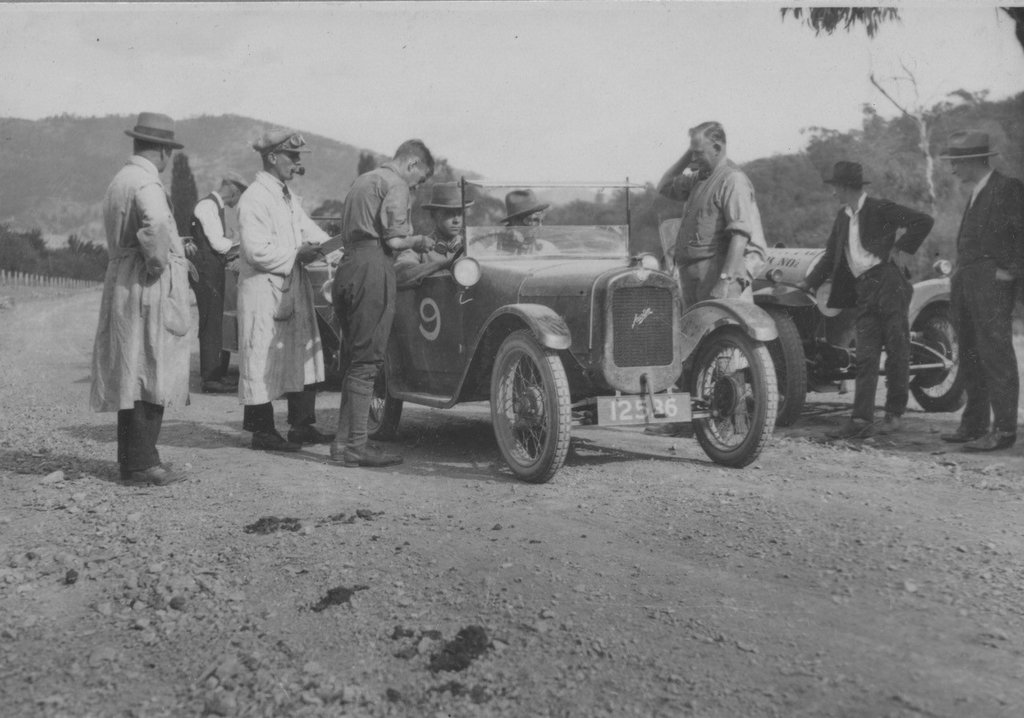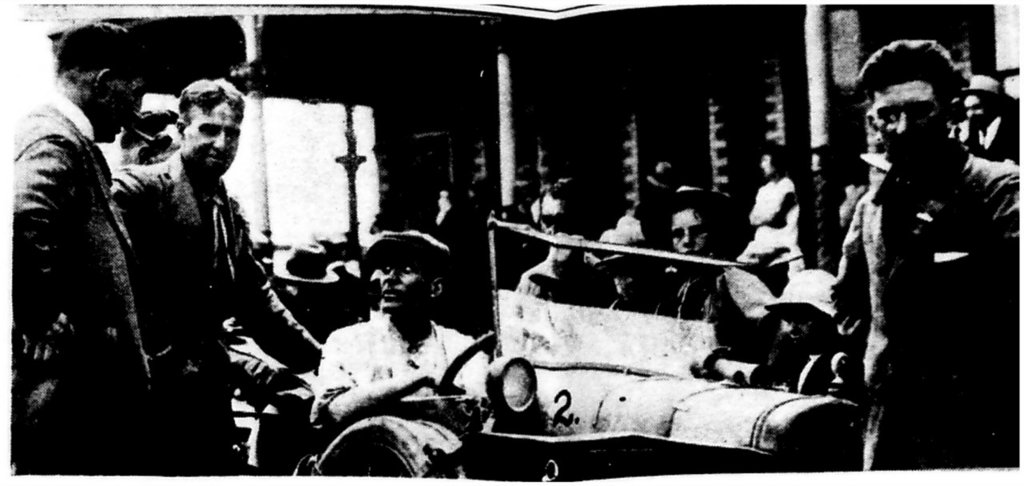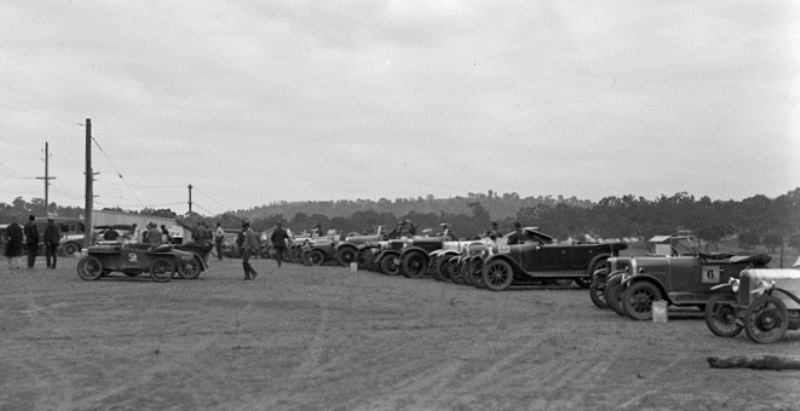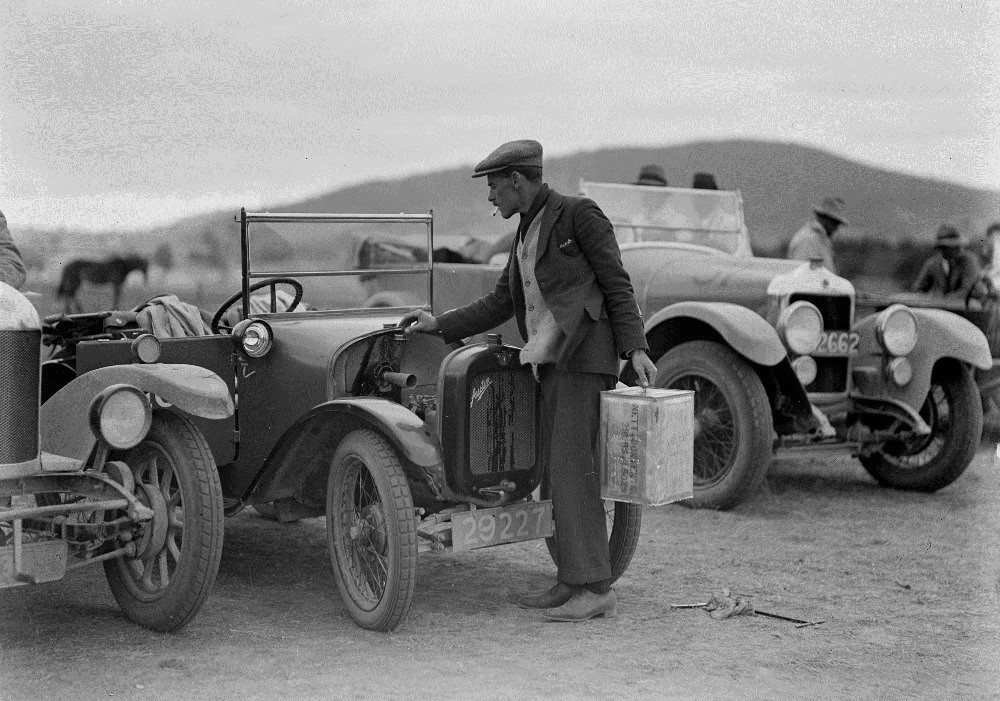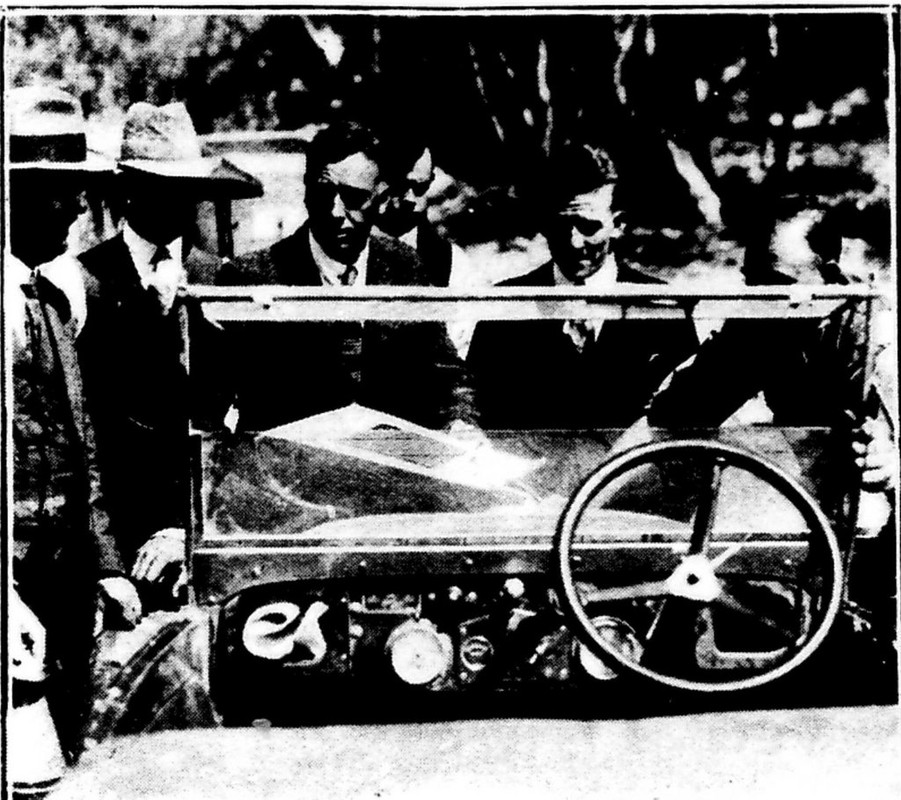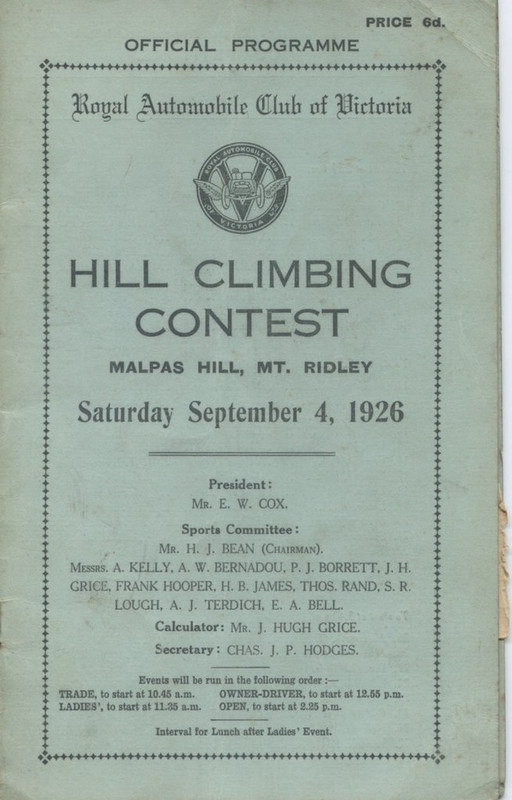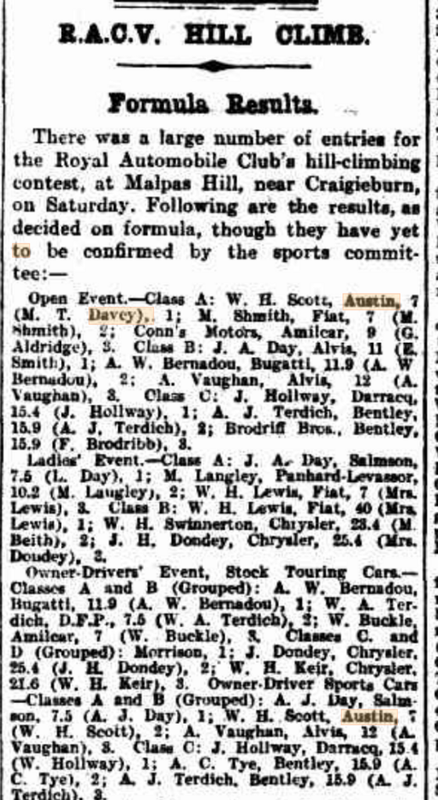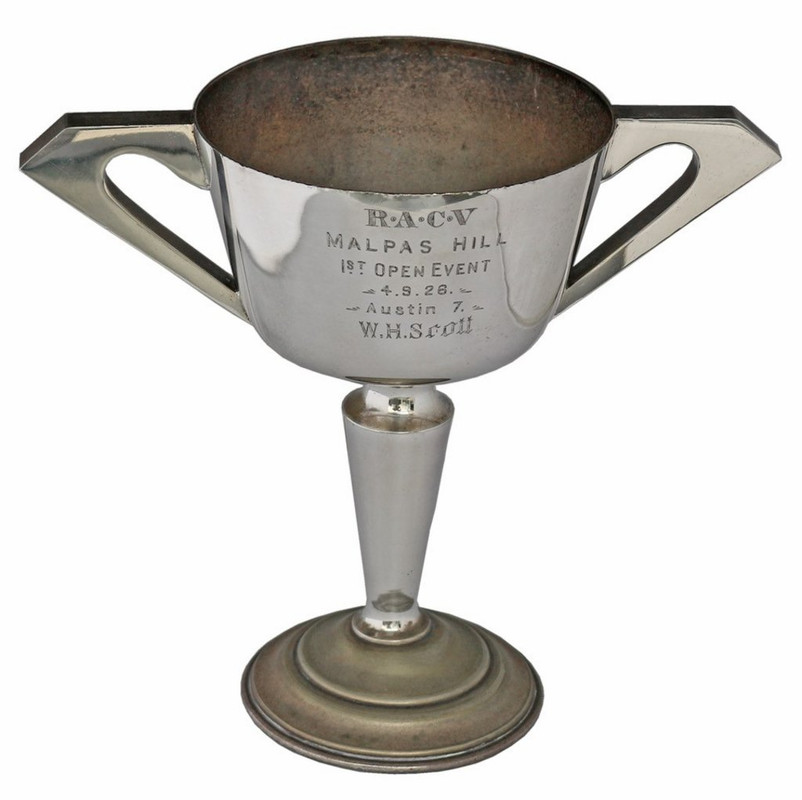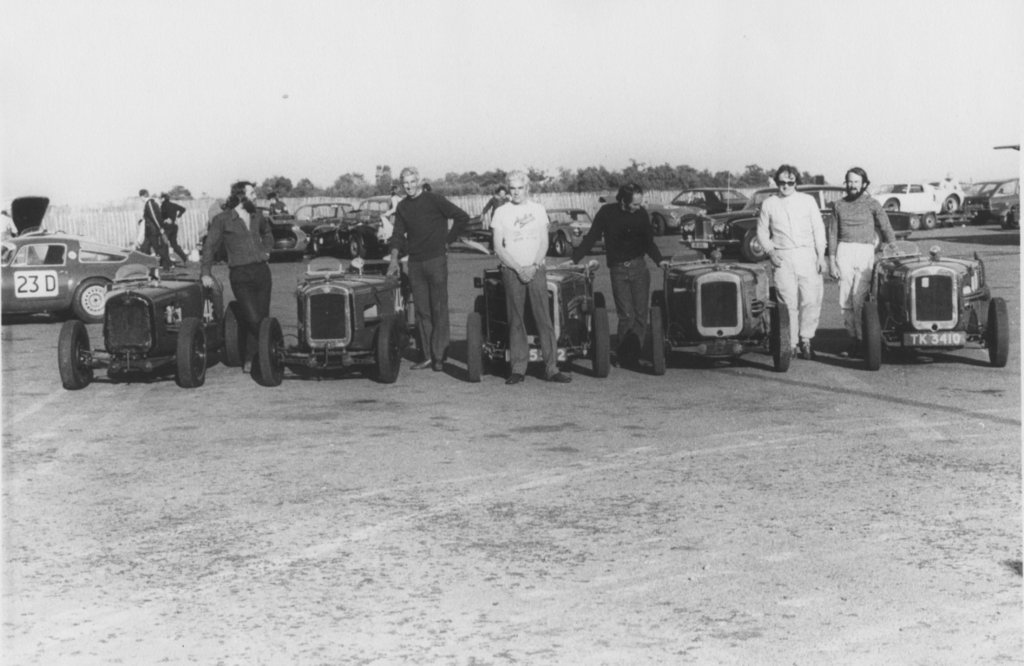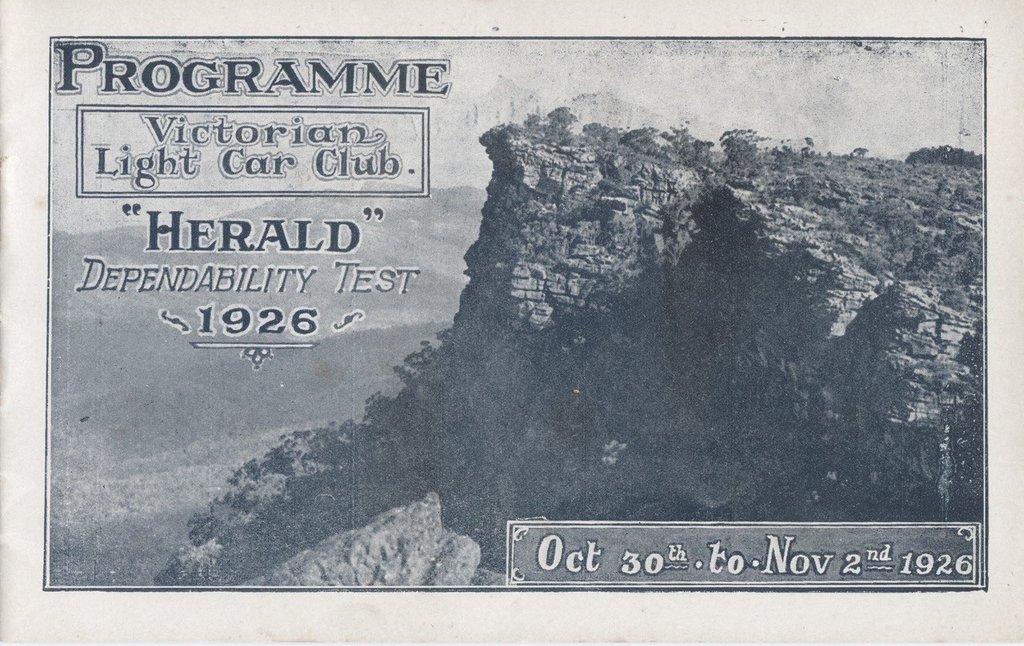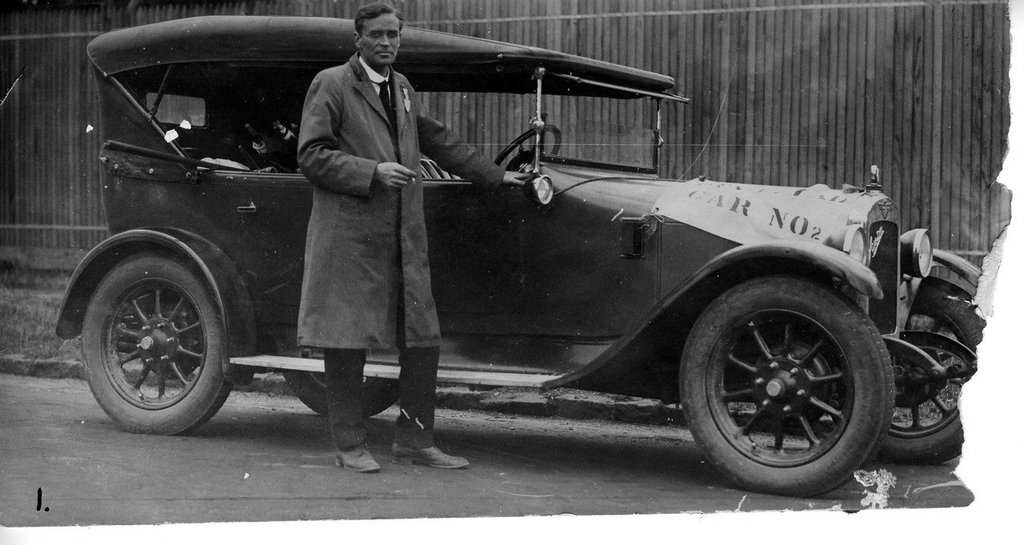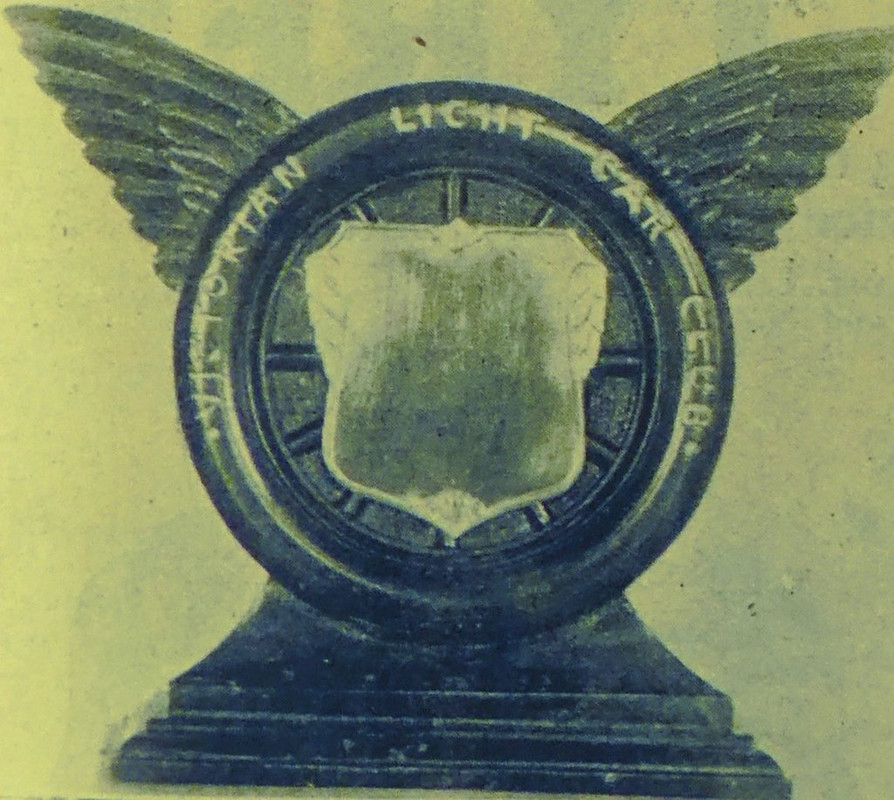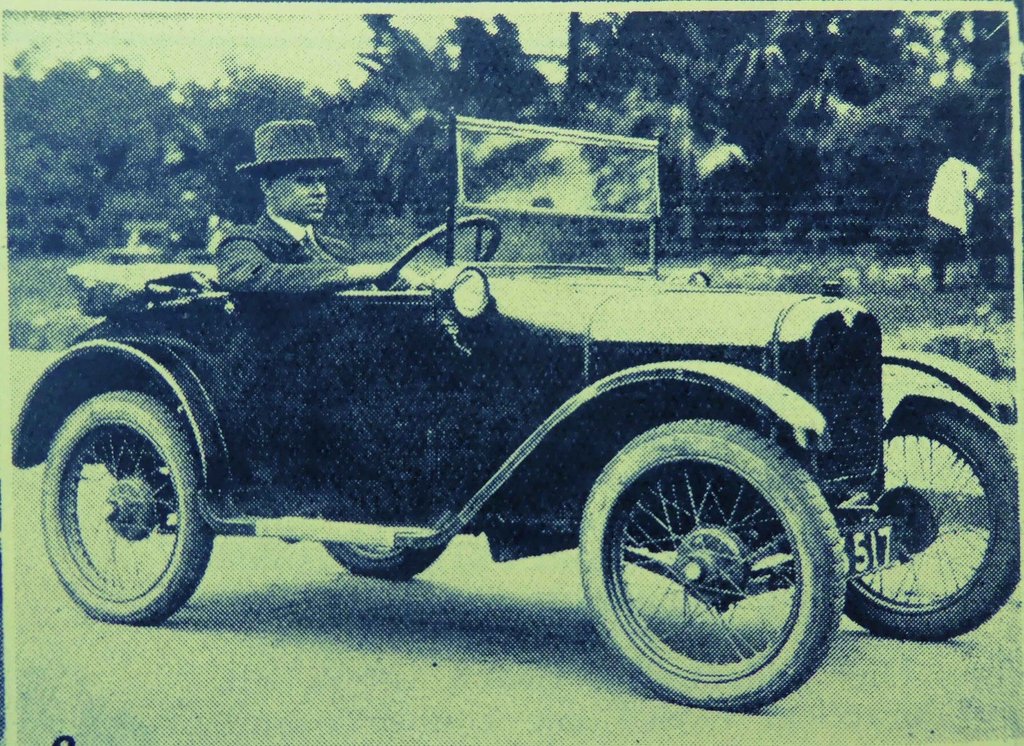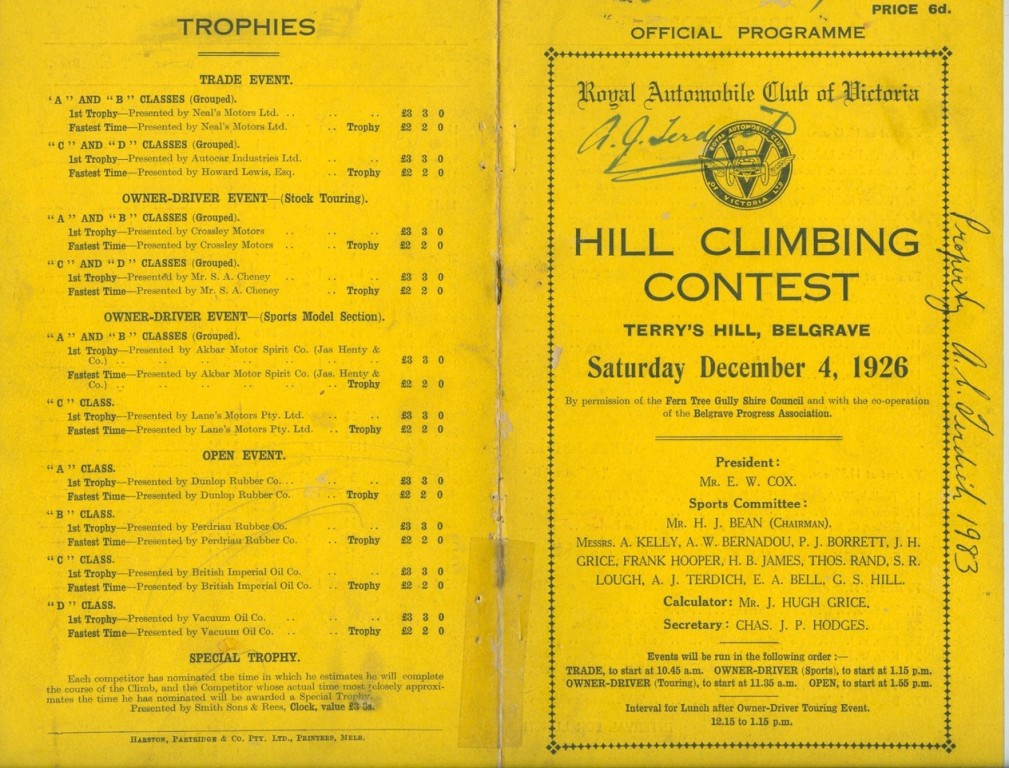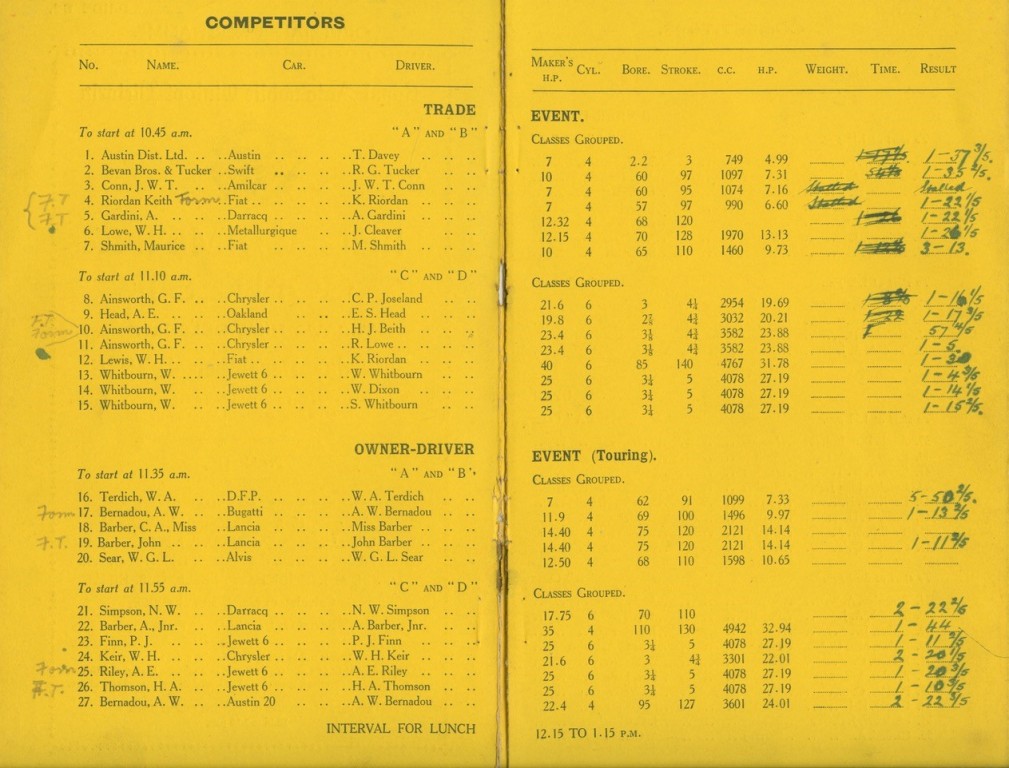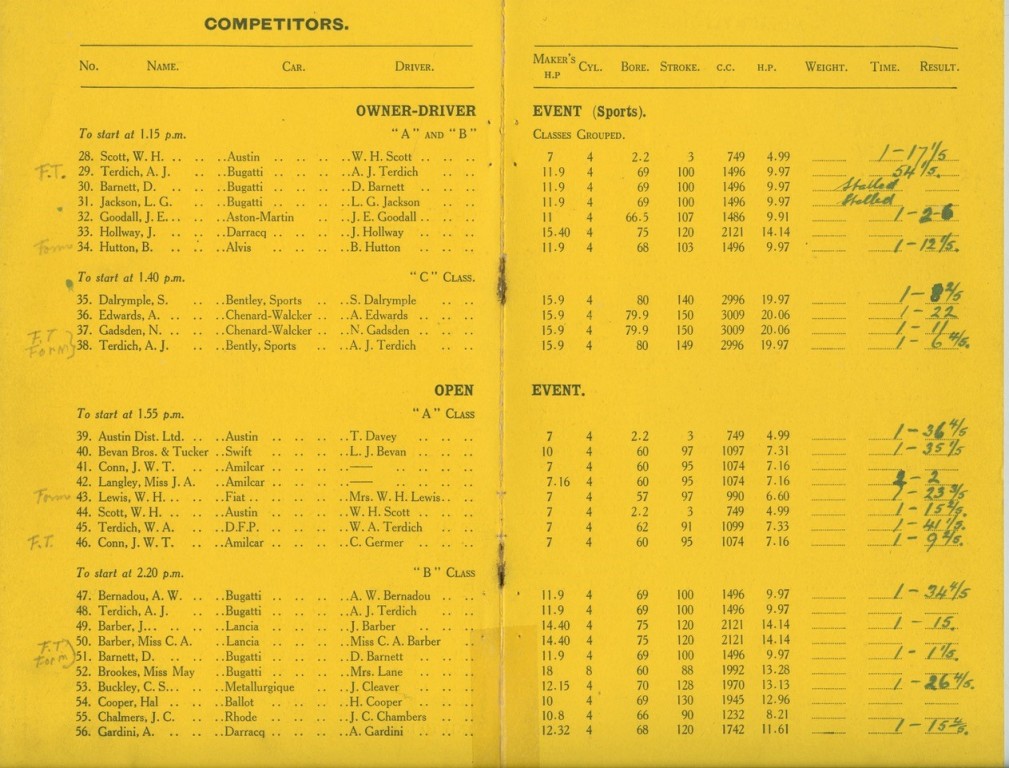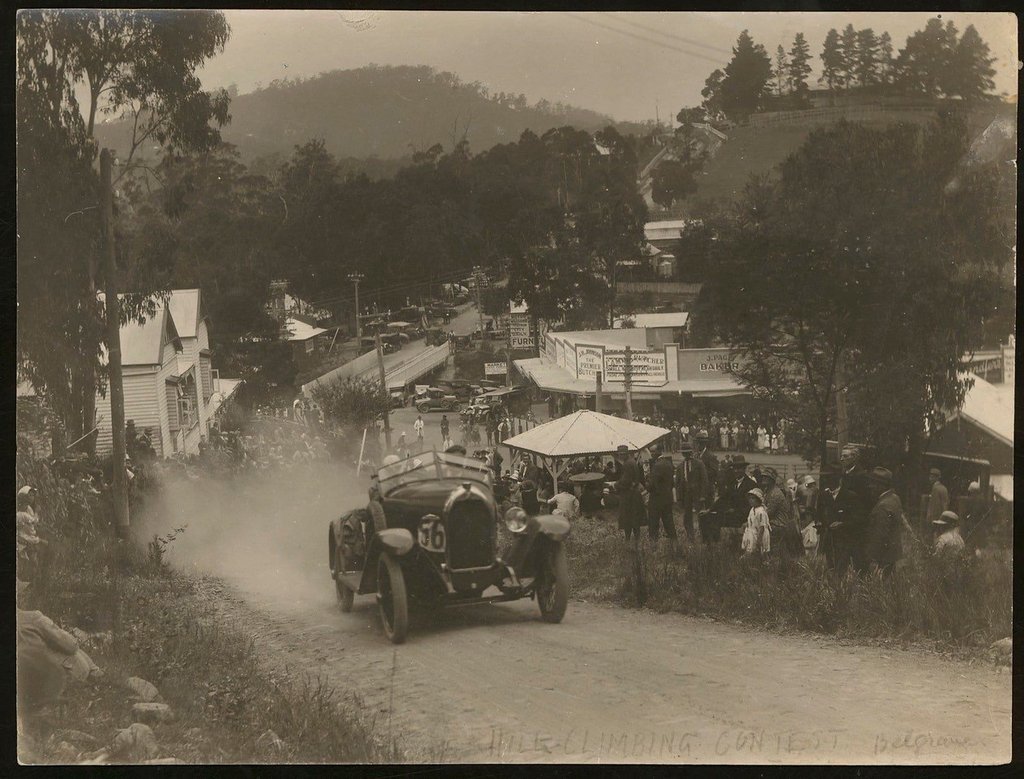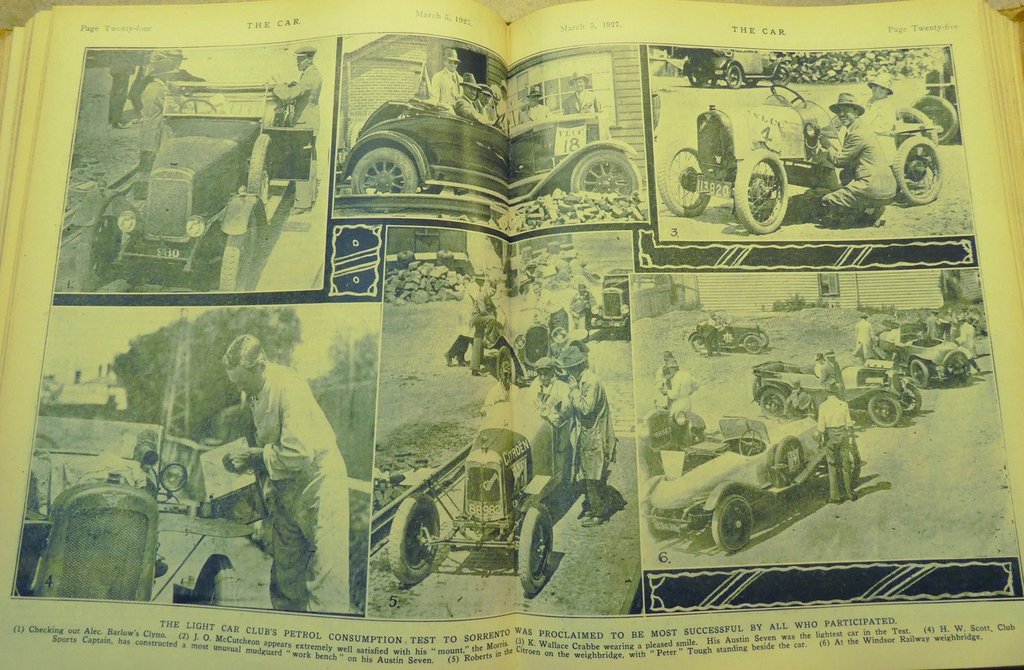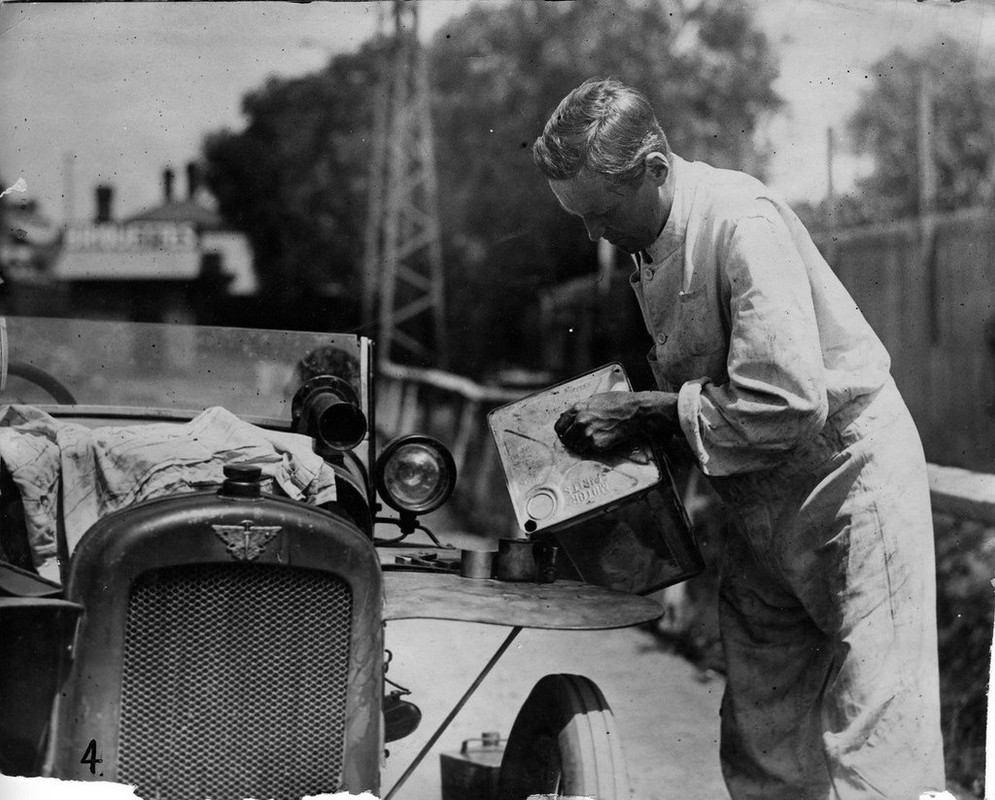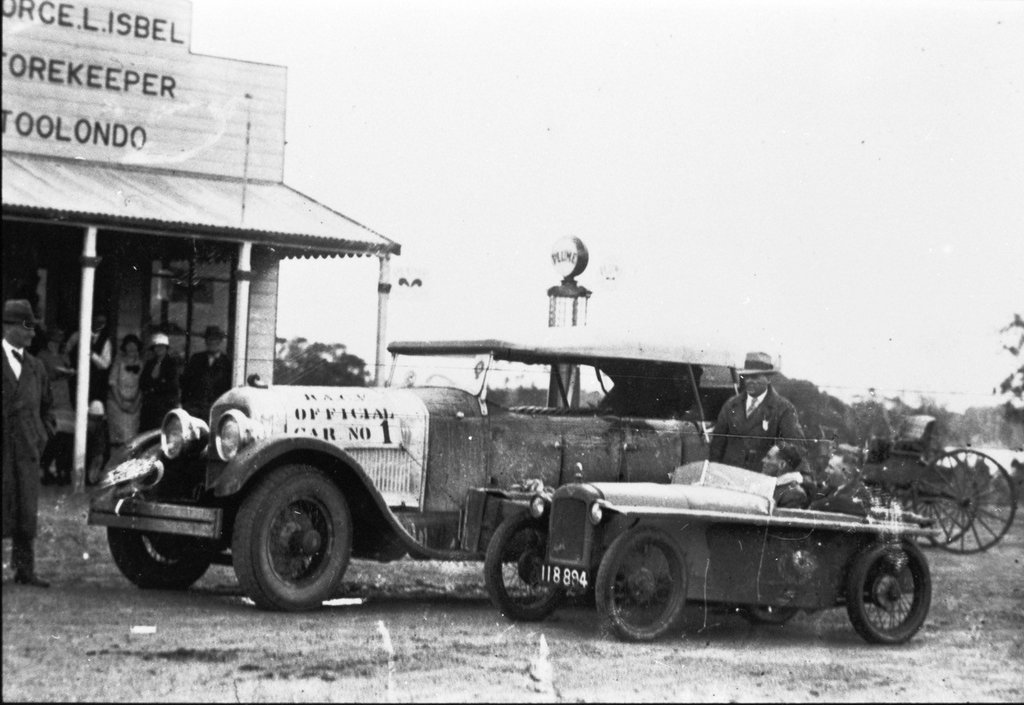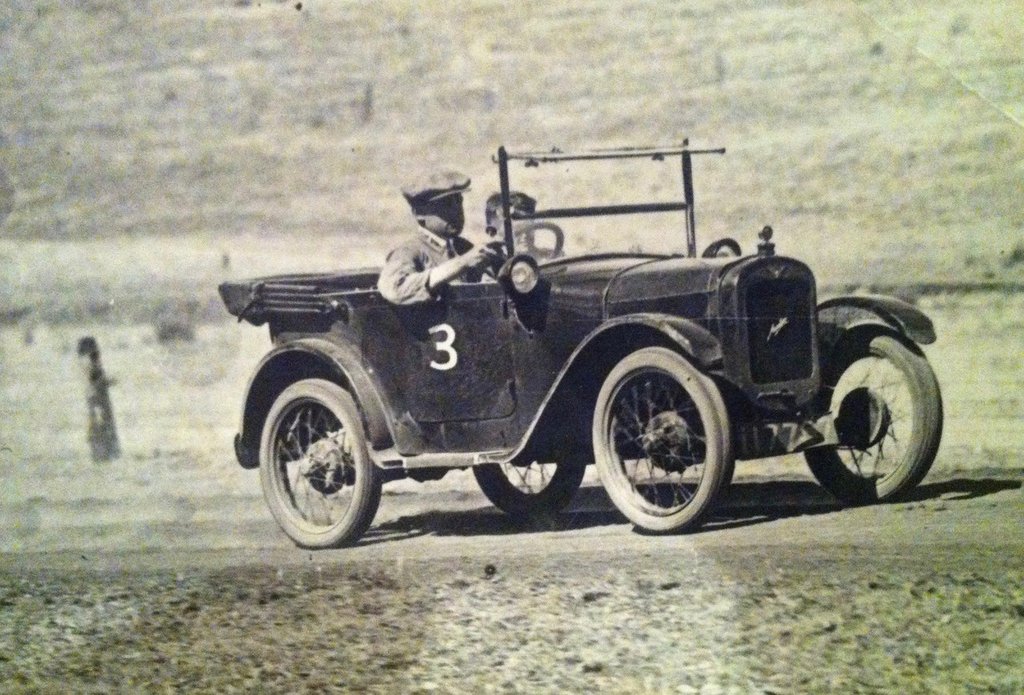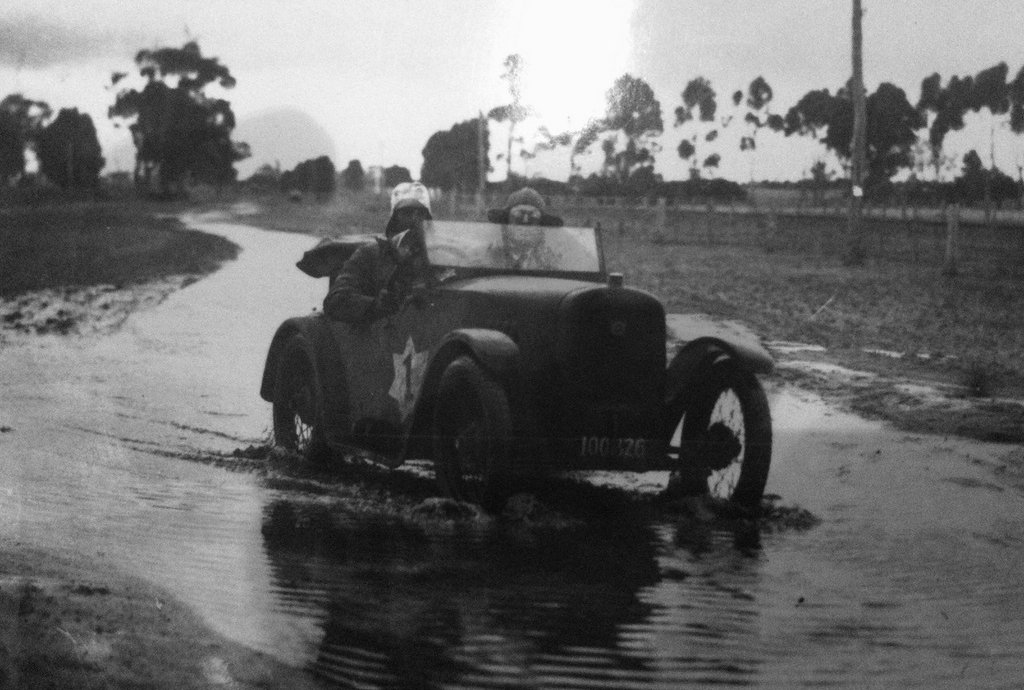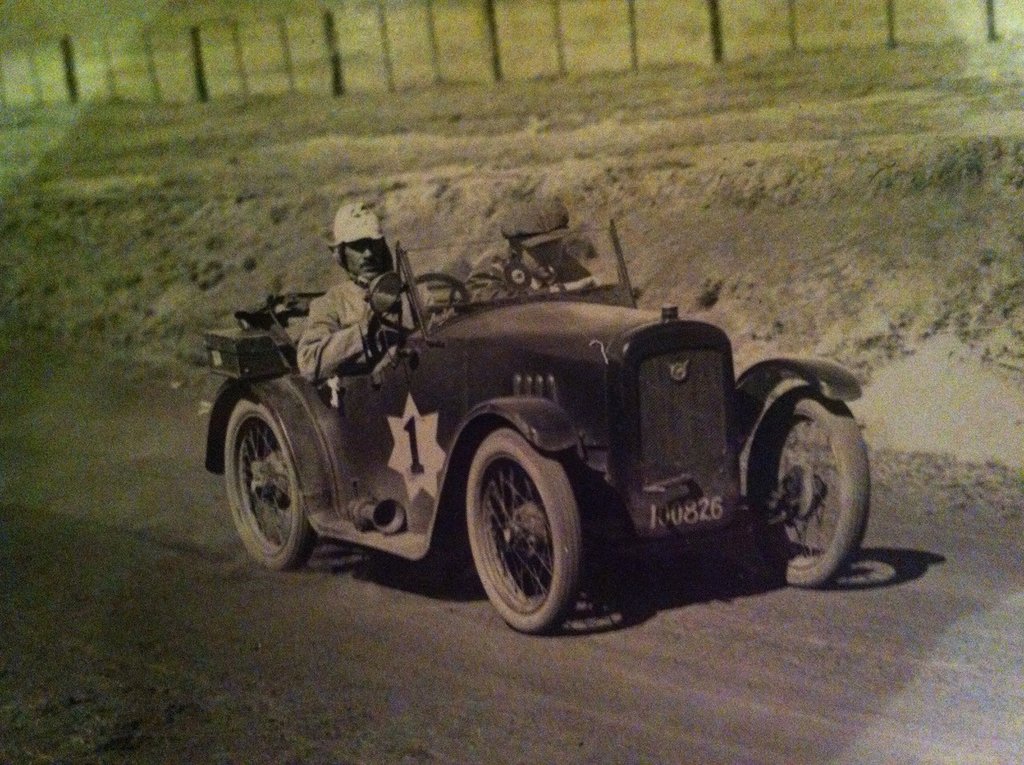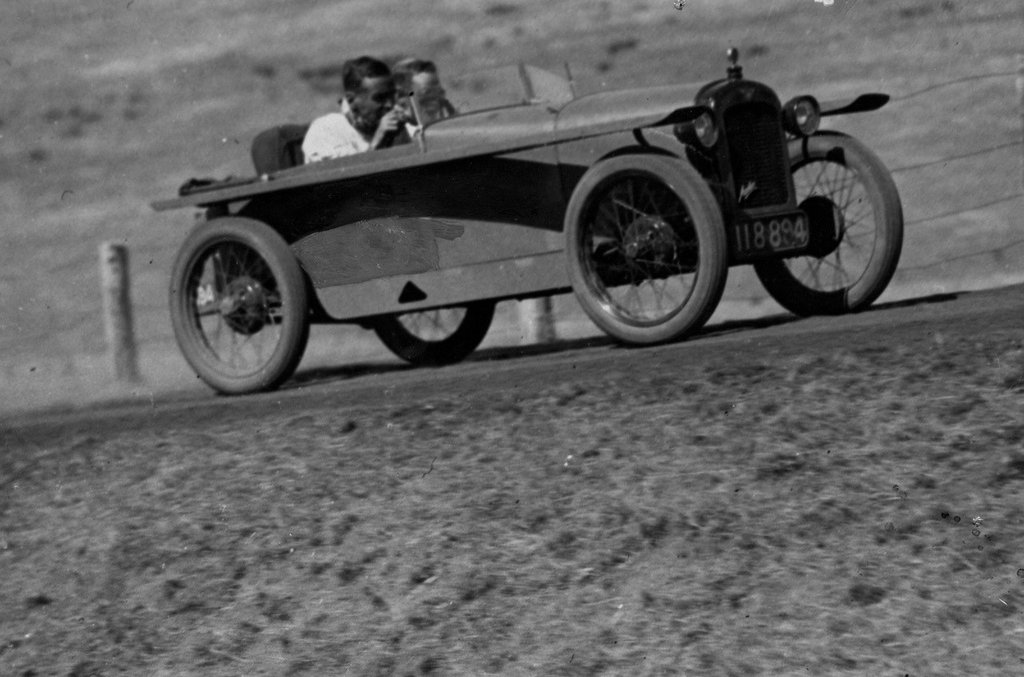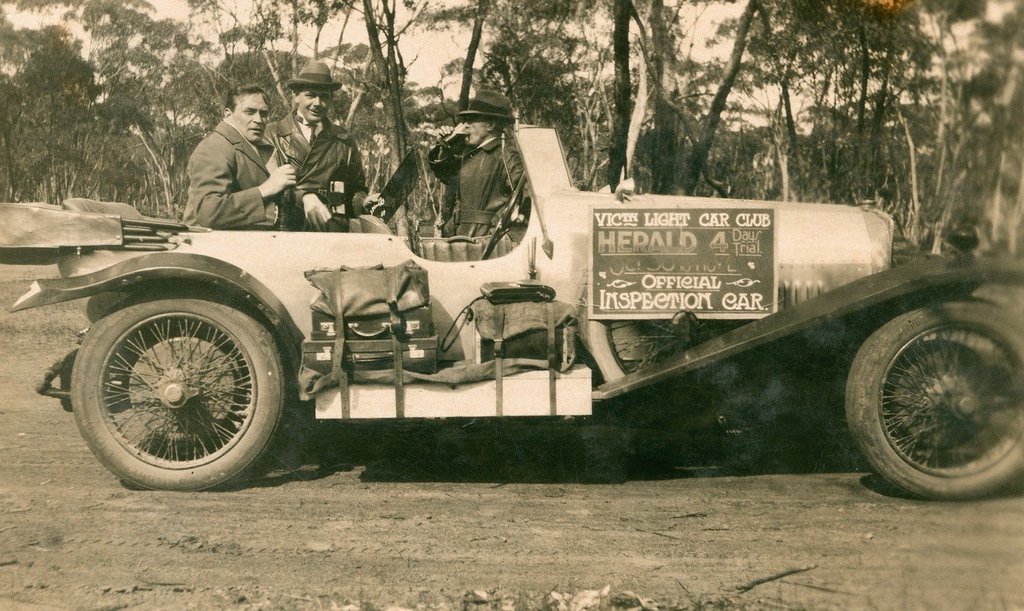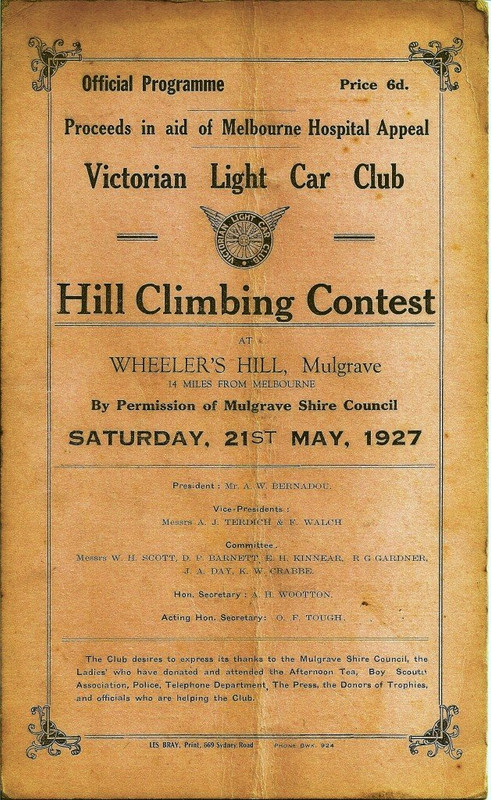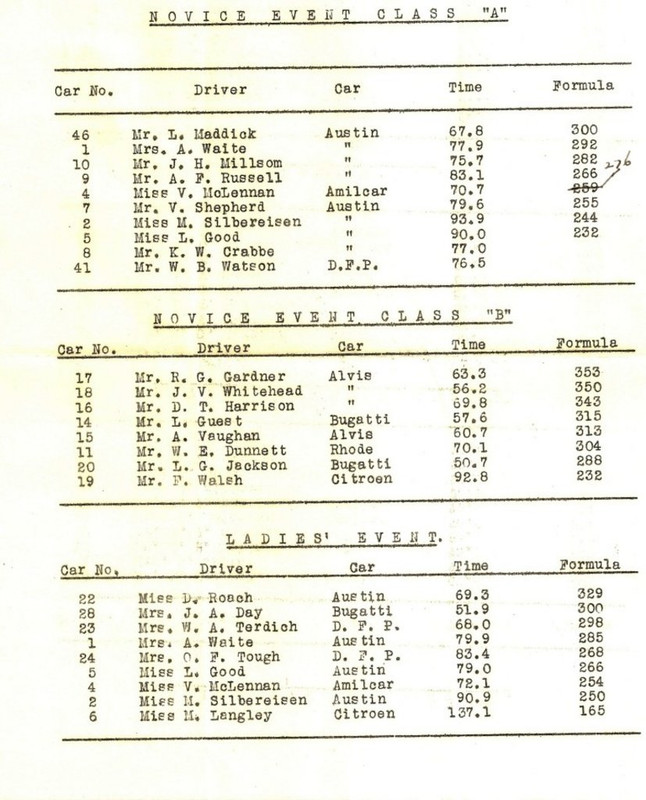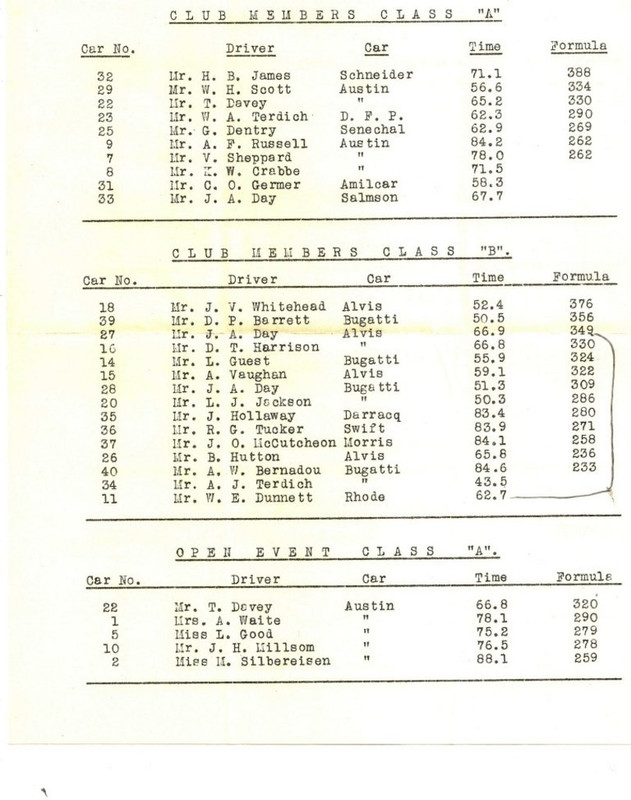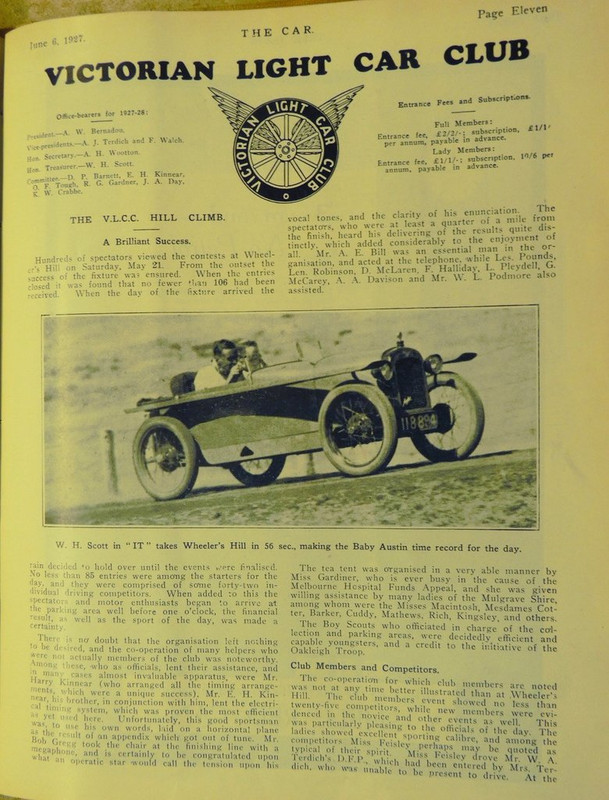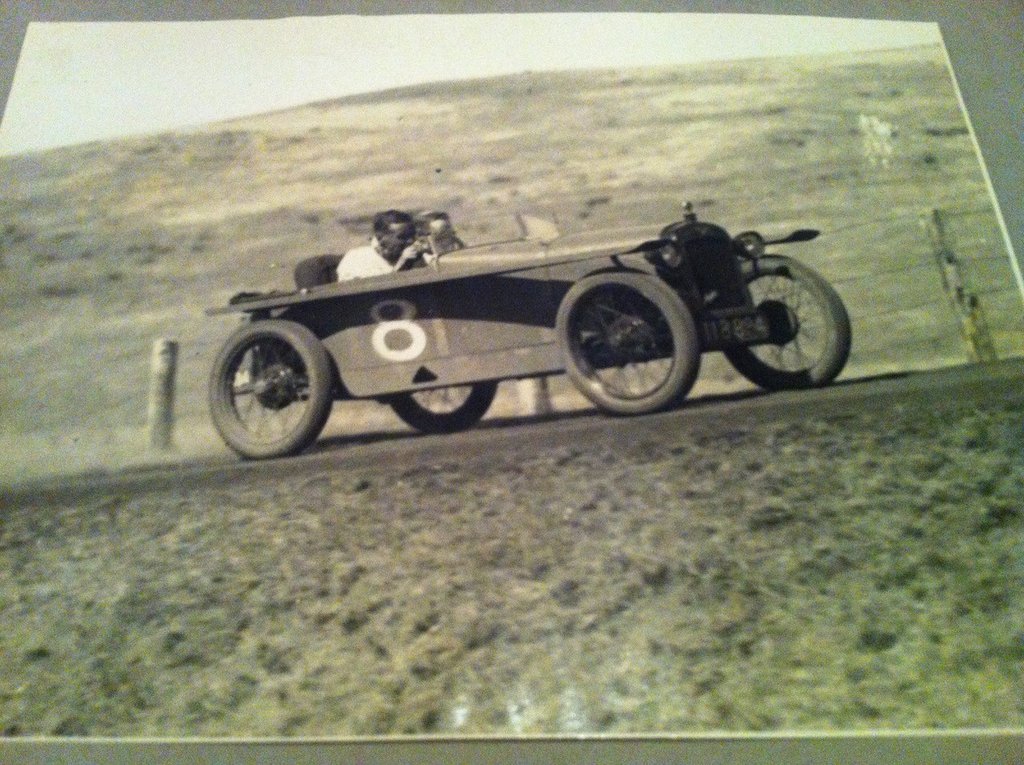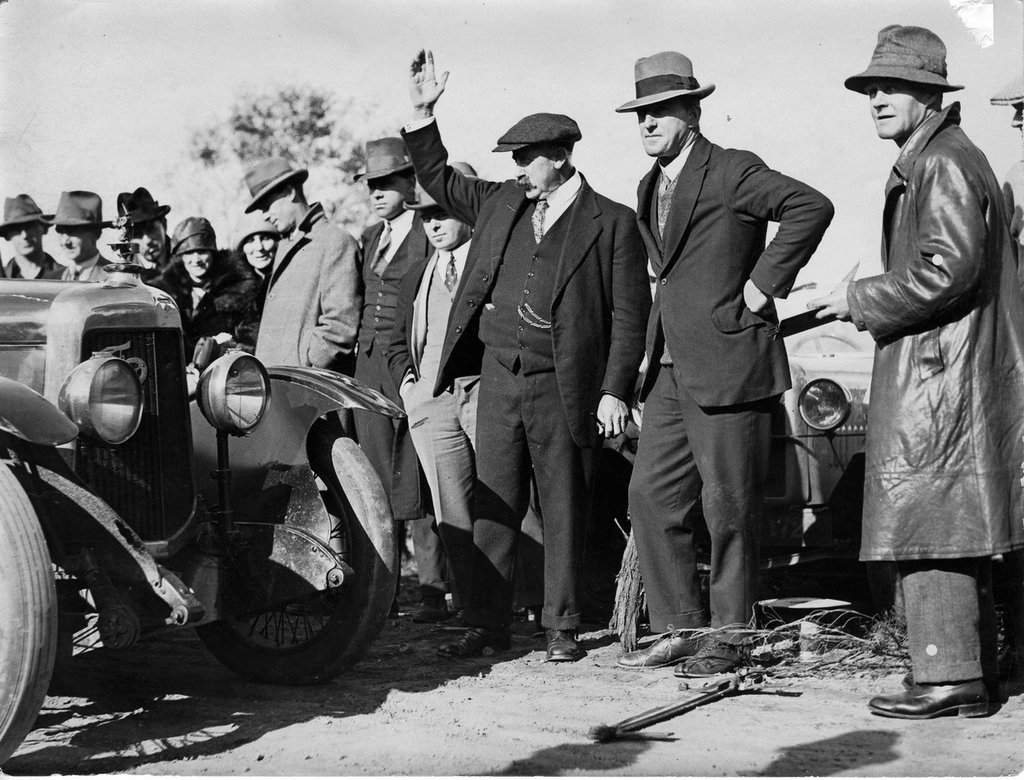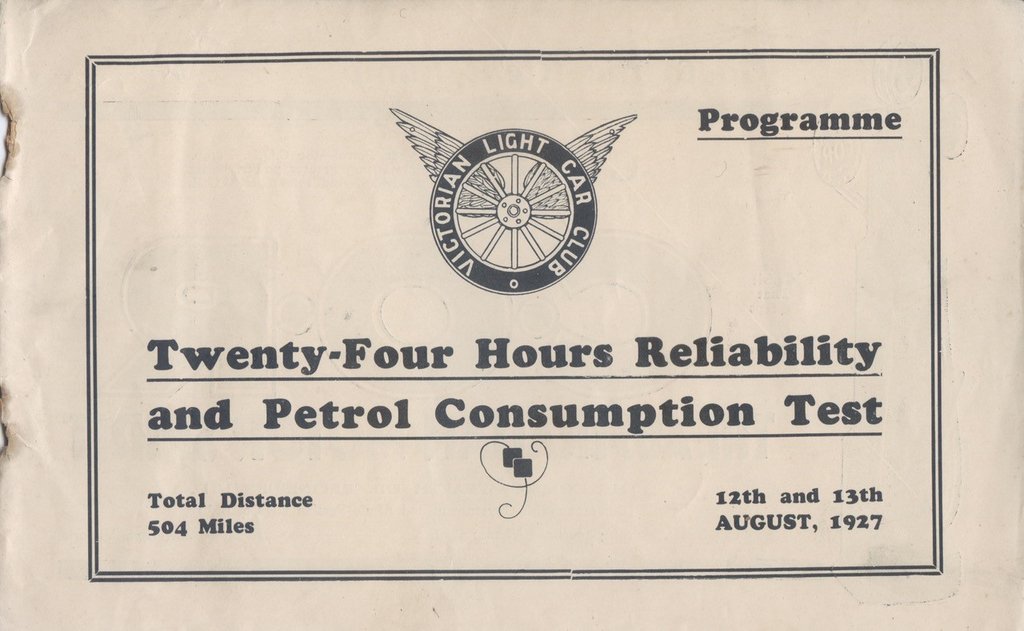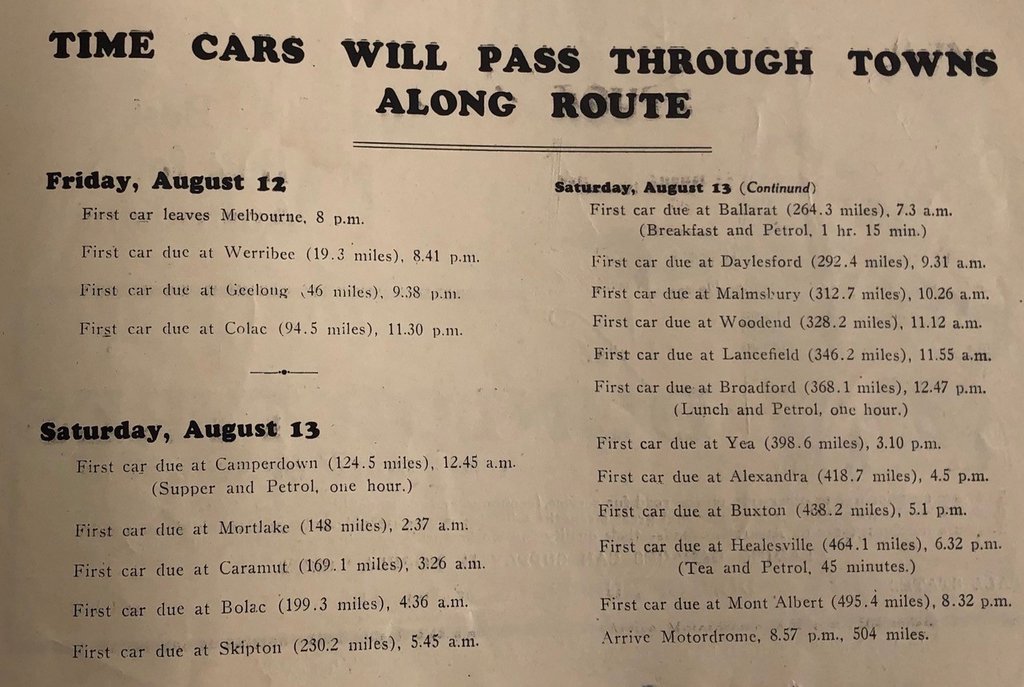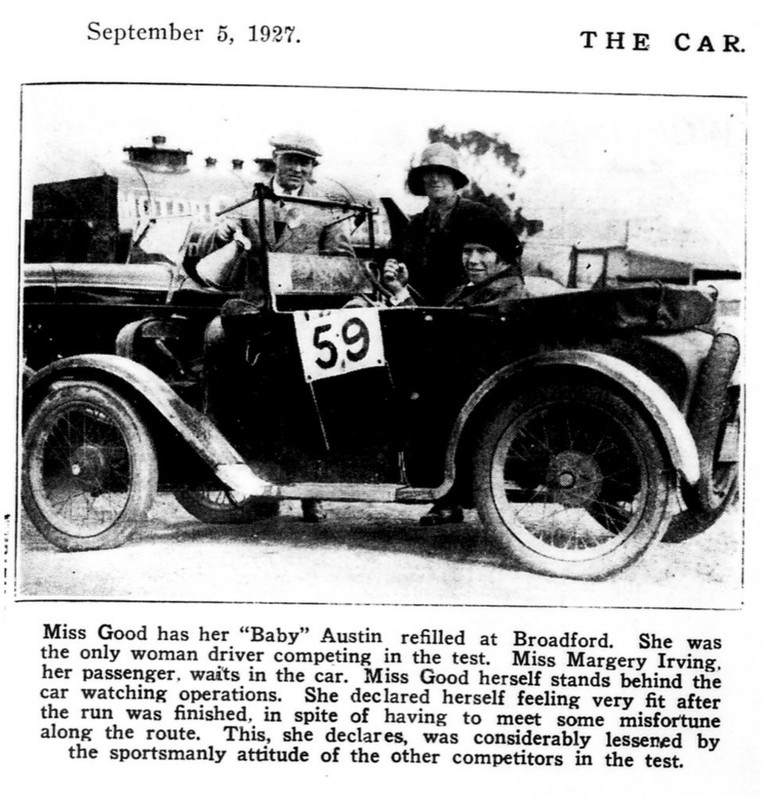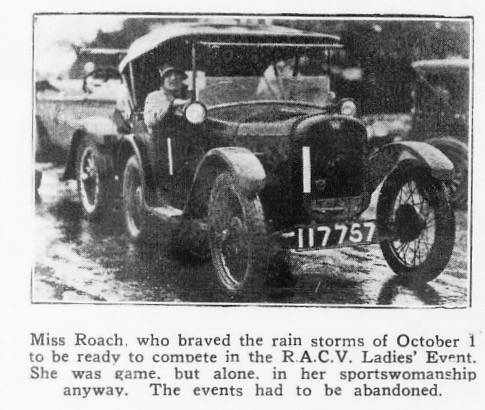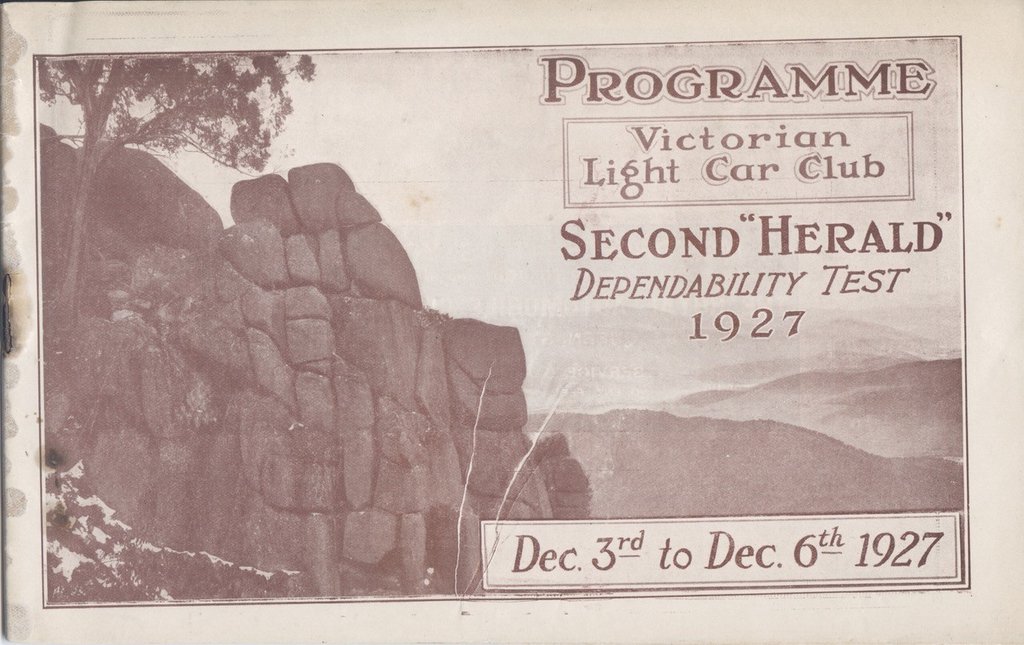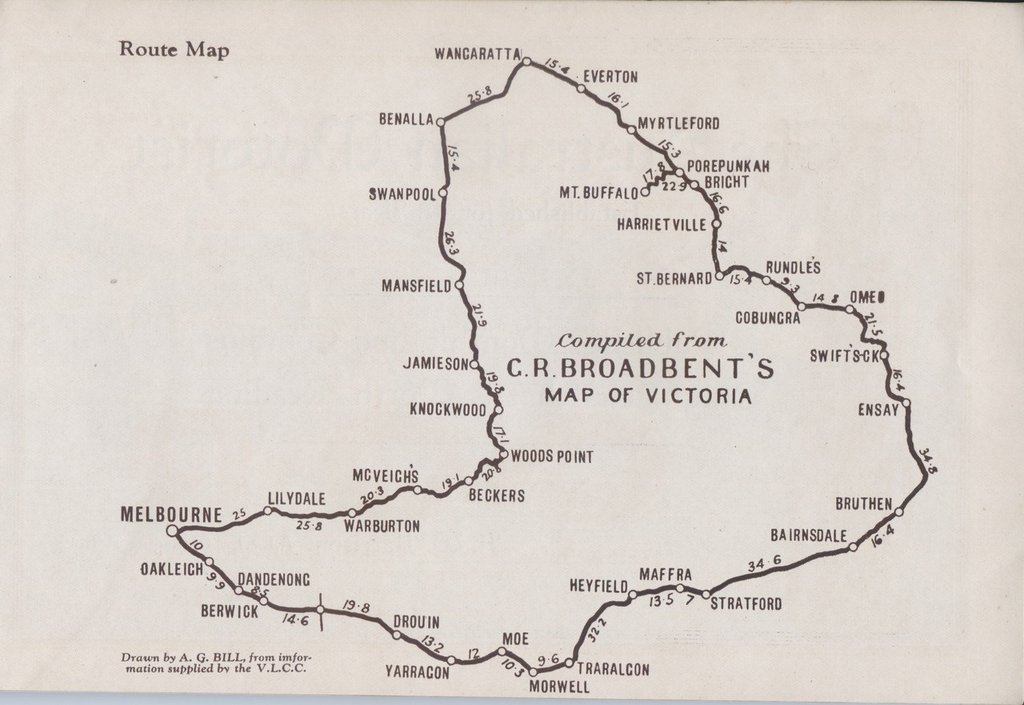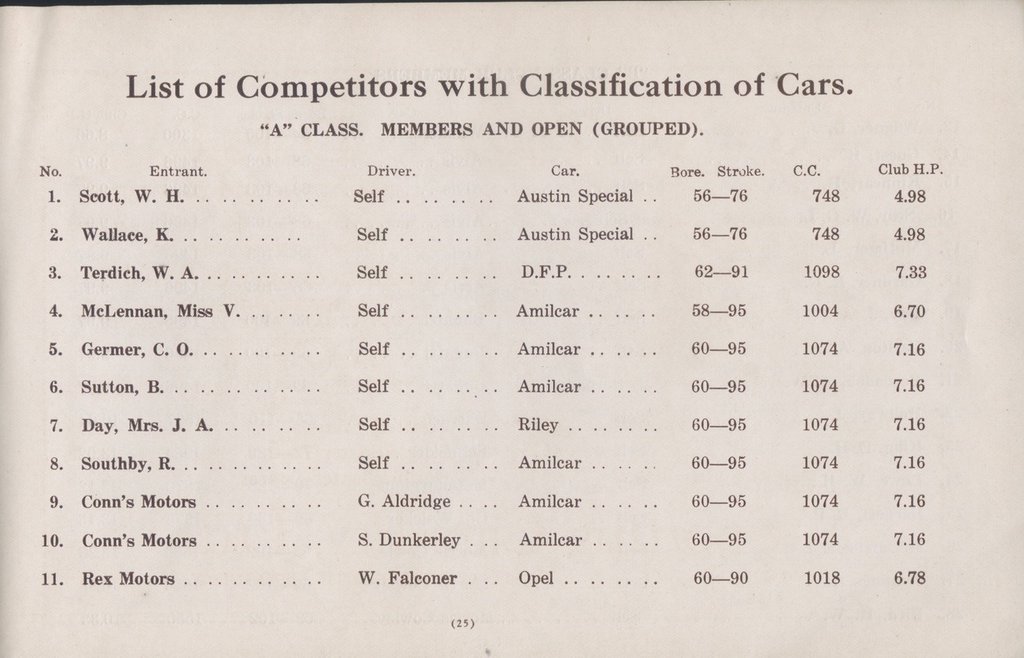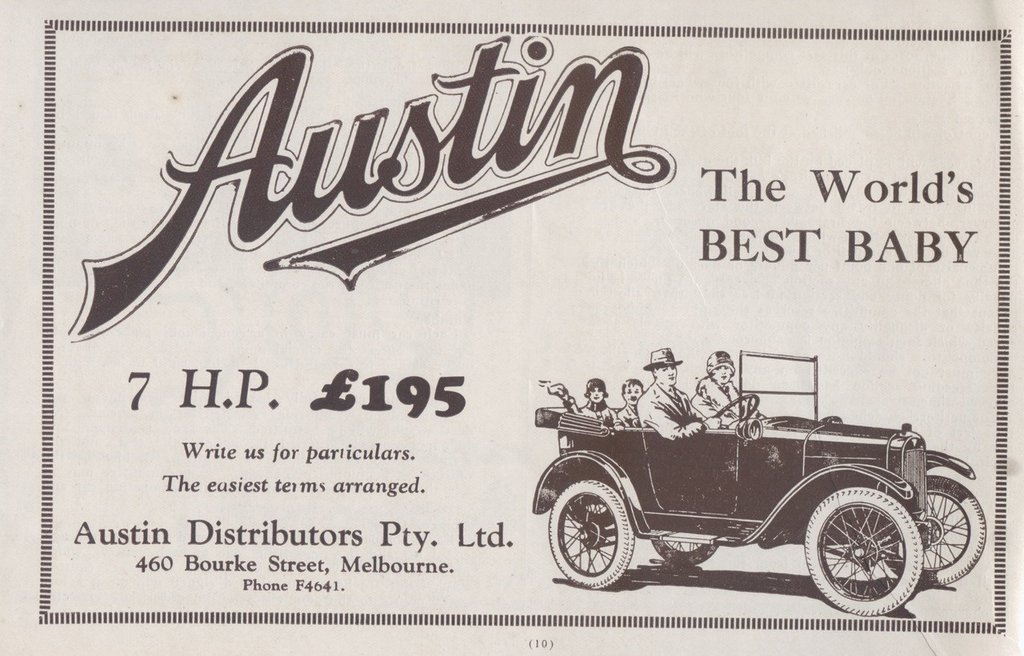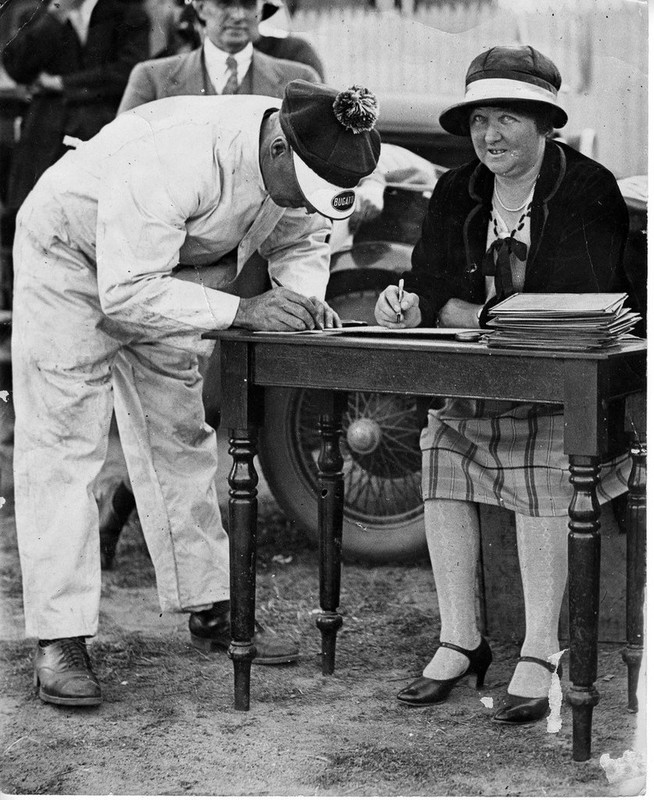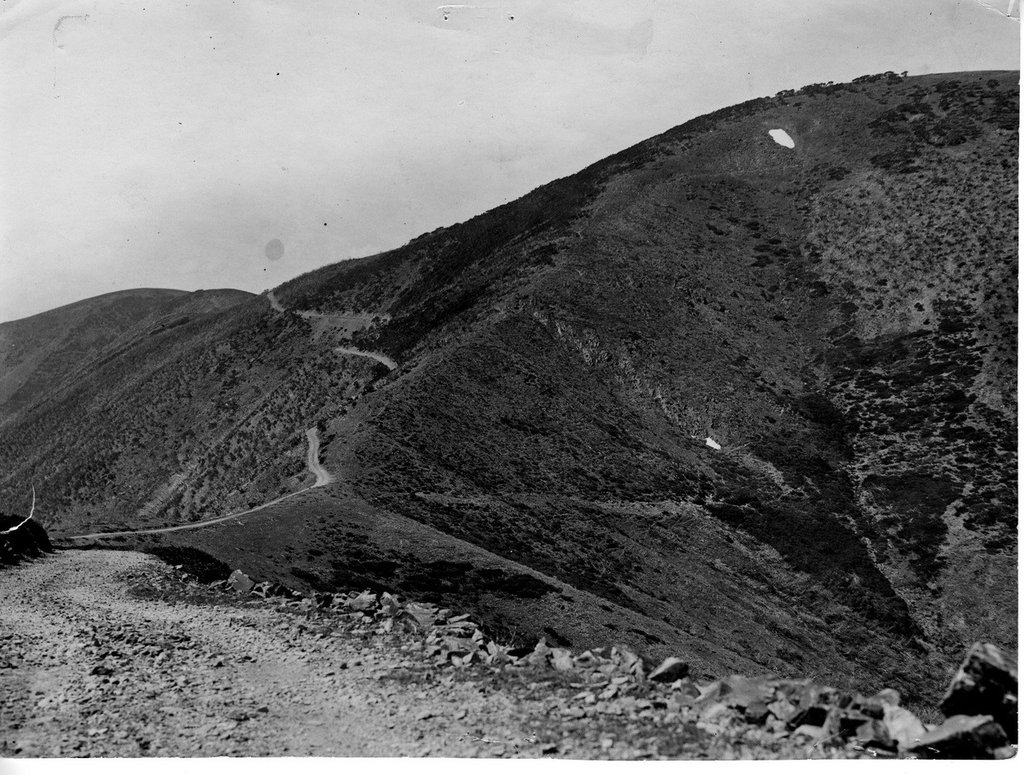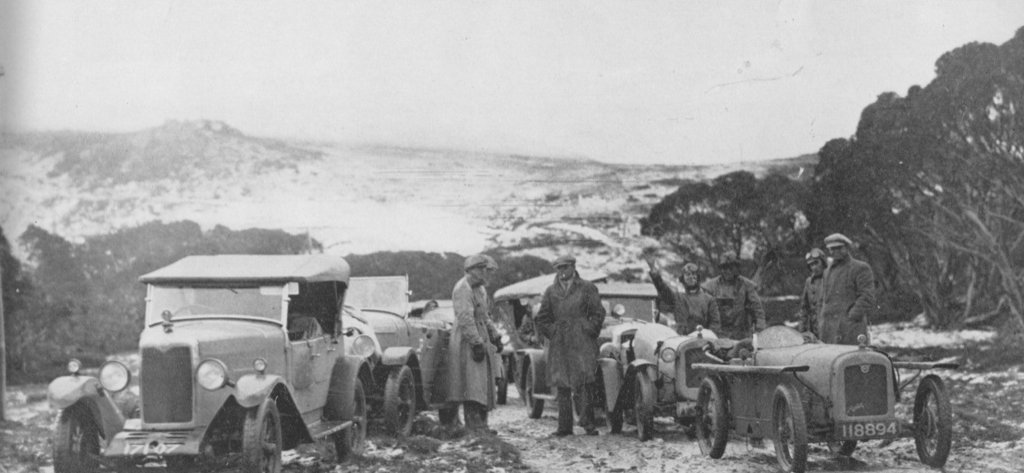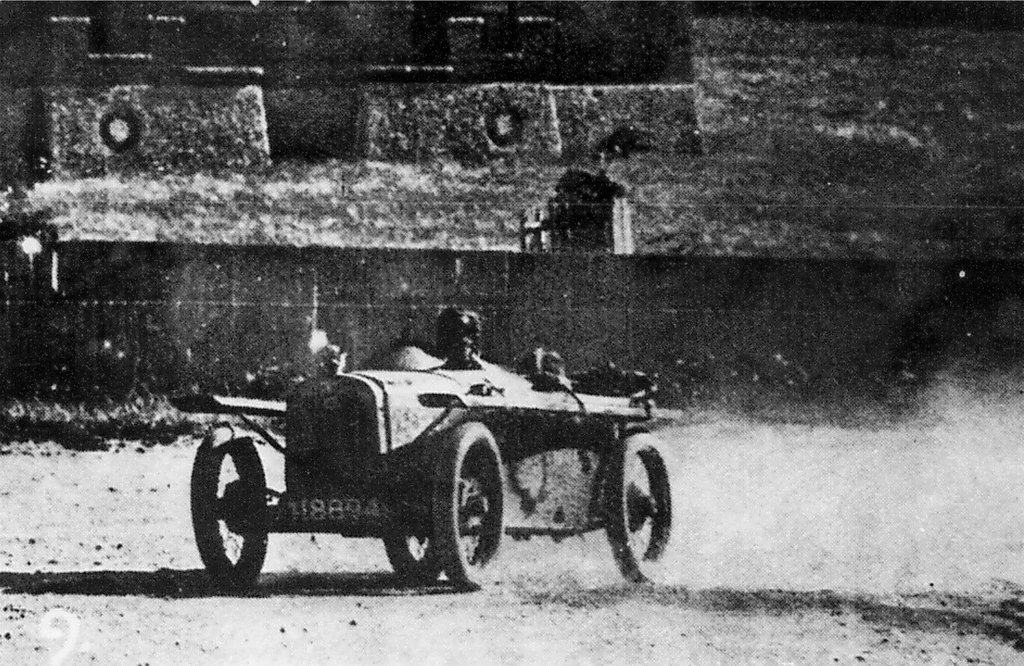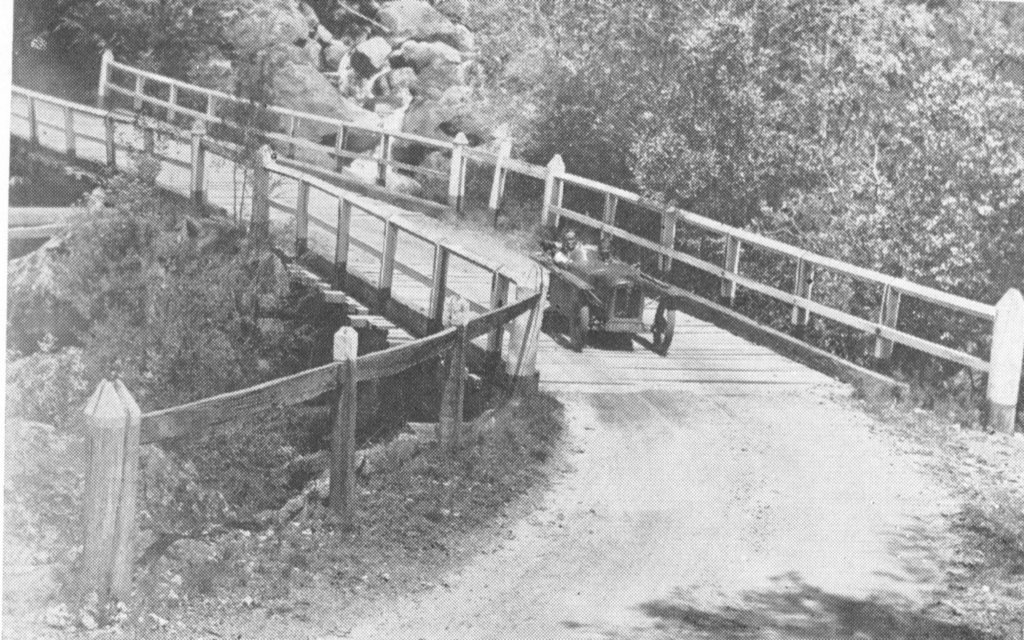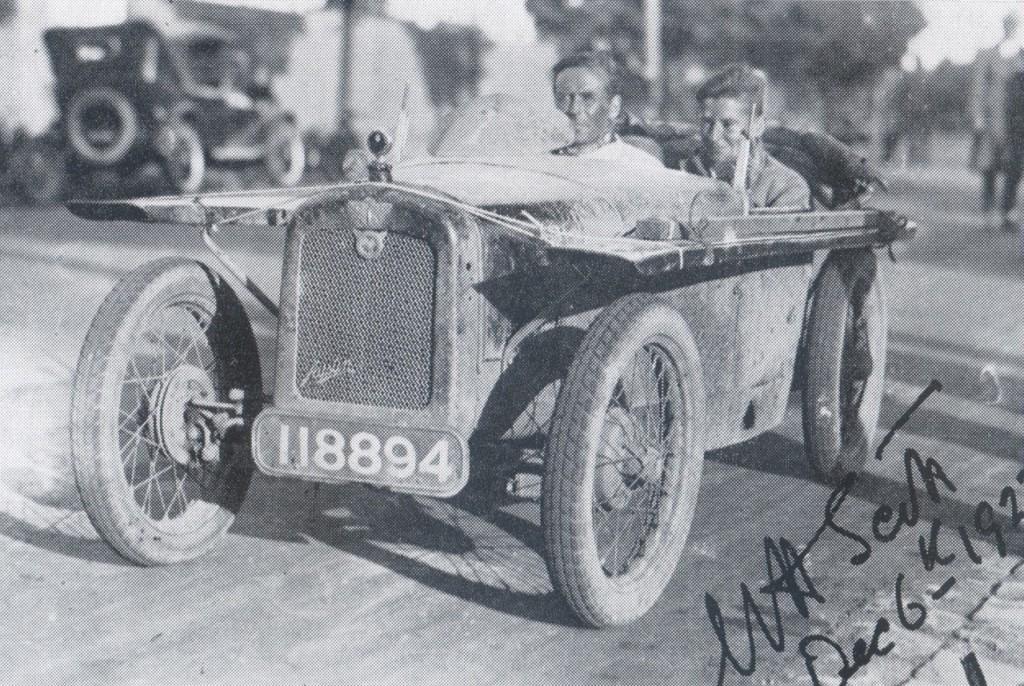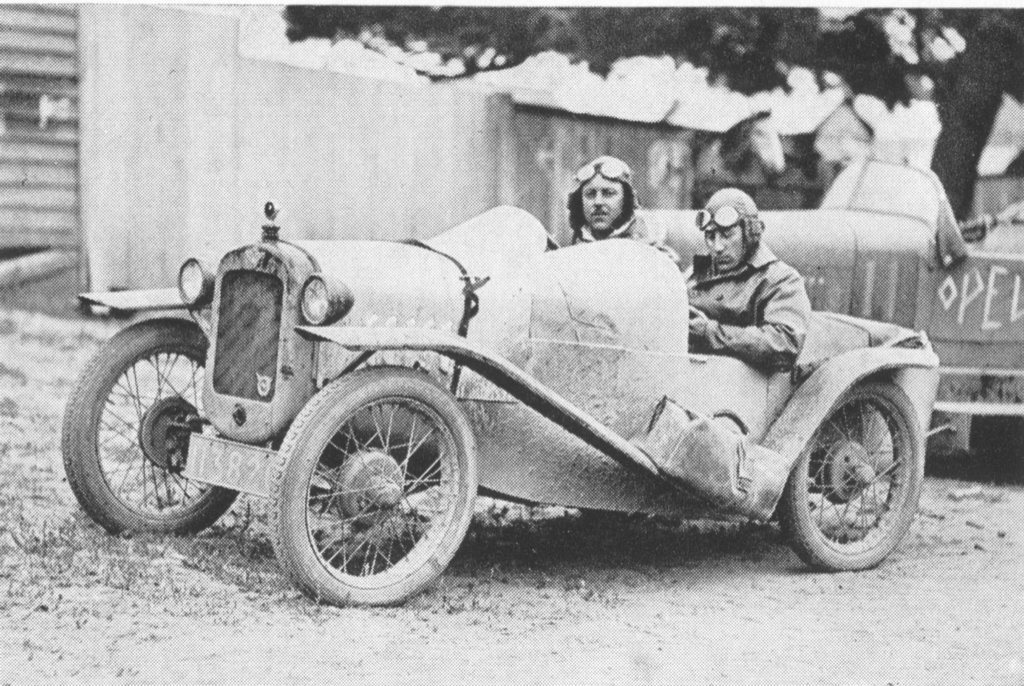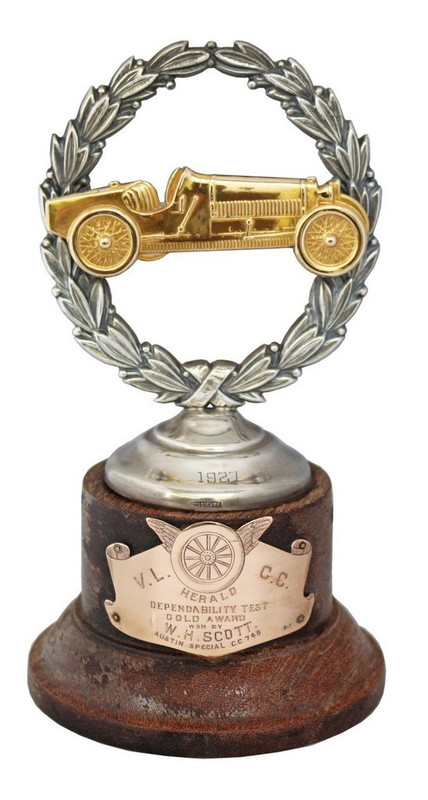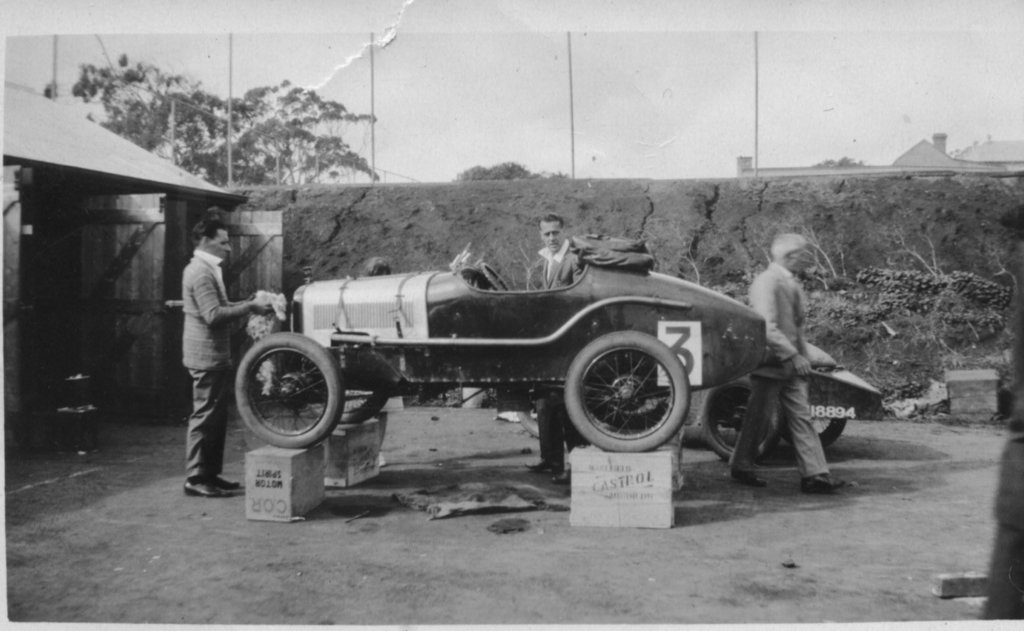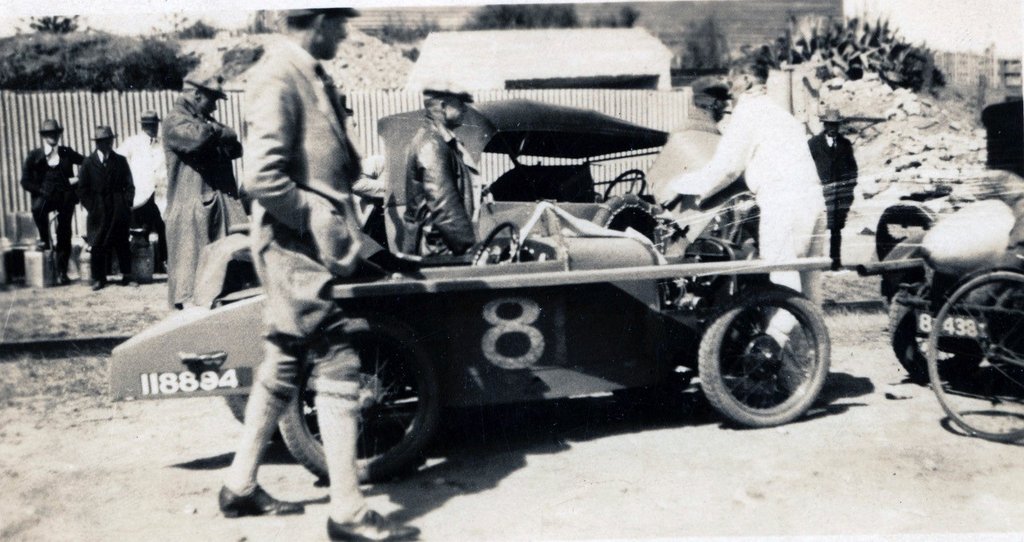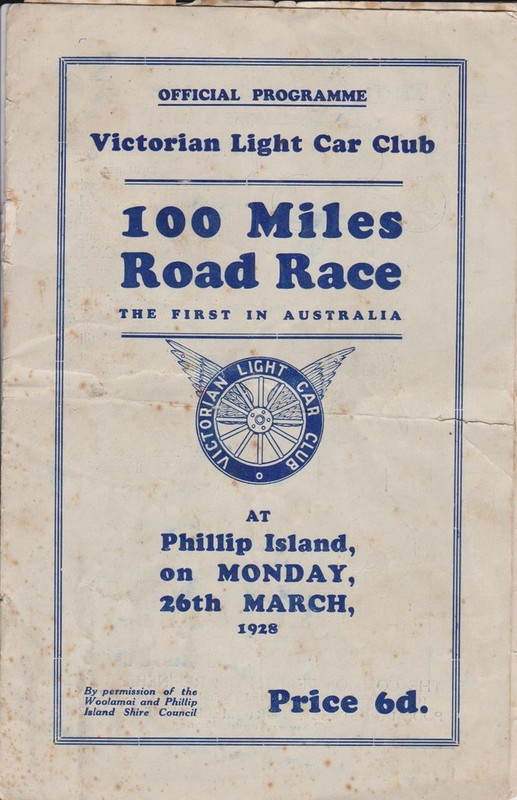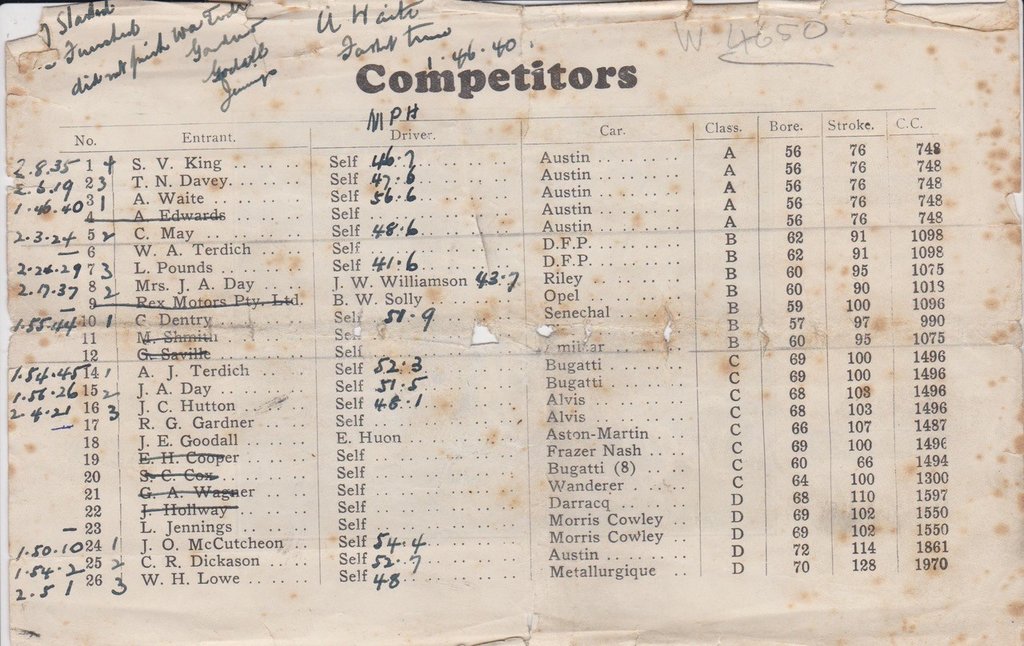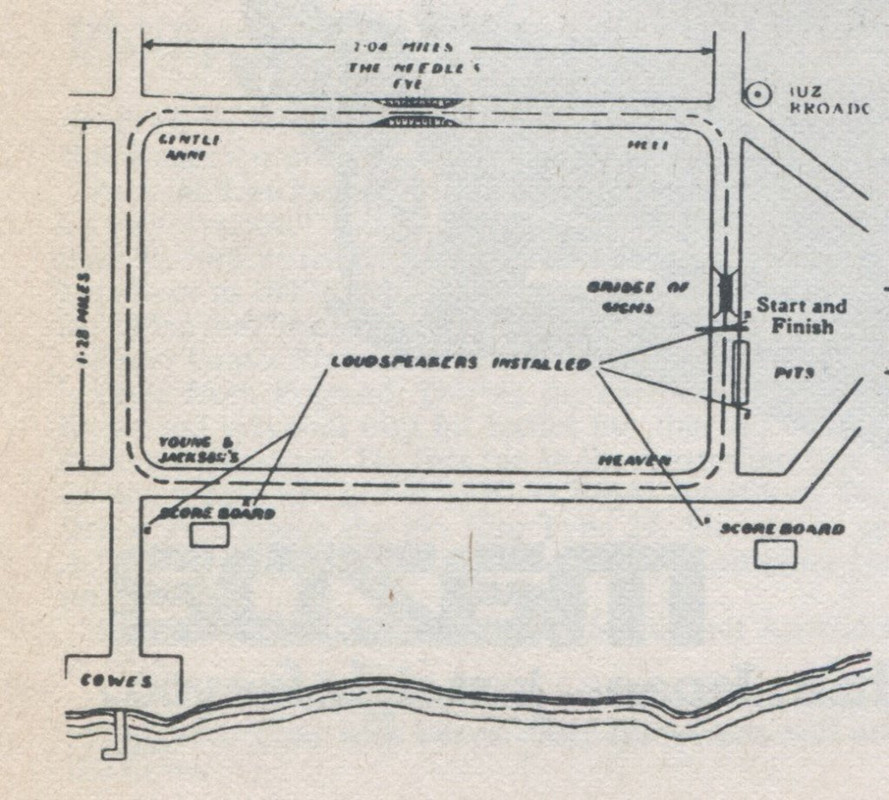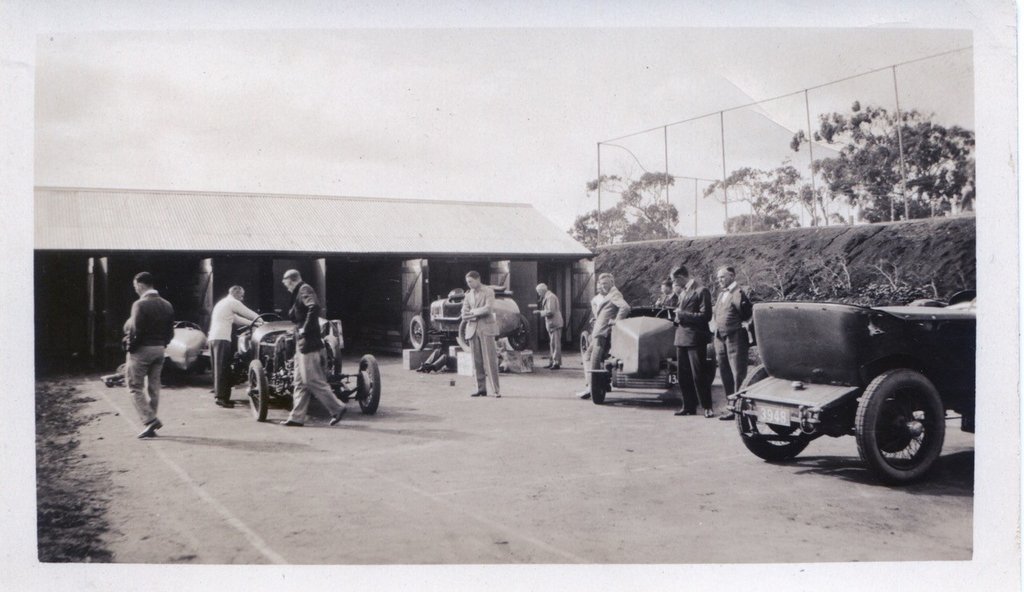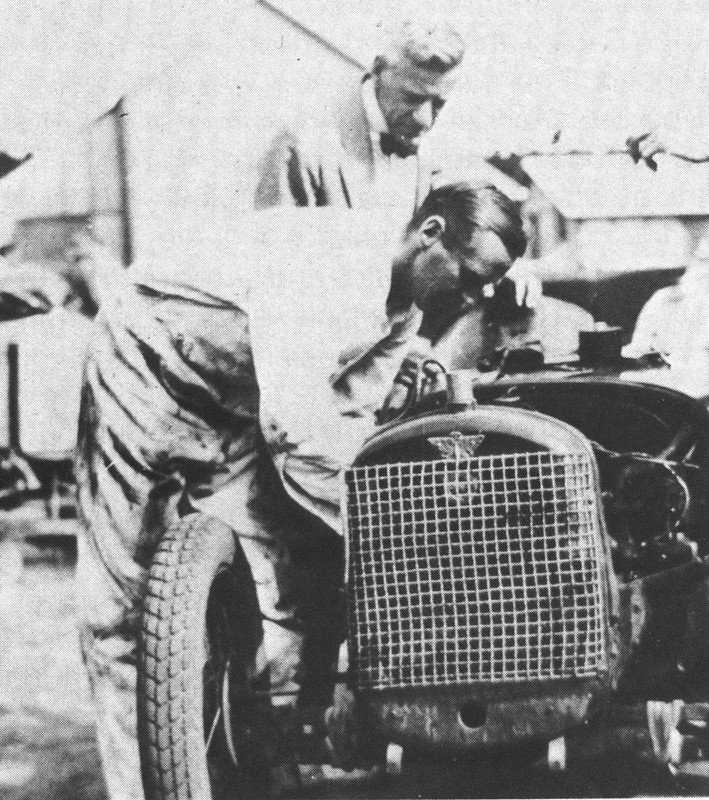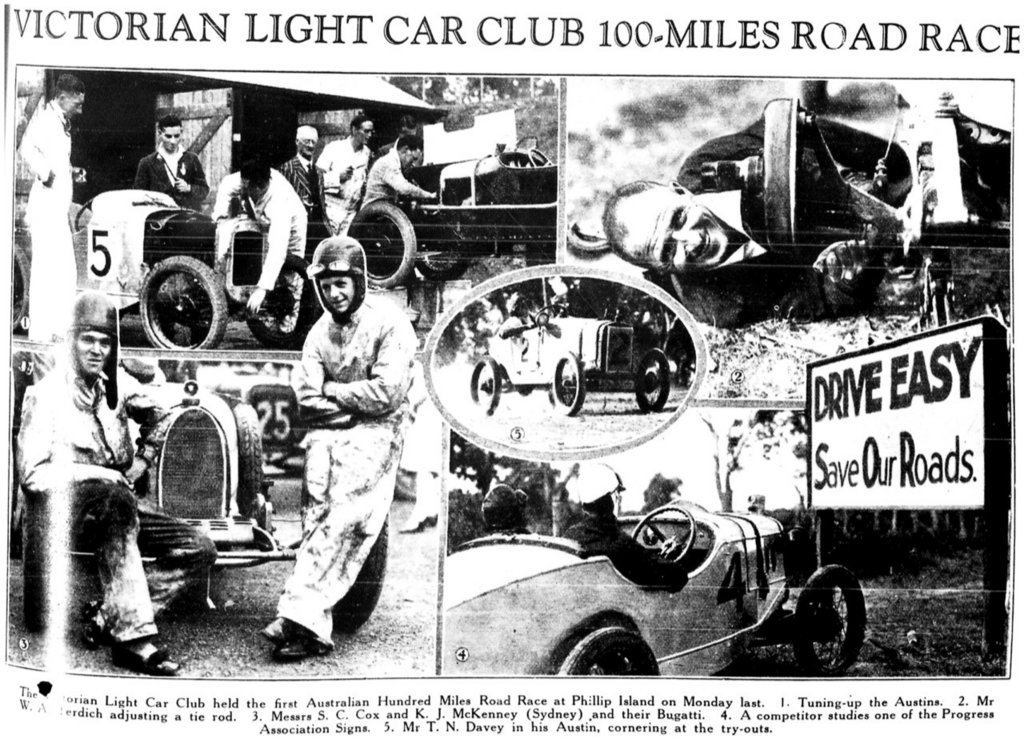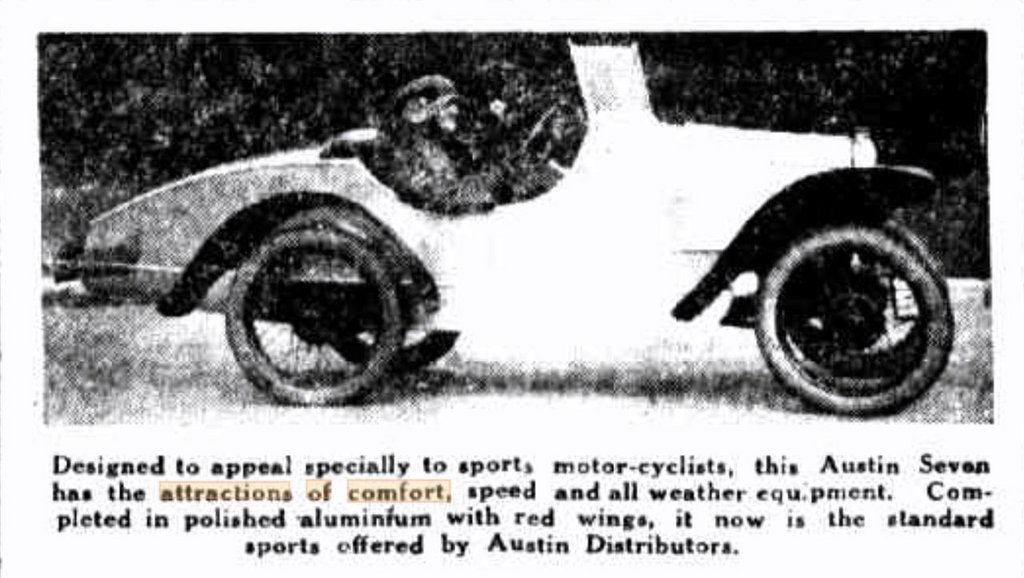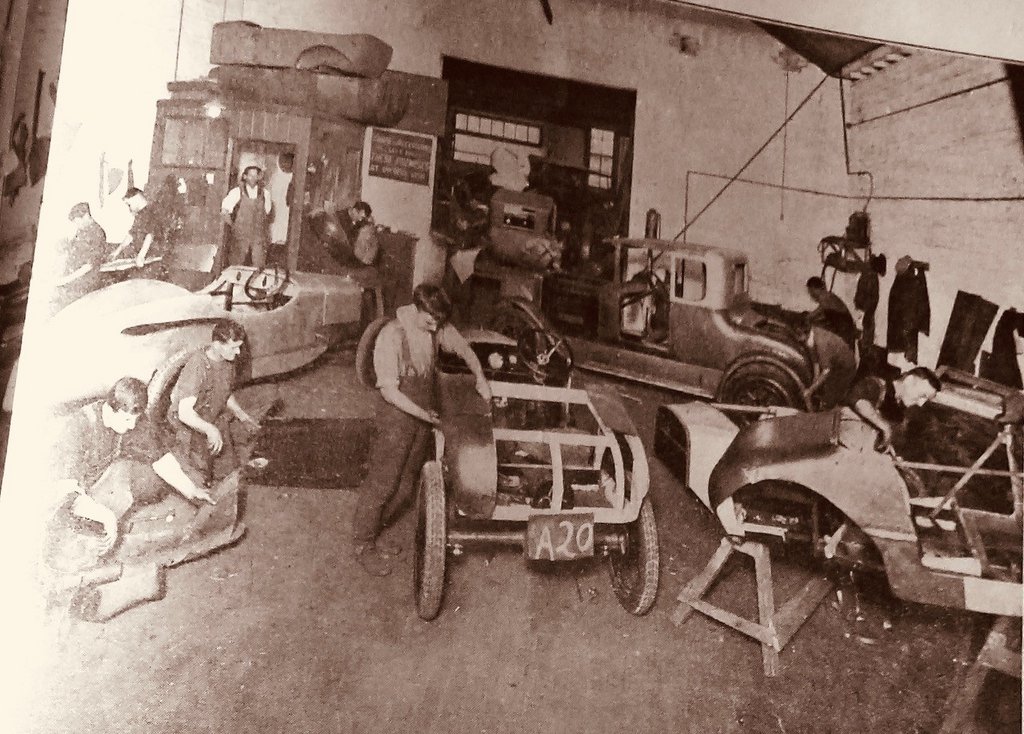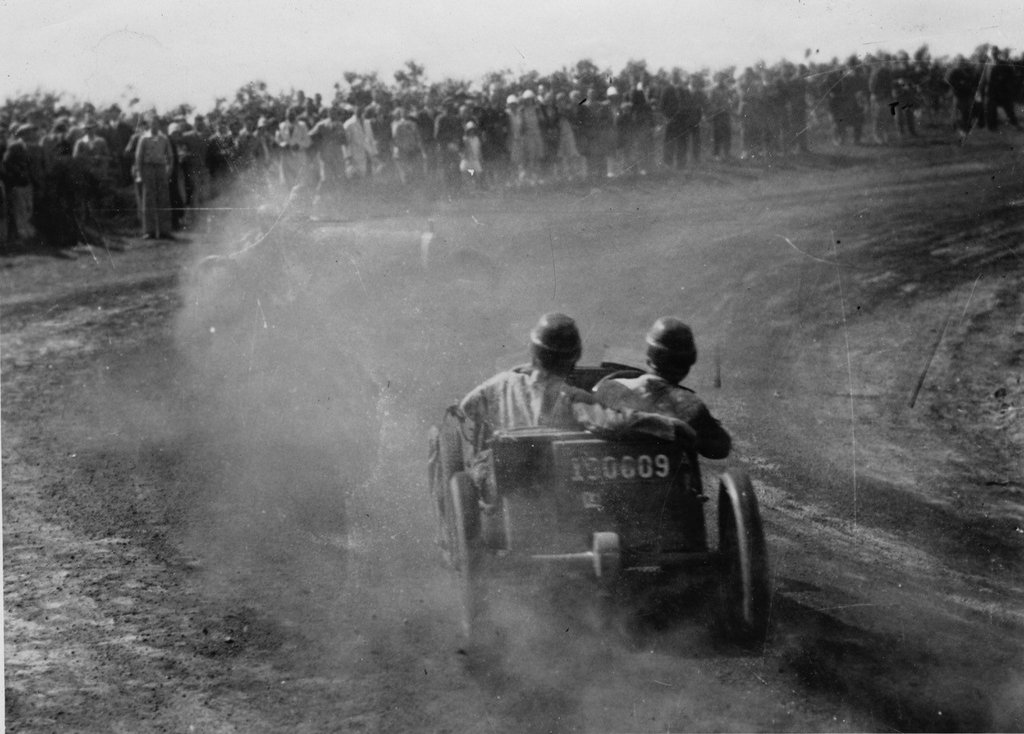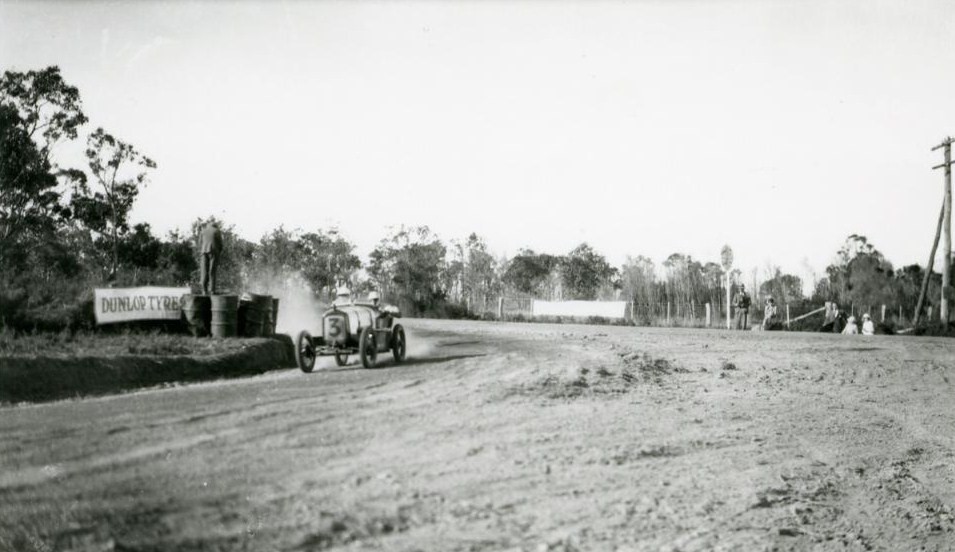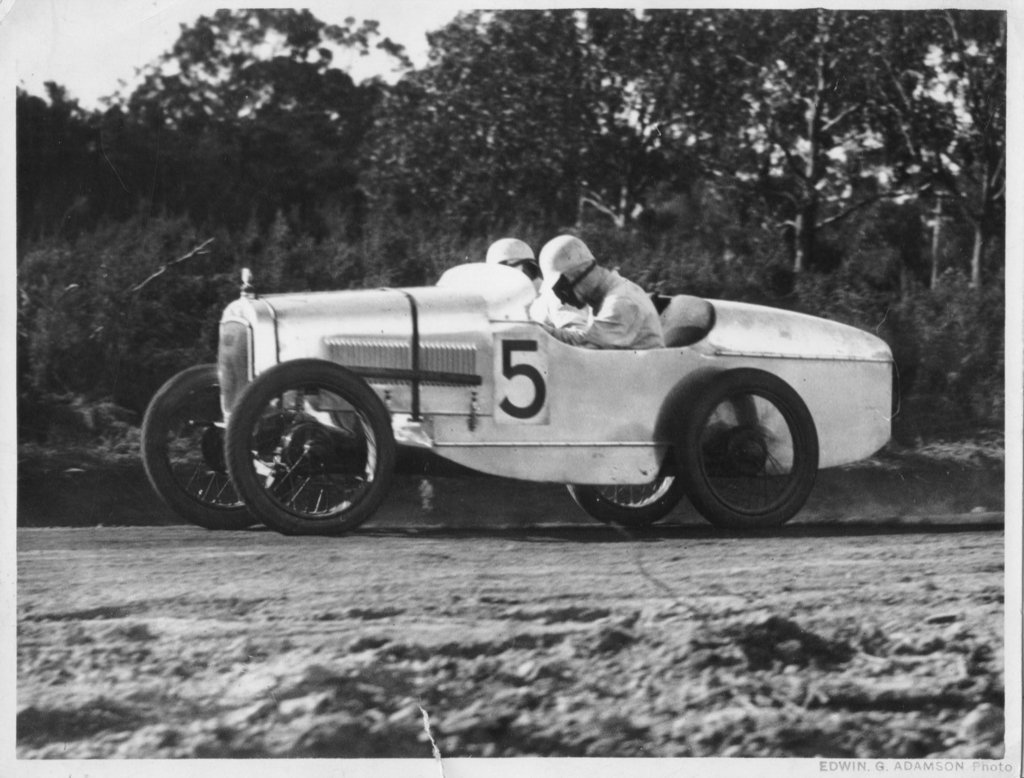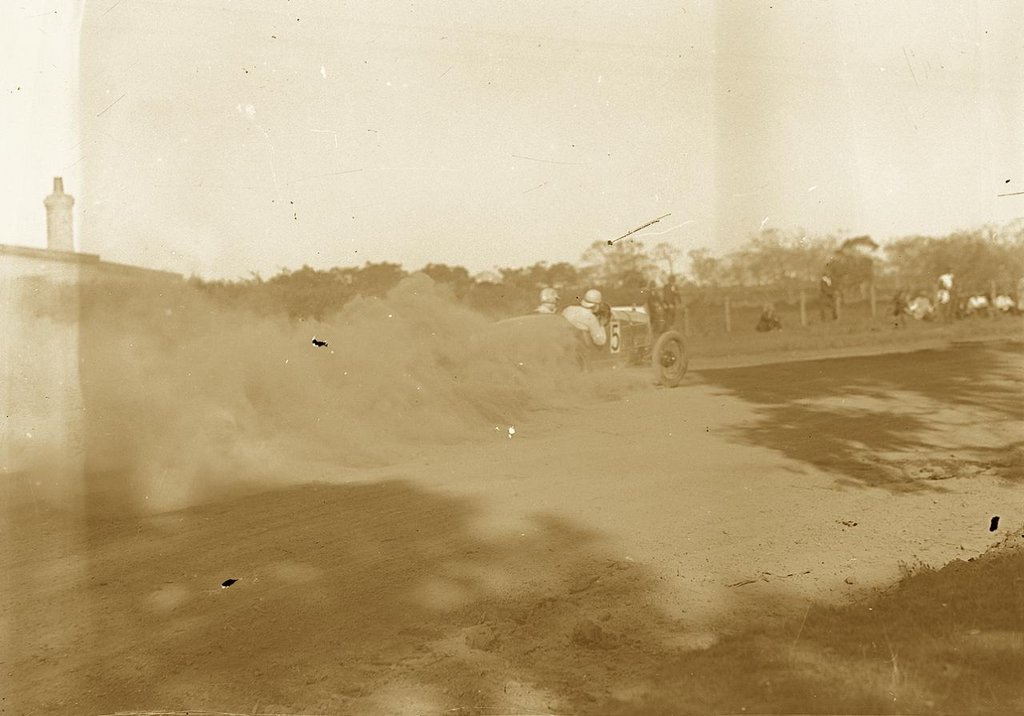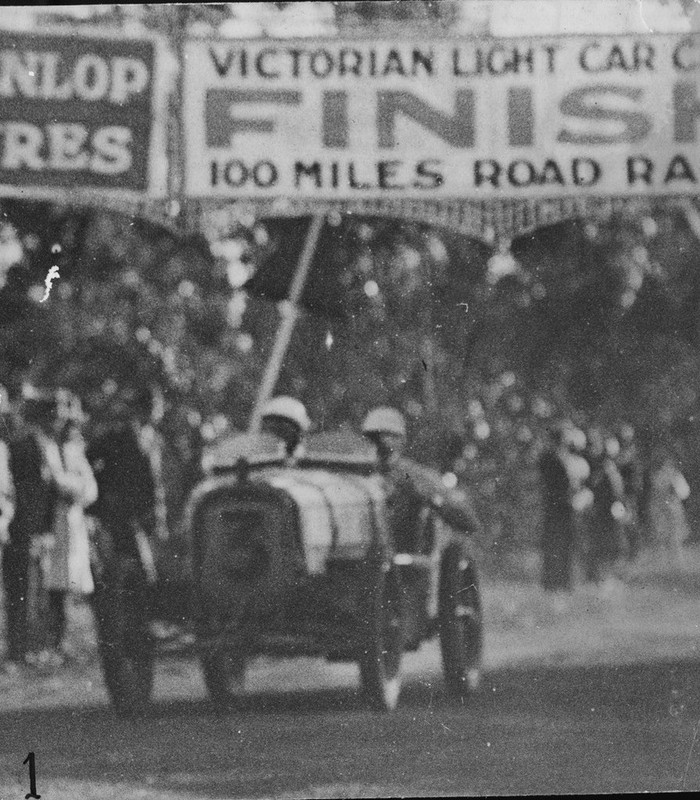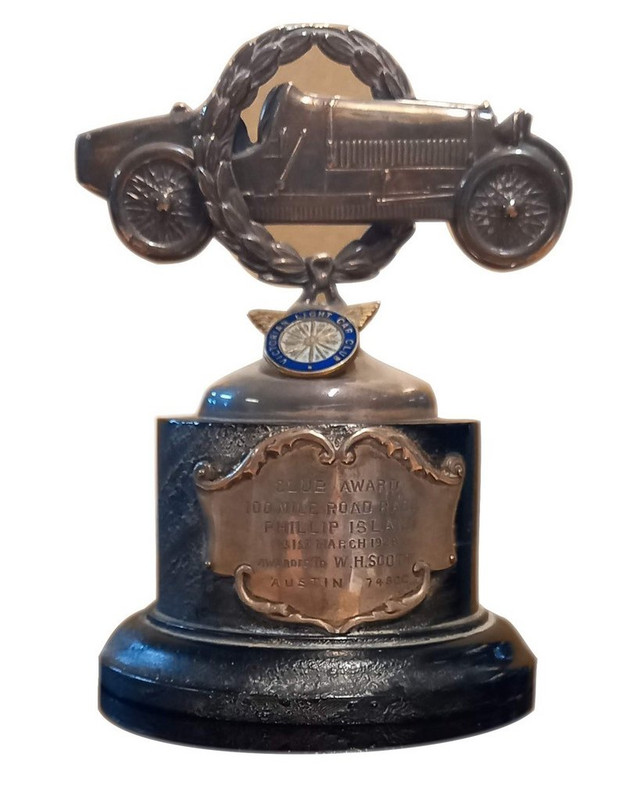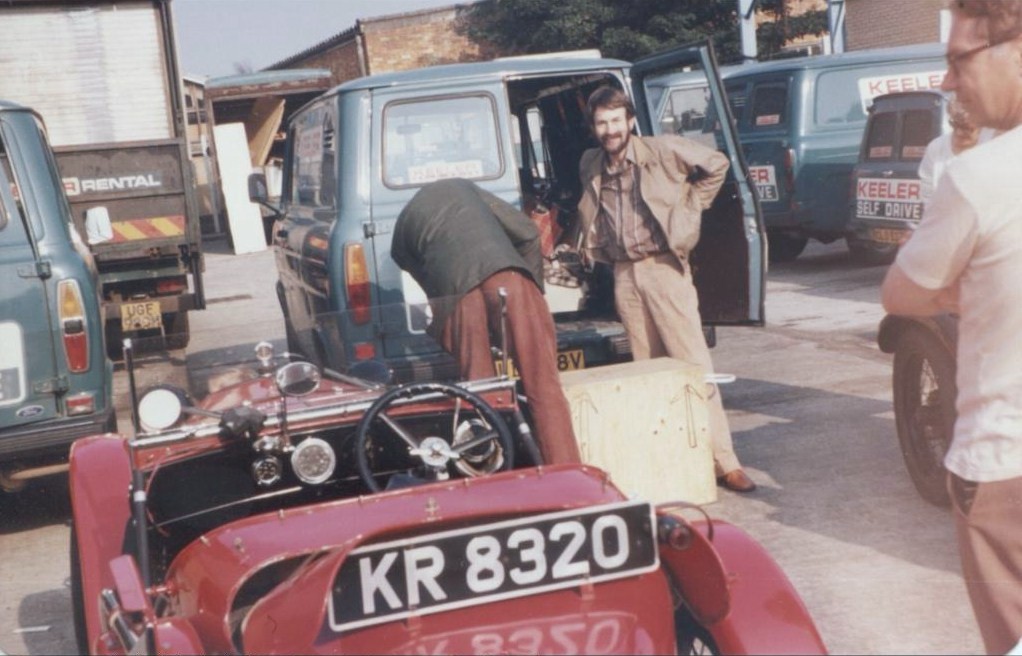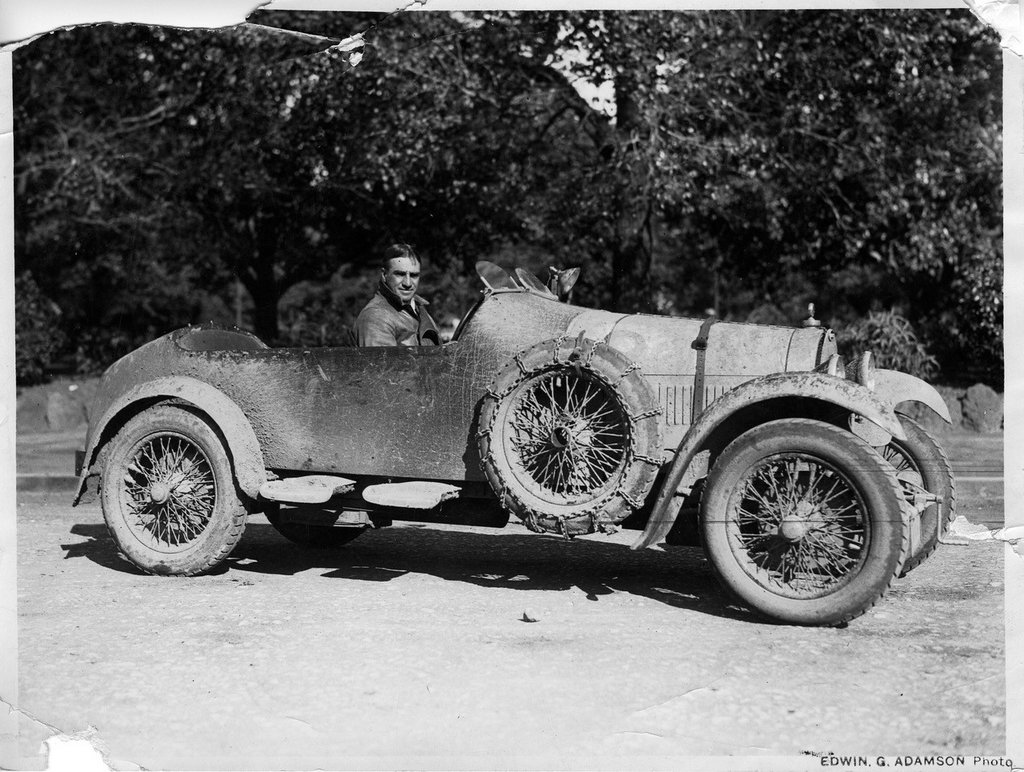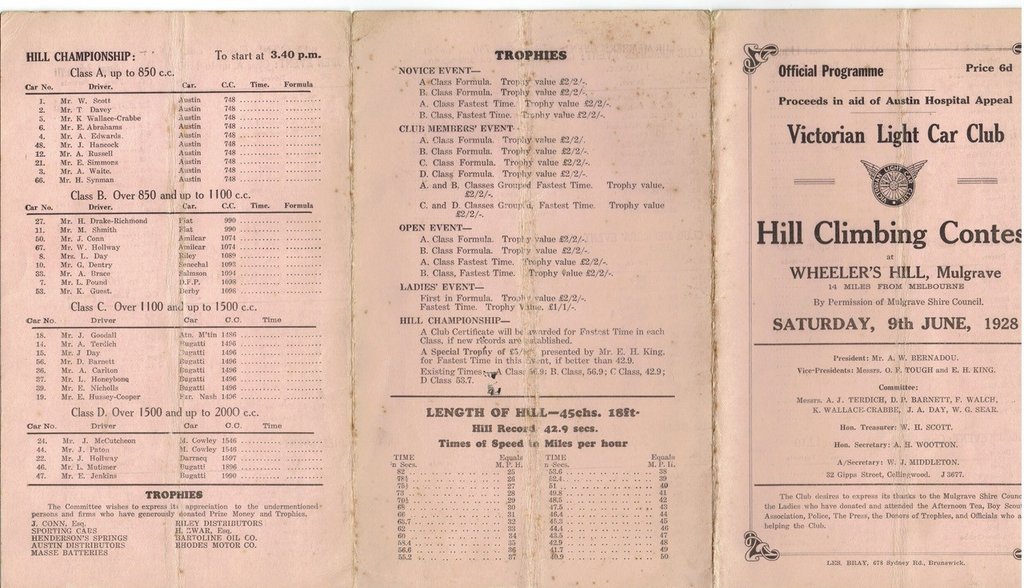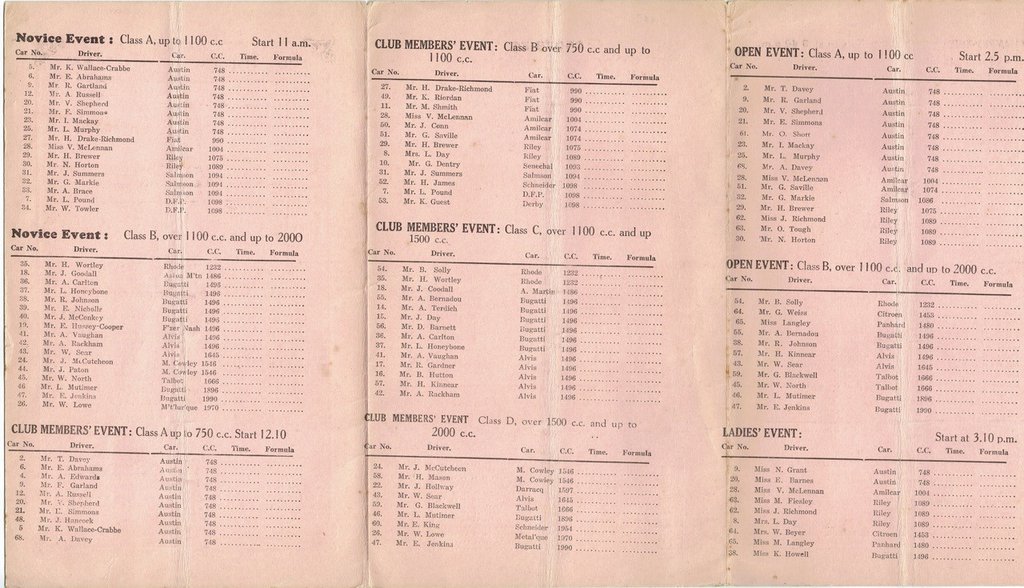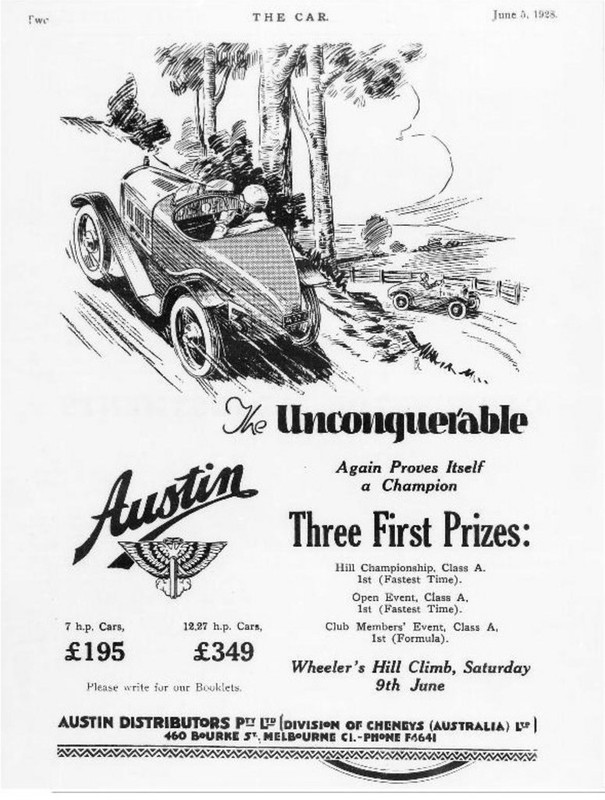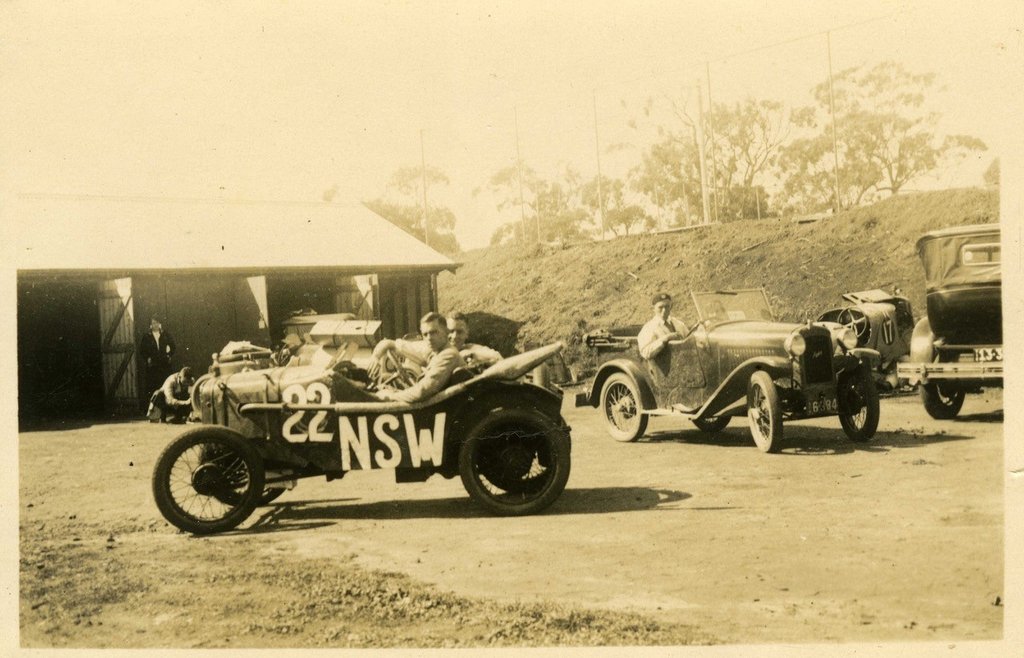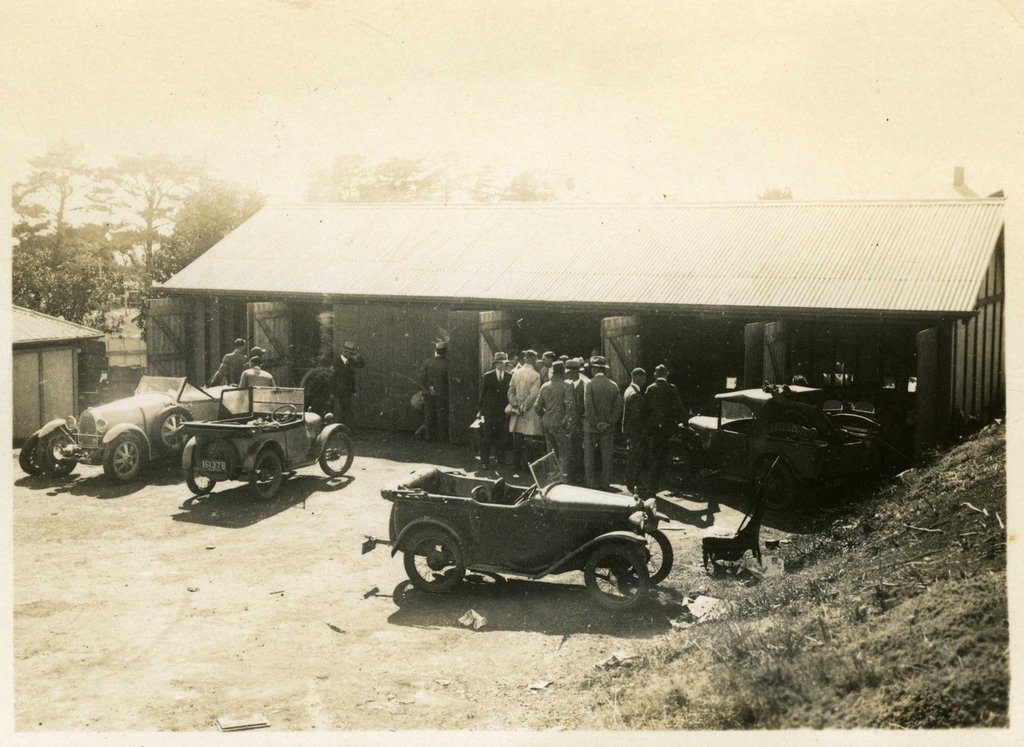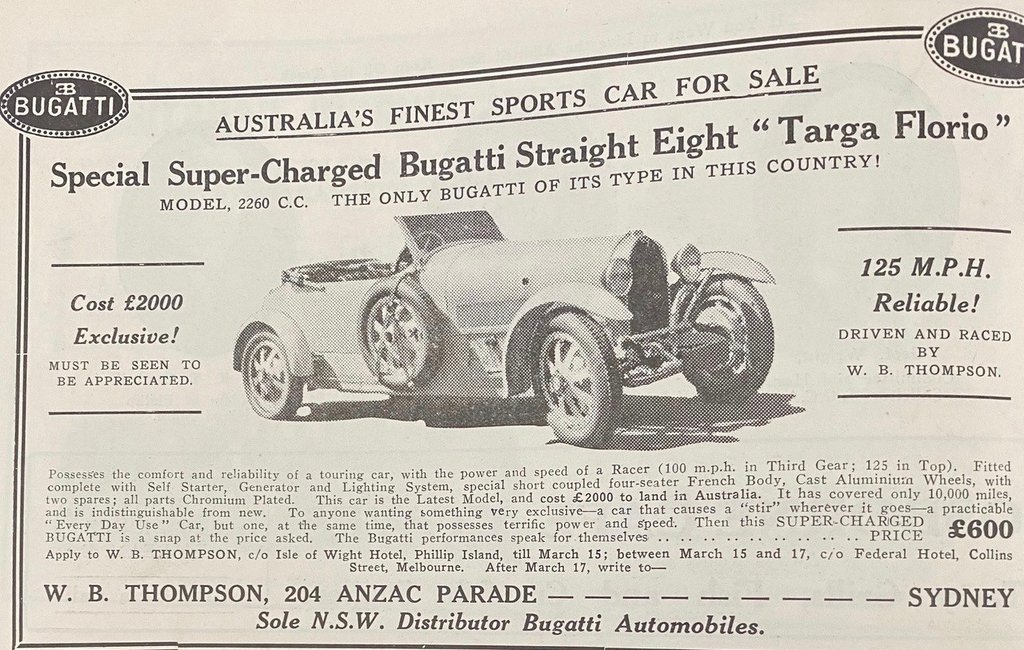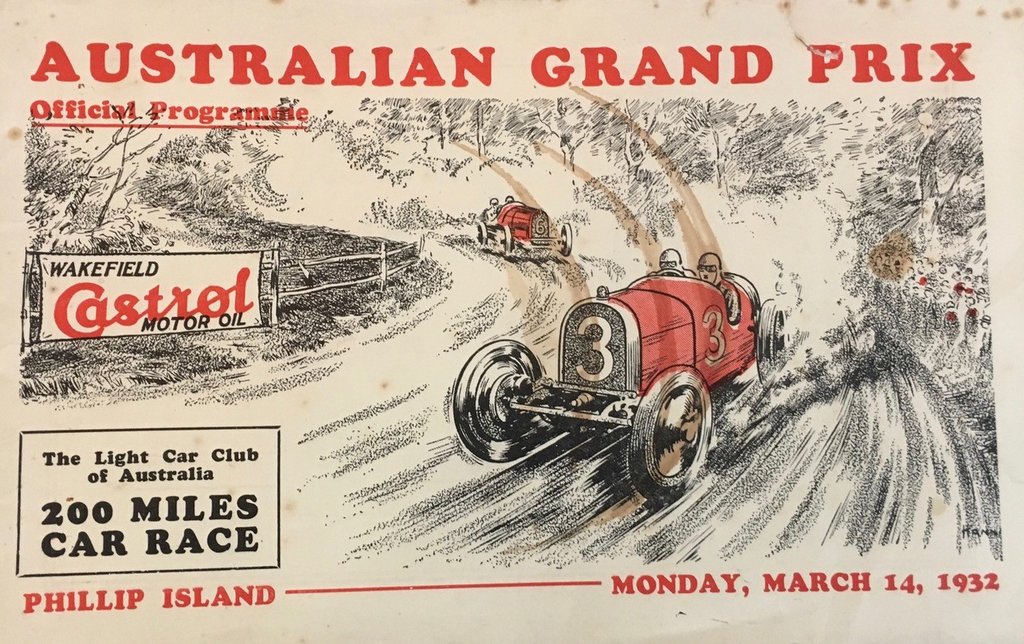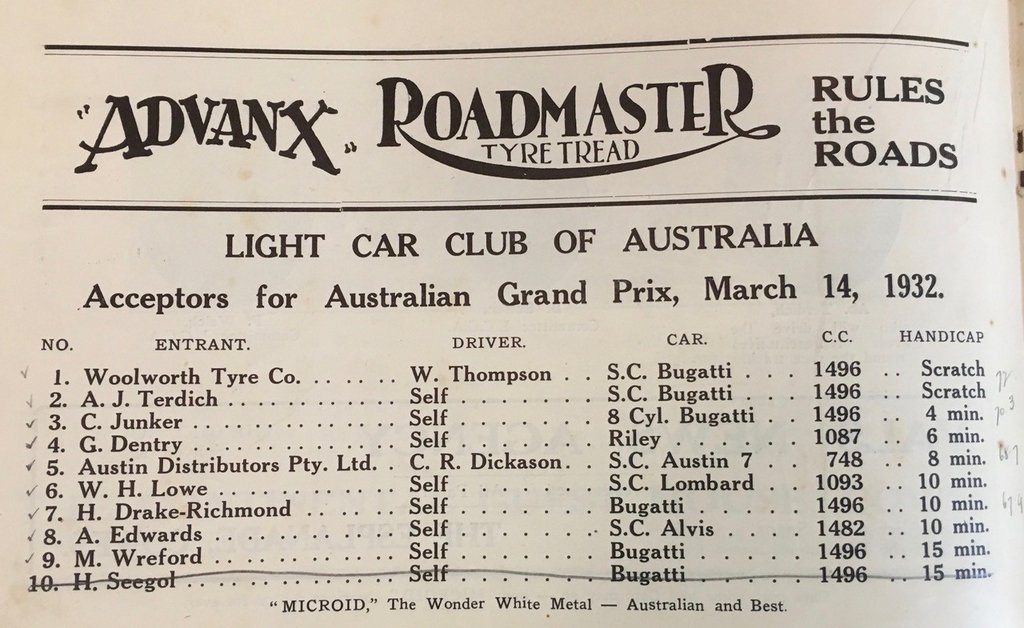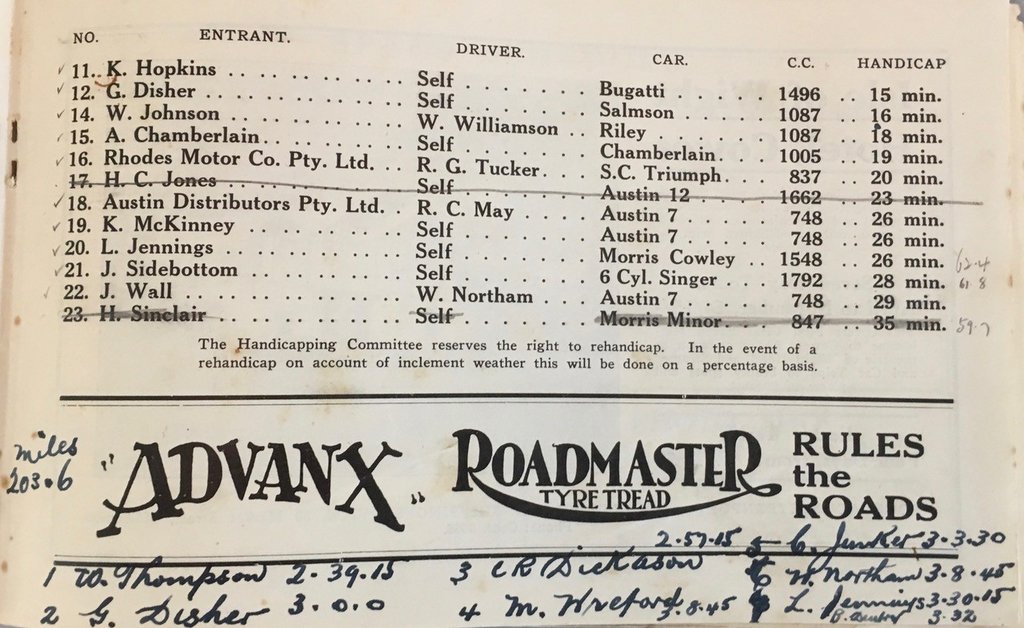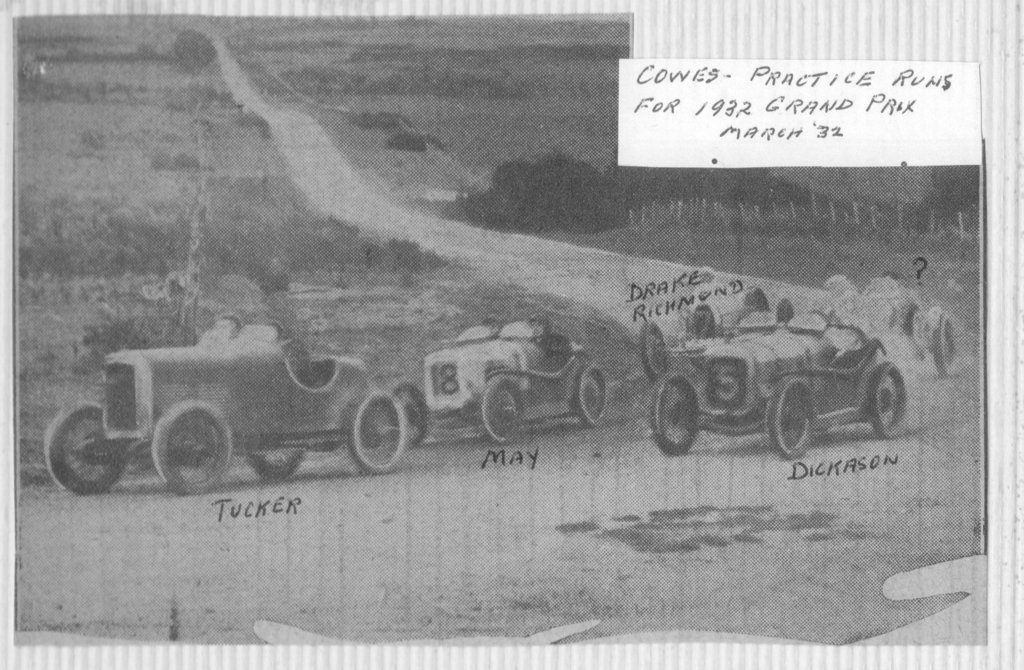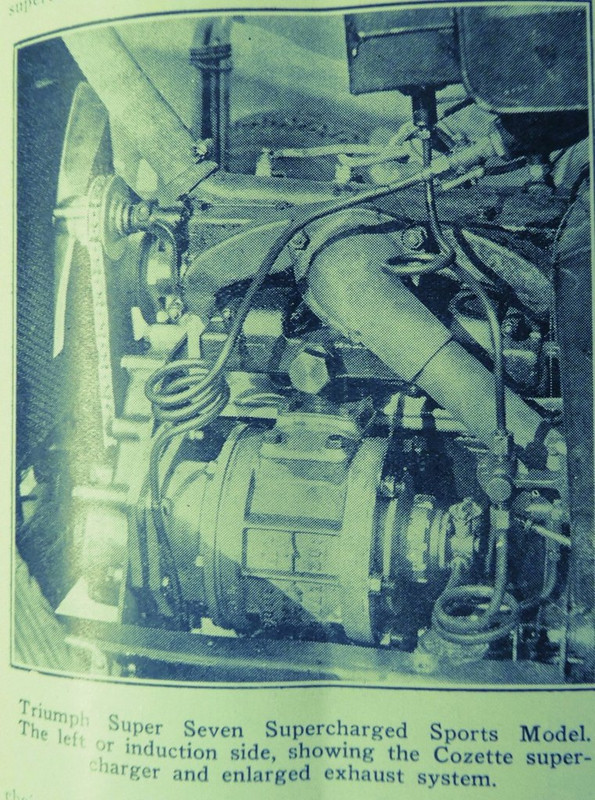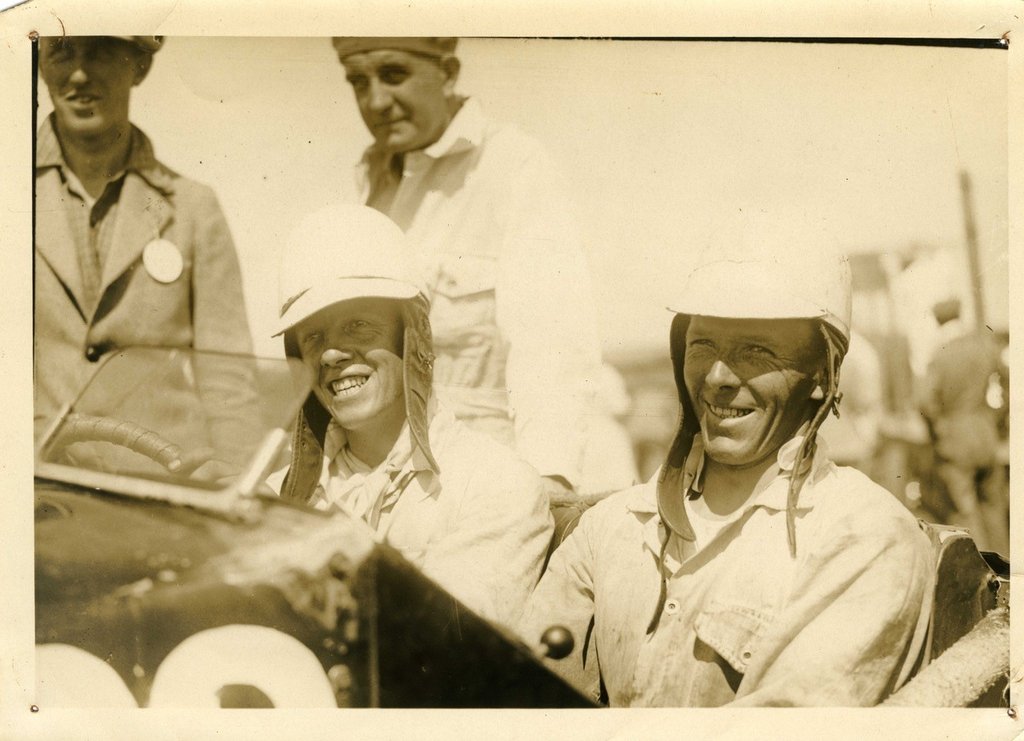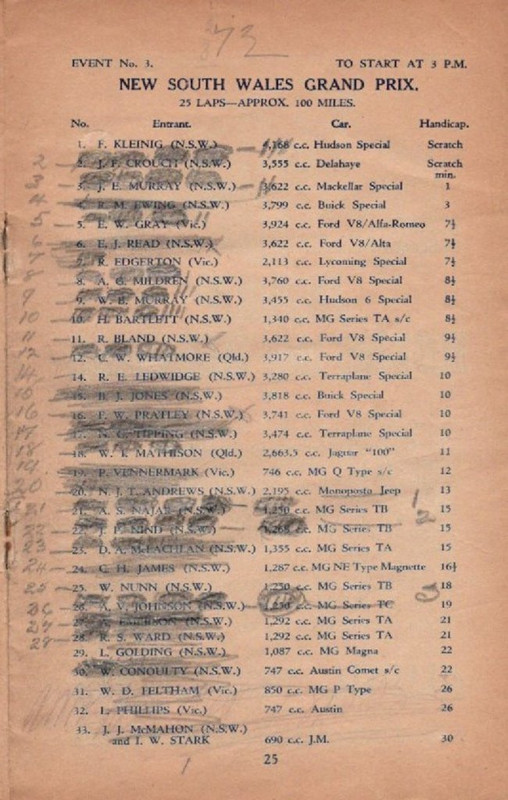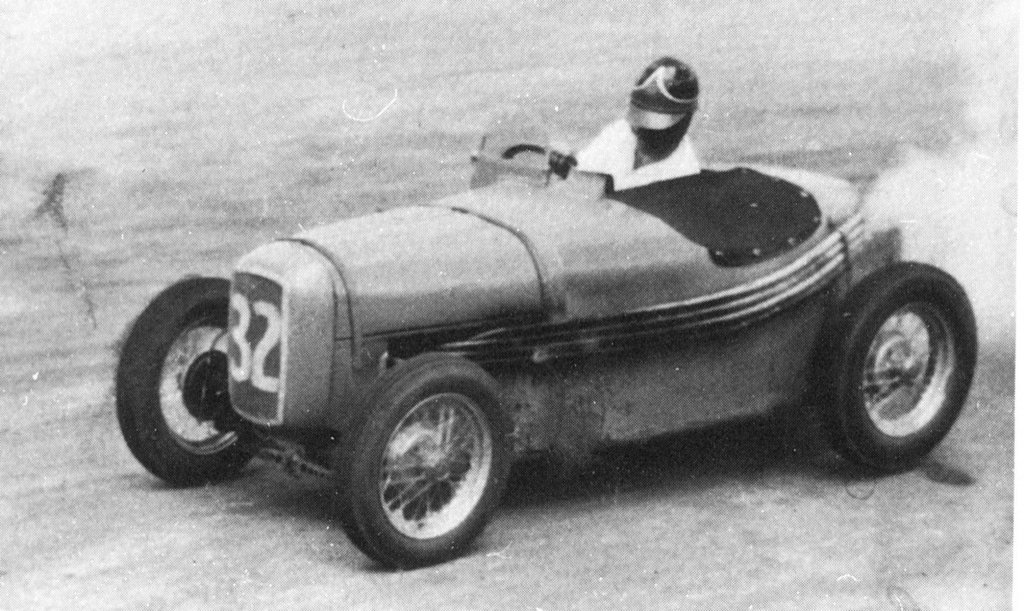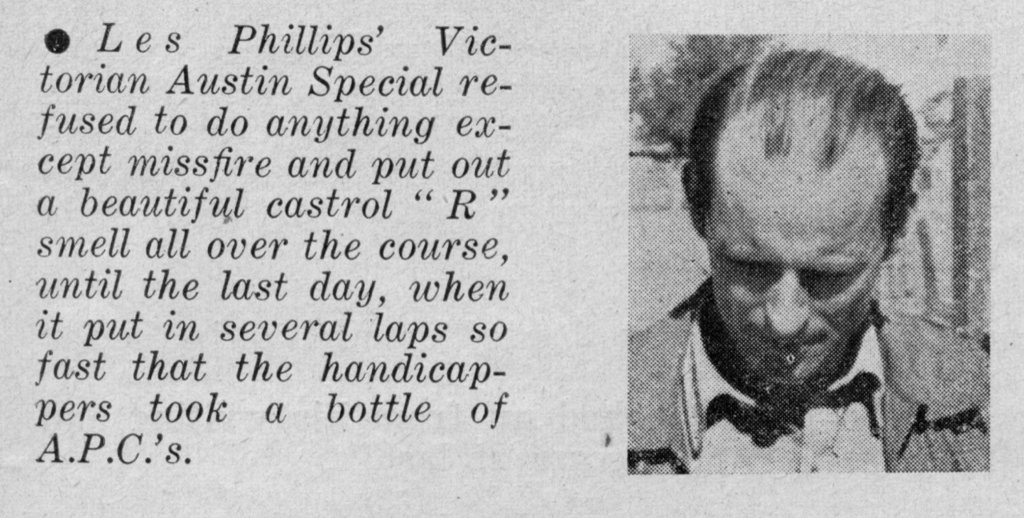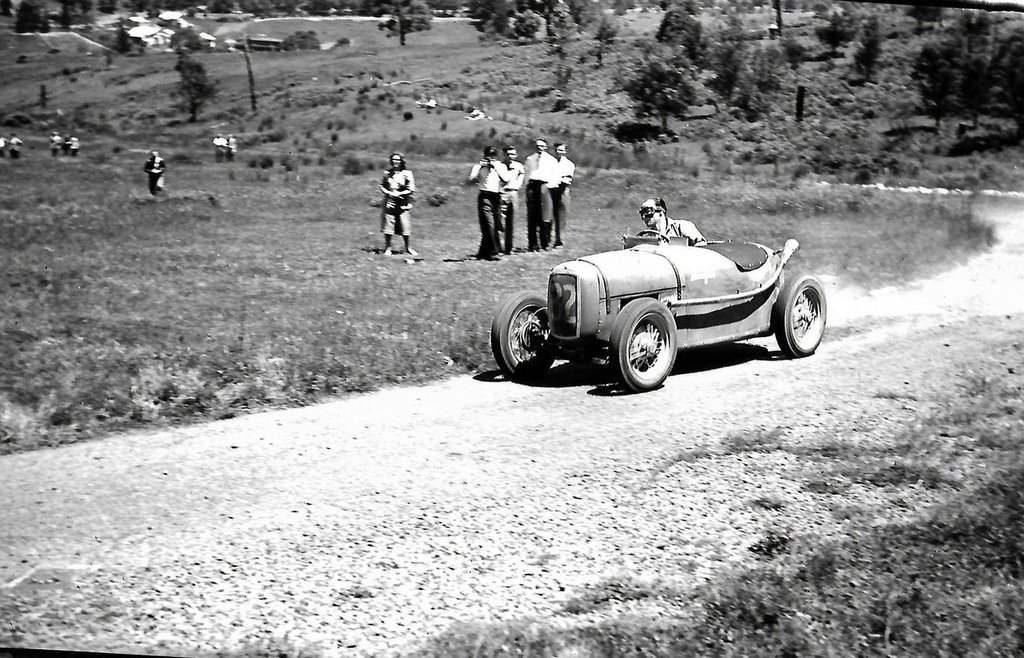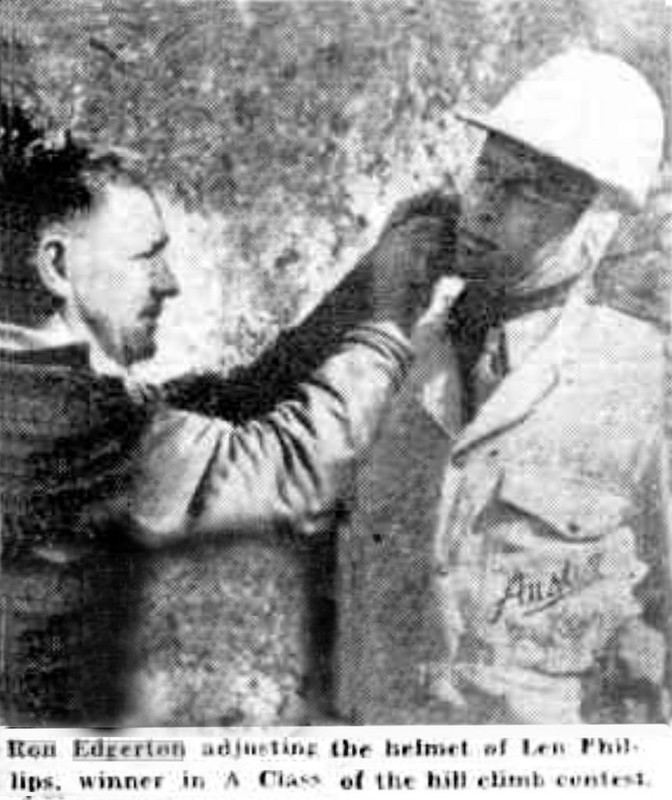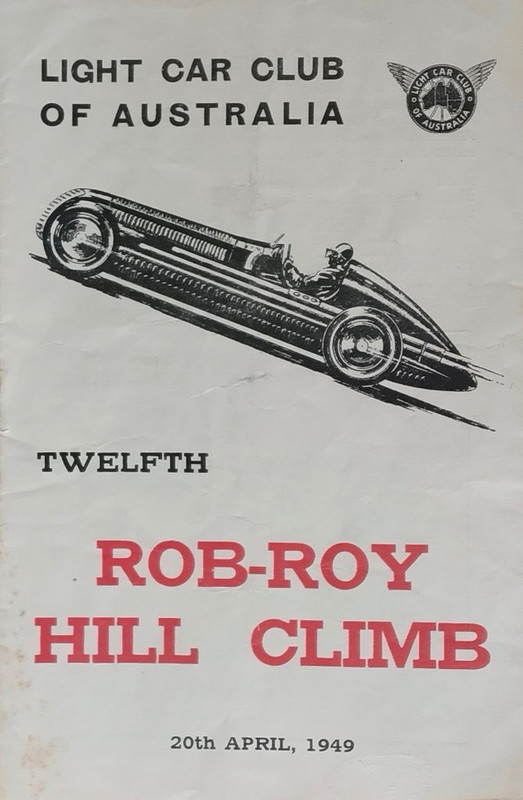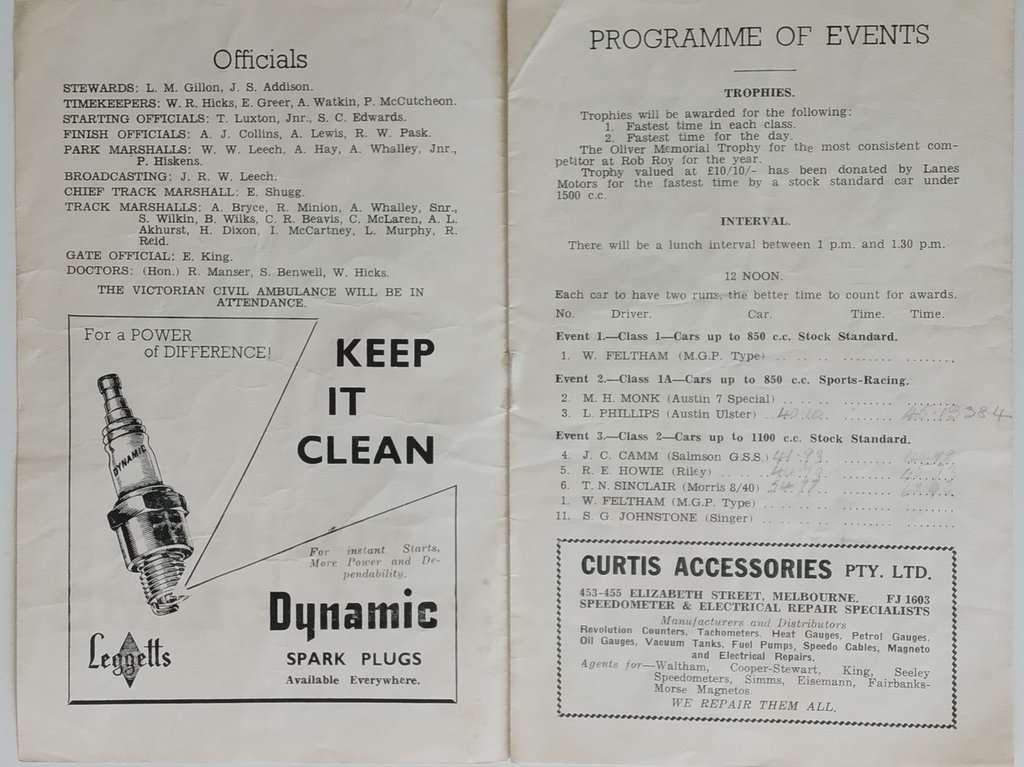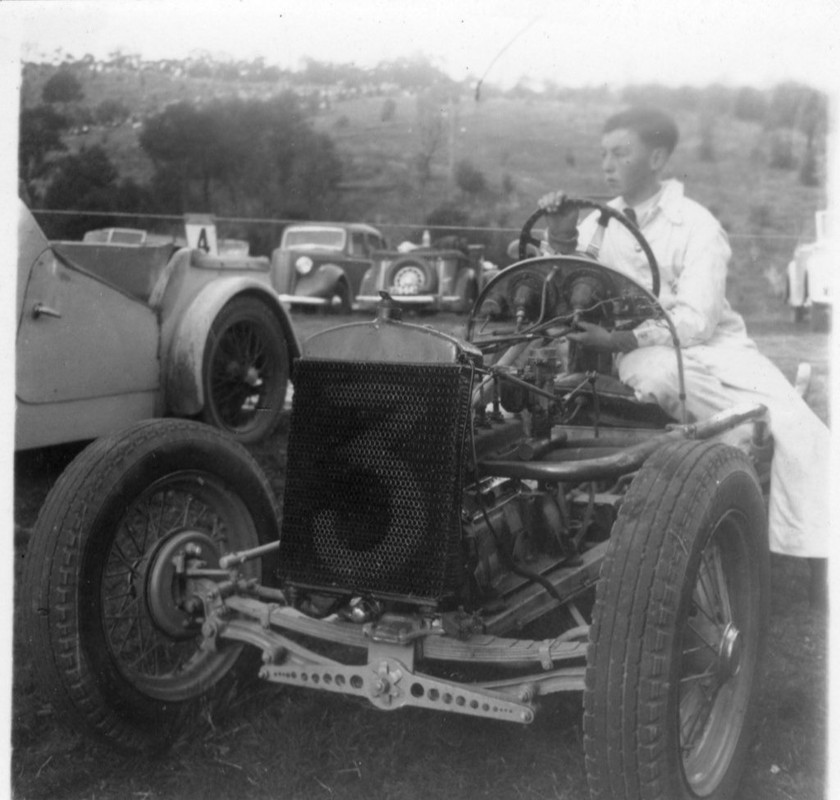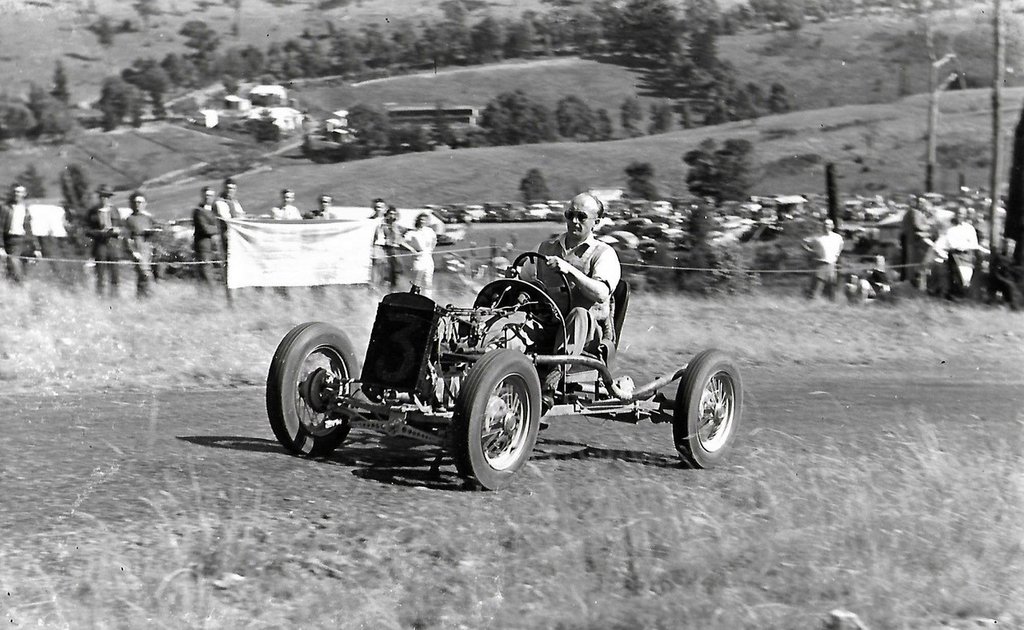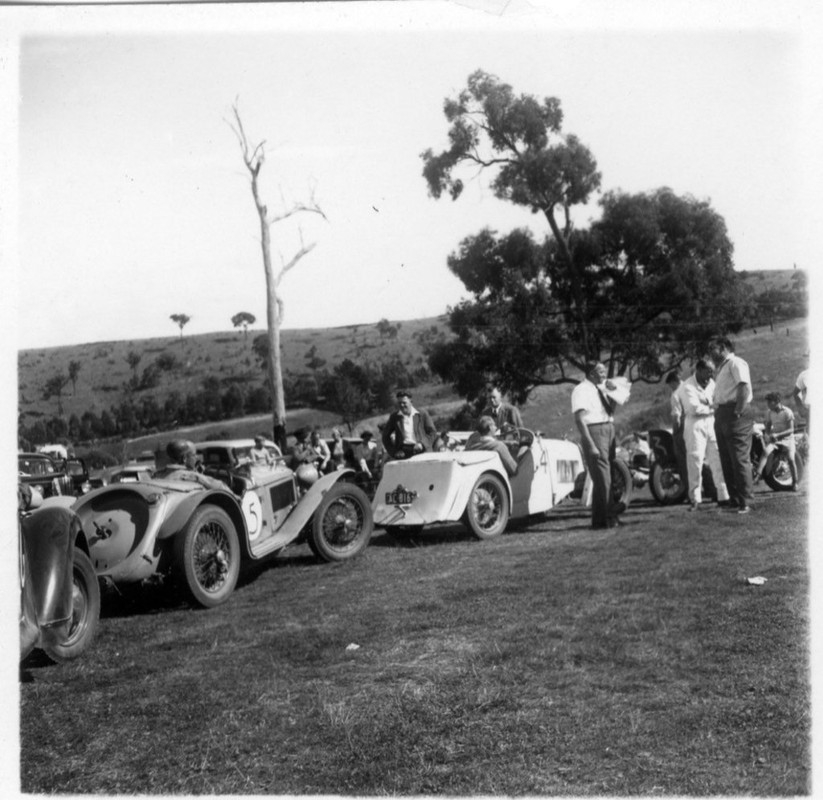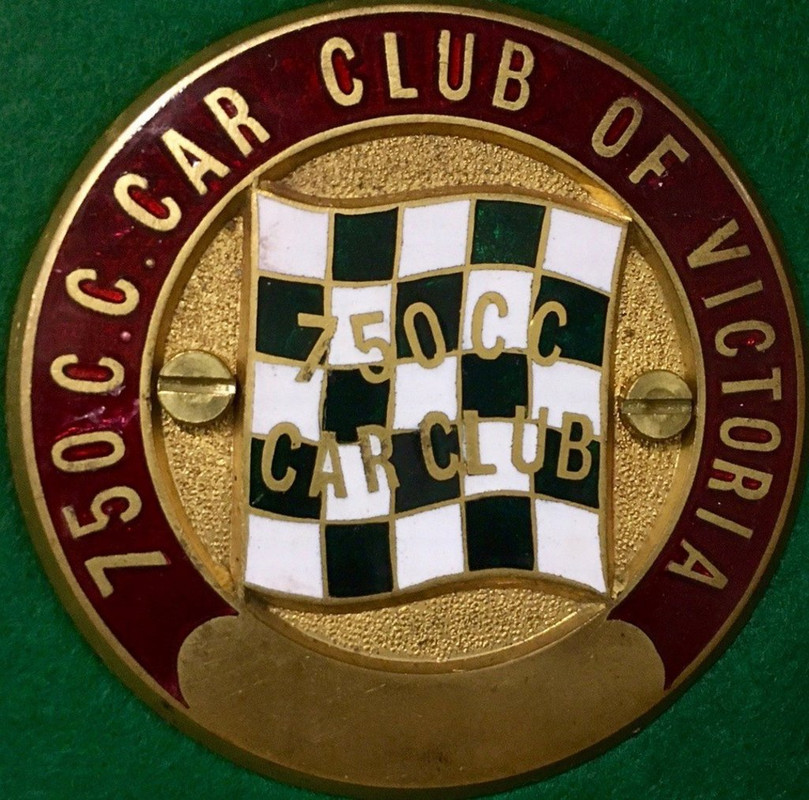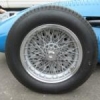Tony continues on from the previous post with more Austin 7 history (and a few ringins) relating to the 1932 Australian GP, Phillip Island.
Two more pages from the 1932 race program -- the first illustration is the Austin Distributors Pty. Ltd. advertisement that perhaps the claims in the fine print could be questioned. The next page tells us that Bill Scott (reported in several earlier posts driving his Austin) is now the Victorian manager for COR (later renamed as BP Australia) and will provide the course commentary that will also be broadcast on Melbourne radio.
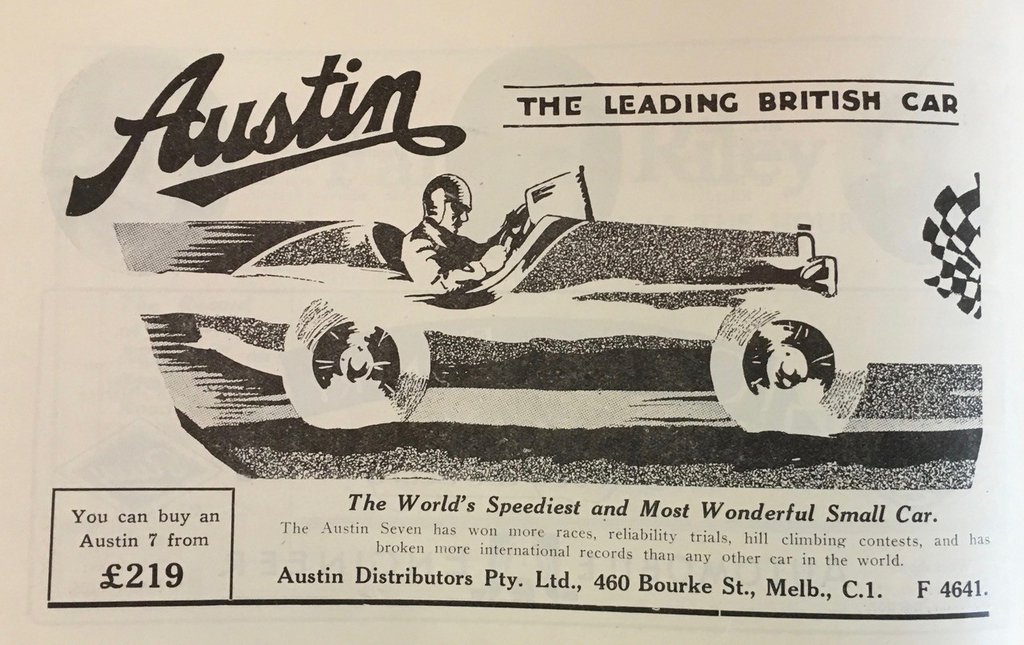
Bob King Collection.
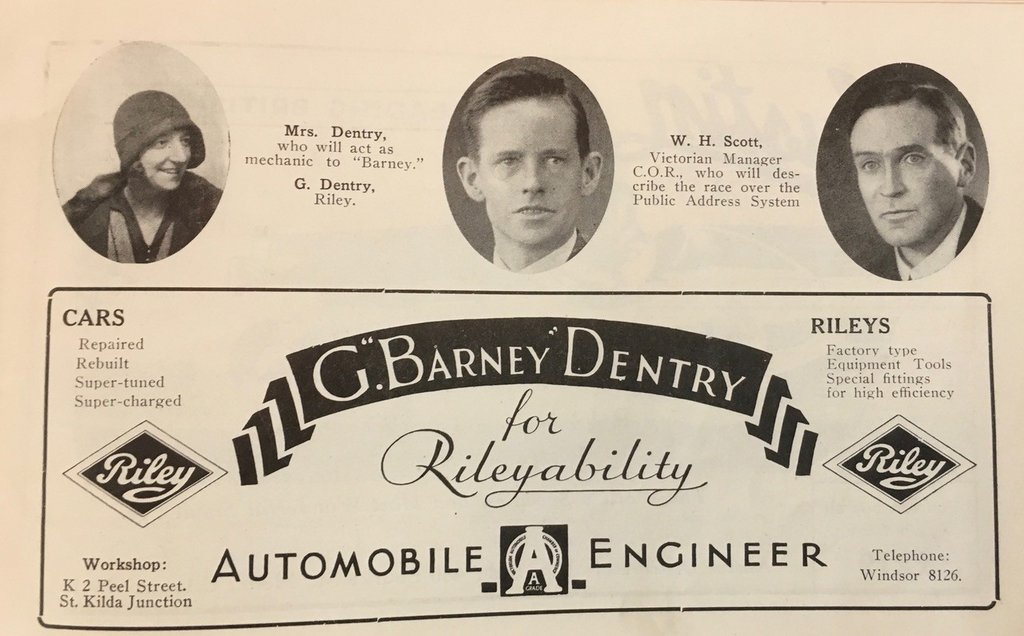
Bob King Collection.
As the 1932 race was Cyril Dickason's last AGP, it is appropriate to precis an article from the April 1932 Australian Motorist (AM). Under the heading This Racing Business, the editor recorded his interview with C.R. Dickason. Starting with [In this year’s race the popular opinion was that “Dicky” put up a magnificent race, and that his driving was superb. Ed.”AM.]
He starts the story with 'From a spectator’s point of view the race commences on the drop of the flag, but not so as preparations commence many months before the actual day of the race.
All too quickly the time arrives when the competing cars go down to the Island to put in their last few days on the actual course with a view of finding any new bumps or holes if any on the circuit. I say “all too quickly” advisedly, as it has always been my experience that, no matter how early one commences preparation, a racing car is never ready.
Dickason mentions the lack of sleep the night before the race where one's brain is recounting every detail. Waking up the first thing is to look outside and check the weather, then a light breakfast before sauntering out of the hotel to watch the enthusiastic crowds arrive from the mainland. Then a final checkover, filling with oil, petrol and water, a last check up on tyre pressures, seeing that your spares are all loaded up to take to the pits, a change into racing gear and you then proceed with your car to the starting point, which is at the pits.
After looking at your watch you realise you have half-hour to go. Then the starter tells you “five minutes to go!” It is time to change on to your racing plugs, your car having meanwhile been kept hot by constantly running on standard plugs. “Two minutes to go!” You switch on. Your mechanic is ready on the starting handle. “One minute to go!” You give him the word, fervently hoping that the motor will start and that you will not oil a plug before the starter’s flag drops. The motor starts at first pull; the counter flicks around to 4000 revs. You keep it there, not daring to get under. This is one of the longest minutes of your life. As the starter raises his flag you slip your gear in, put your foot down, the rev counter flicks around to 6000, and as the flag drops, you are away with a squeal of tyres, a cloud of dust, and smoke.
Up past the pits, running like a watch, motor doing 5500 revs.; a blackboard shoots out from your own particular pit with the magic letters, “OK” and you have a little smile to yourself.
At last a faint cheer from your mechanic dimly heard above the roar of the exhaust. You are in a place, this followed shortly by the sickening sound of your motor running on three. Hoping it is only a plug, you limp around to the pits, imagining you are doing 40, but, in reality over the 70 mark. A quick plug change, away again, fighting hard to regain your place. Corners again, the scream of your motor as you change down, a hasty look at the rev counter, when you find the needle away round past the limit mark, thinking, “Mustn’t do that again. Thats how motors blow up.”
Dickason ends the story, ‘you finally regain your lost position just prior to that most welcome of all sights- the chequered flag. You pull into your pits happy, dirty and take a long drink, and hope to be first past the post next year.’
Sepia photo showing the cars lined up prior to the start.

VSCC Australia, Alan Muston Collection.
Prior to starting, worth noting the bonnet side of Dickason’s Ulster (5) has been modified to allow for the upswept Ulster exhaust manifold.
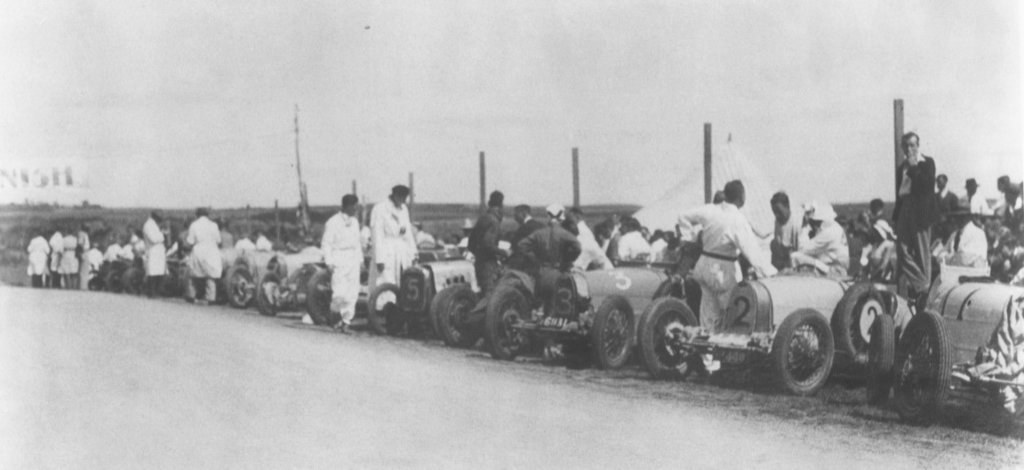
Kent Patrick Collection.
The Referee (Sydney) with a heading BILL NORTHAM GETS THERE IN “RED ONZER” (Special wire from Phillip Island by Norman Ellison) highlights the achievements of the NSW drivers particularly as Bill Thompson had just won his second Grand Prix and in record time.
First away was the Baby Austin entered by Jimmy Wall of Sydney, and driven by Bill Northam, with Keith Dalziel as mechanic. An ancient dingy little bus that laboured under the private names of “Red Ozner” or “Brew 22”. It looked out of place among the real racing jobs. But appearances don’t count in a 200 miles race.
With a 26 minute start on the scratch markers, Ken McKinney and Clarrie May, in his Austin Distributors entry (both unsupercharged Ulsters) were flagged away. After his success in last year's race and driving the same Ulster this year Dickason was back on the eight minute mark.
Ken McKinney was out after two laps with a seized tail-shaft universal joint, and by lap 20 Bill Thompson had taken the lead and his crew held up a big figure “One”. Ellison continued his report by stating Dickason was now in fourth position, ‘driving like a master, but the best driver in the world cannot offset plug troubles’.
Northam used an unusual method to make contact with his pit crew by throwing a stone with a message in a very shaky hand, wrapped around the stone reading 'Ain’t it a ————? Choked jet in first round'. The Northam-Dalziel adventures were known only to the pits. But the record crowd had many a laugh at another humorous interlude. W. H. Scott, Victorian manager of the C.O.R. and ex-racing referee, and a one hundred per cent racing enthusiast, described the race over the air. But it was strange to hear him say, 'Thompson is having a hectic time in hell and Terdich is well on his way to heaven.' or 'So-and-so has just stopped near Young and Jackson’s.' But you must remember that those terms are actually the official names of the corners of the circuit.
Once Thompson was in the lead the race was virtually over, and on the twenty-seventh lap he received a pit signal "Go slower". Disher in the Salmson drove a sound hard race was second, and Dickason, who turned on everything in a gallant attempt to make up for plug troubles, was third.
Once again we can all learn from The Car magazine report of the Grand Prix.
‘Precisely at 1.30p.m. the starter sent Bill Northam off in his Tom Thumb Austin, with his numbers nearly blotting out the sides of the little car. By the way, the Sydney boys were inclined to think that the “handicappers had dealt harshly with the mouse”, but agreed afterwards that everything was O.K.’
The report continued, We are not going to give the whole details of the race, as this journal would not be big enough to mention the many interesting stories which occurred in practically every lap. Starting from the bottom of the list of handicaps, Wall’s car (22) was driven by Bill Northam, because Jimmy Wall was in a Sydney hospital with a broken arm, the result of an accident, in which the little car was somewhat twisted, only a fortnight previously.
McKinney (19), in his orange pup, started off well, but saw the last 29 laps from a grandstand seat, as some gadget seized when it should not have. He wasn’t looking for sympathy, as it is all in the game.
Clarrie May (18) settled down early in the piece and drove as he had never driven before, but his car was not as fast as the one he drove last year.
Dickason (5) drove a wonderful race in a little car which has had a fair amount of belting in the past. Had the higher placed car not had quite so much handicap Dicky must have come second. Anyhow the No.5 driver does not begrudge the youth his victory. Dicky is the only driver who has had a place in all the races yet held, so that should be sufficient evidence of his skill as a driver.
The supporters from Sydney, numbering about fifty, were confident of Thompson’s win right from the start. The Race Referee’s Report (O.F.Tough) listed eighteen cars faced the starter and ten completed the race. By the time the scratch men left there were some interesting fights in progress, with the two Ulster Austins, May and McKinney, the latter having the advantage. Wall’s little Austin, after a first lap with blocked jets, was going well, and got some real good laps at 6 min. 20 sec. and better.'
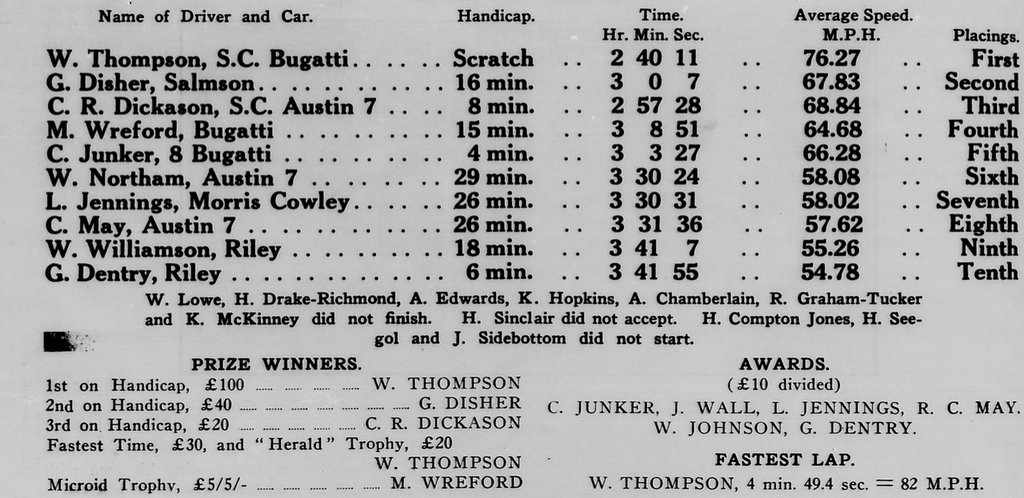
The Car magazine March 1932.
For the 1932 race, as well as programs spectators were given a blank lap chart in order to help keep track of the competing cars. This completed chart also lists some of the reasons why some cars failed to finish.
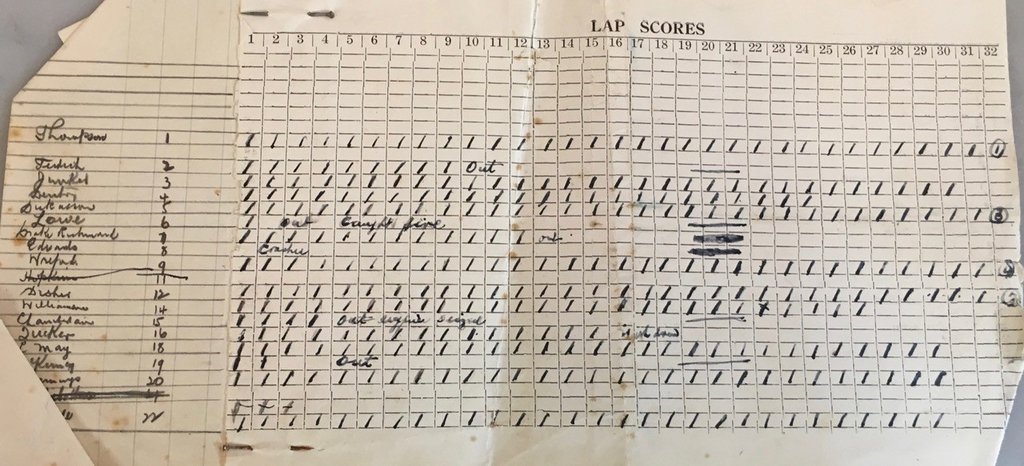
Bob King Collection.
The Red Ozner passing the Shell Scoreboard.
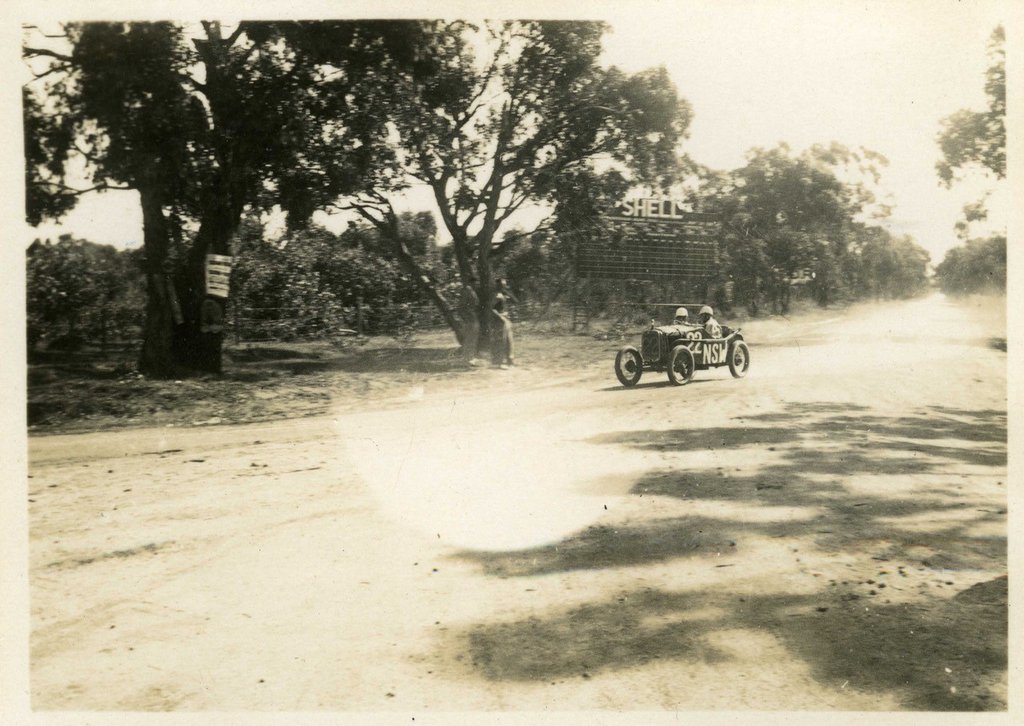
VSCC Australia, Alan Muston Collection.
Bill Thompson with his mechanic Wal Warneford waving at the spectators after moving into first place.
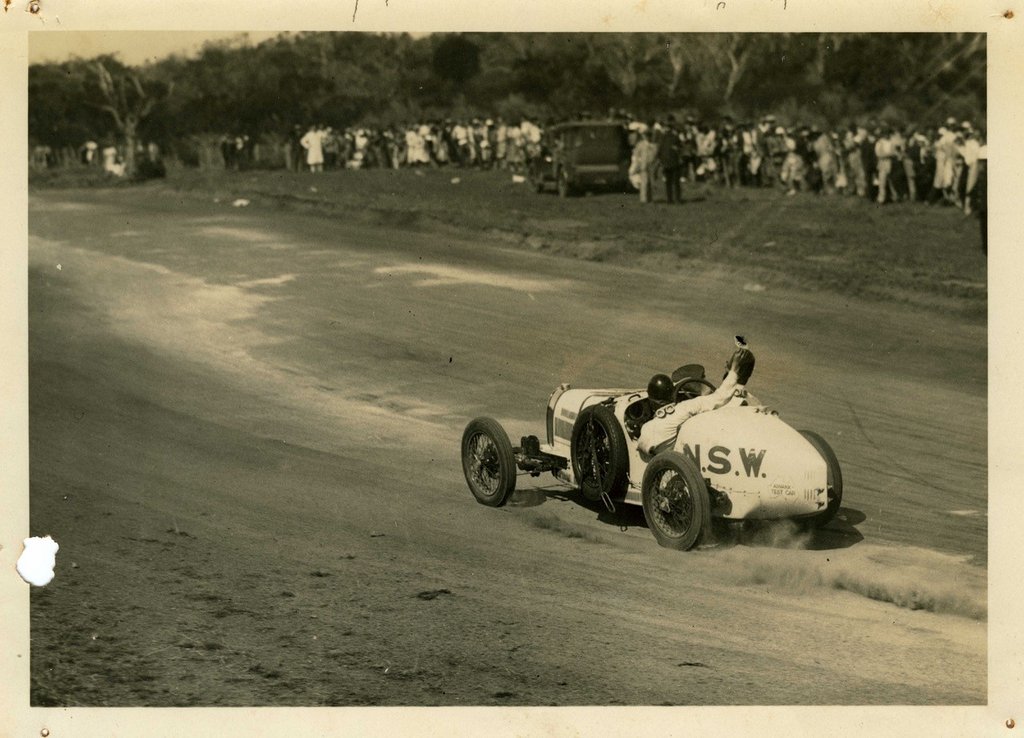
VSCC Australia, Alan Muston Collection.
Geoff Disher, finished in second place in his Salmson. An excellent achievement as it was his first race and he had just celebrated his twenty-first birthday without any booze or smokes. (As reported in The Car)
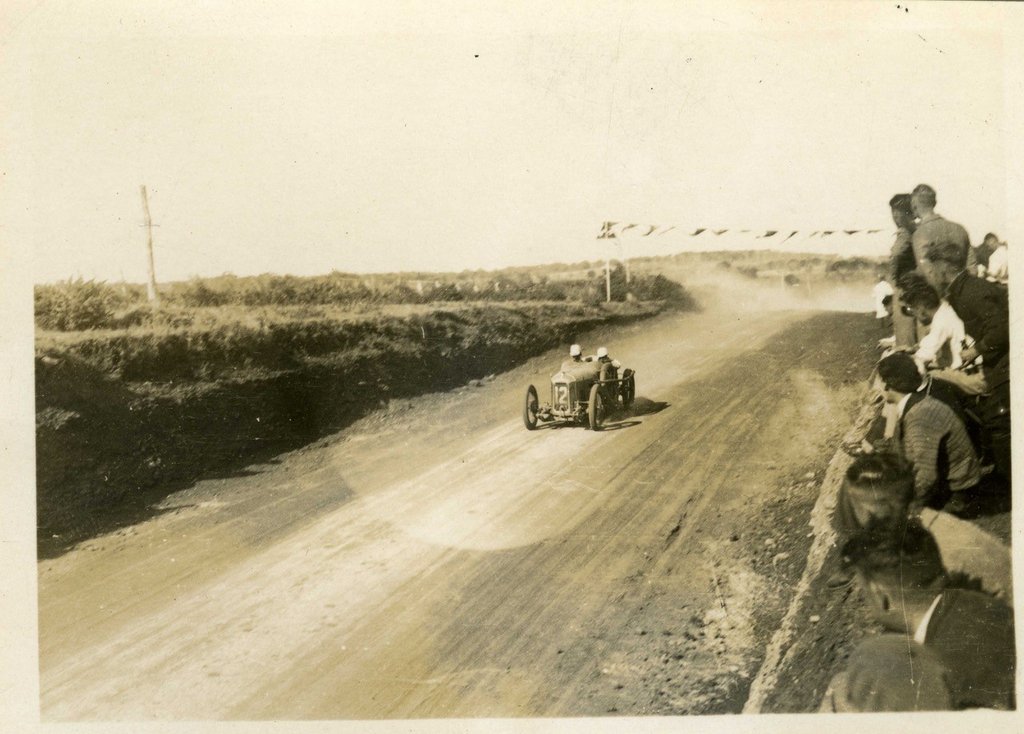
VSCC Australia, Alan Muston Collection.
Bill Lowe, Supercharged Lombard started with a two minute handicap over Dickason, but according to Bob King’s lap chart retired after catching fire on the second lap.
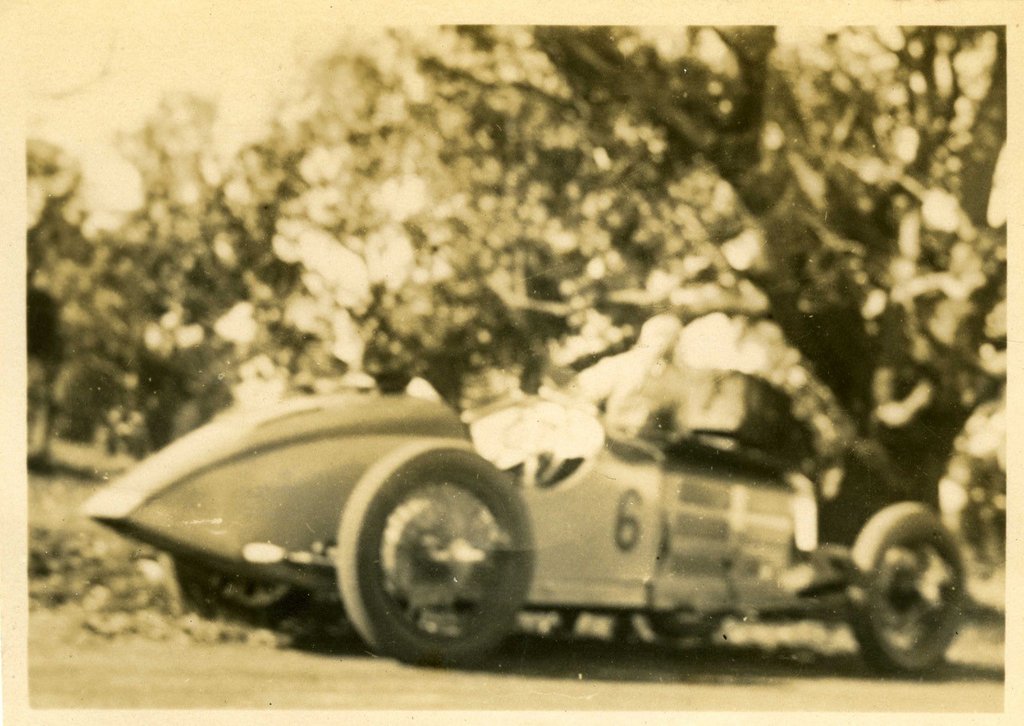
VSCC Australia, Alan Muston Collection.
From Dickinson’s own scrapbook. Note all his photos were suitably captioned.
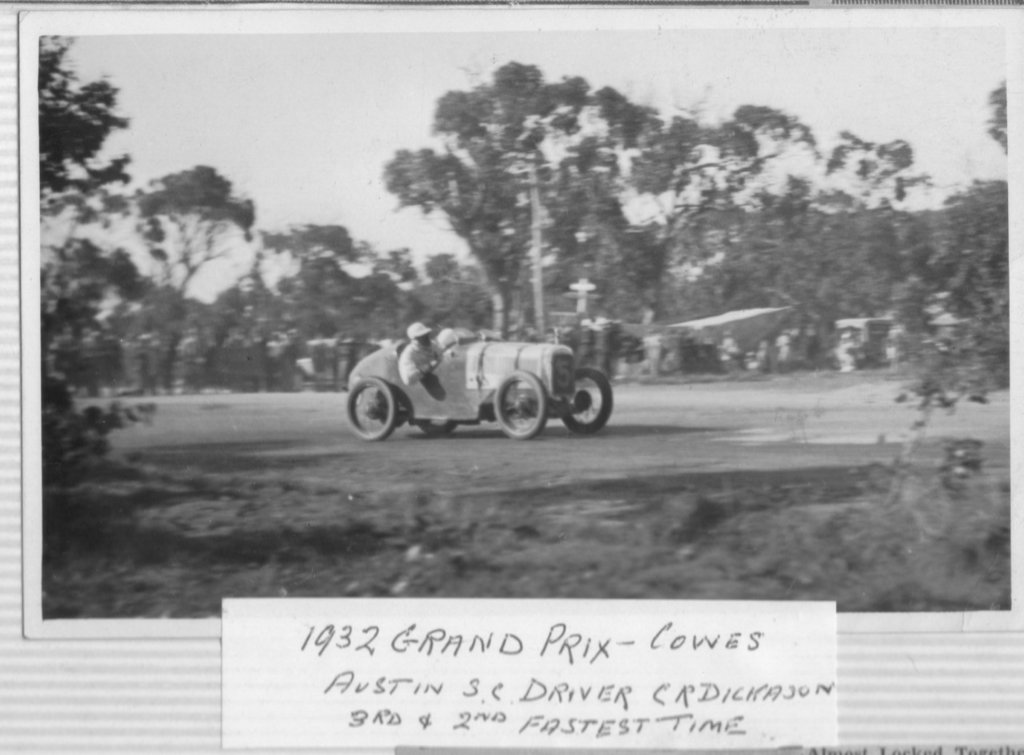
Austin 7 Club Collection
Clarrie May, unsupercharged Ulster, the photo confirms the long straights and that spectators congregated at the pits and corners.
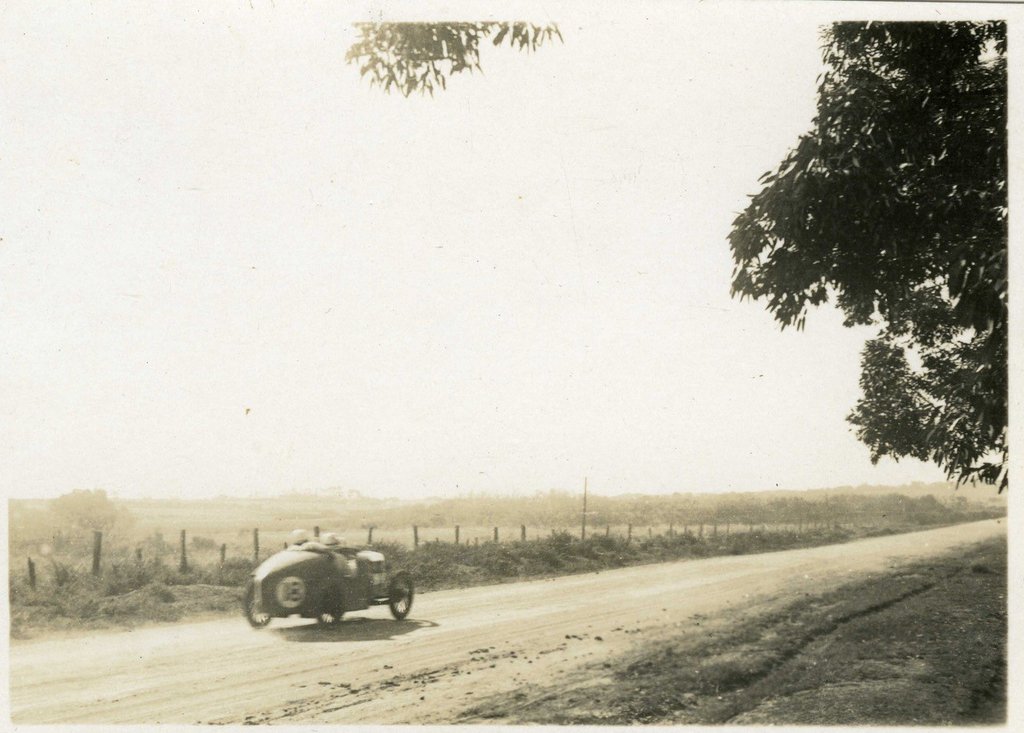
VSCC Australia, Alan Muston Collection.
Dickinson leaving clouds of dust in his last Grand Prix.
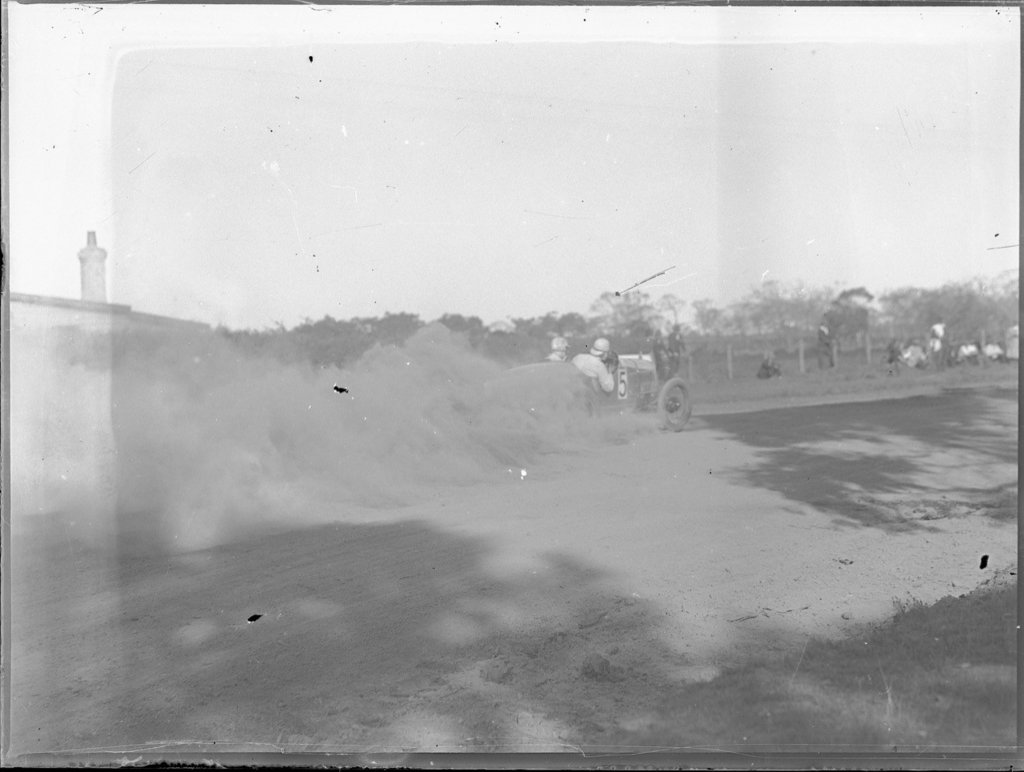
Photo unattributed.
Bill Northam making steady progress proudly displaying their NSW heritage and race number 22, the name of their sponsor’s new beer.
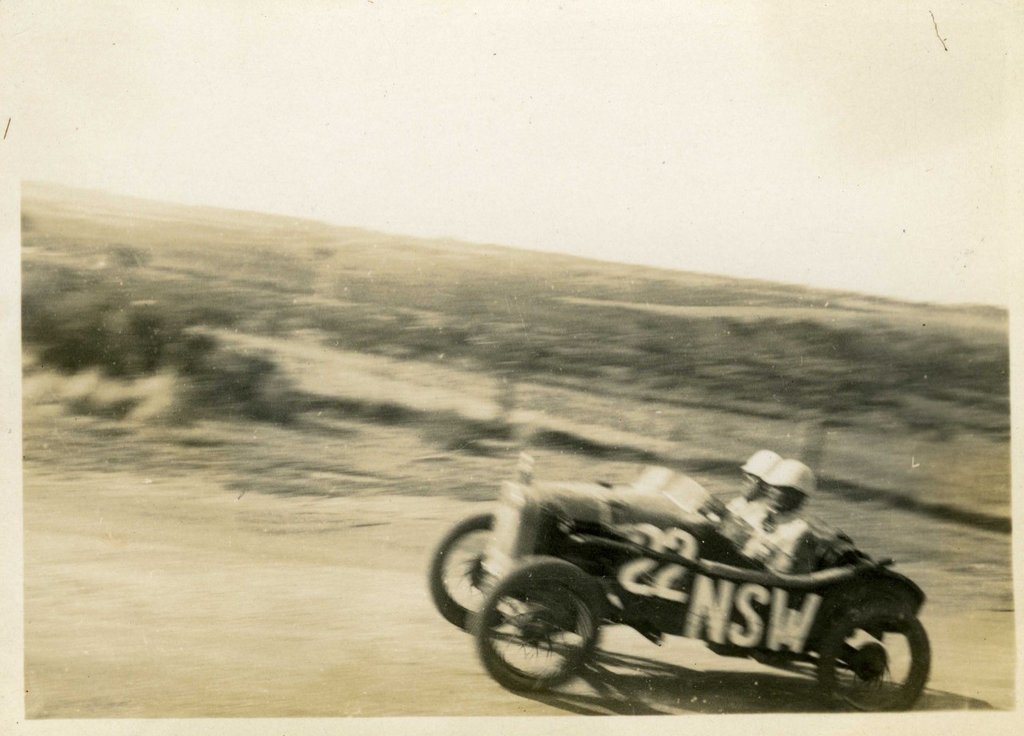
VSCC Australia, Alan Muston Collection.
Albert Edwards was involved in a most unfortunate accident when after leaving the start he swerved hoping to avoid a spectator who was standing in the wrong place. Unfortunately his front wheel drive Alvis ended upside down in a ditch.
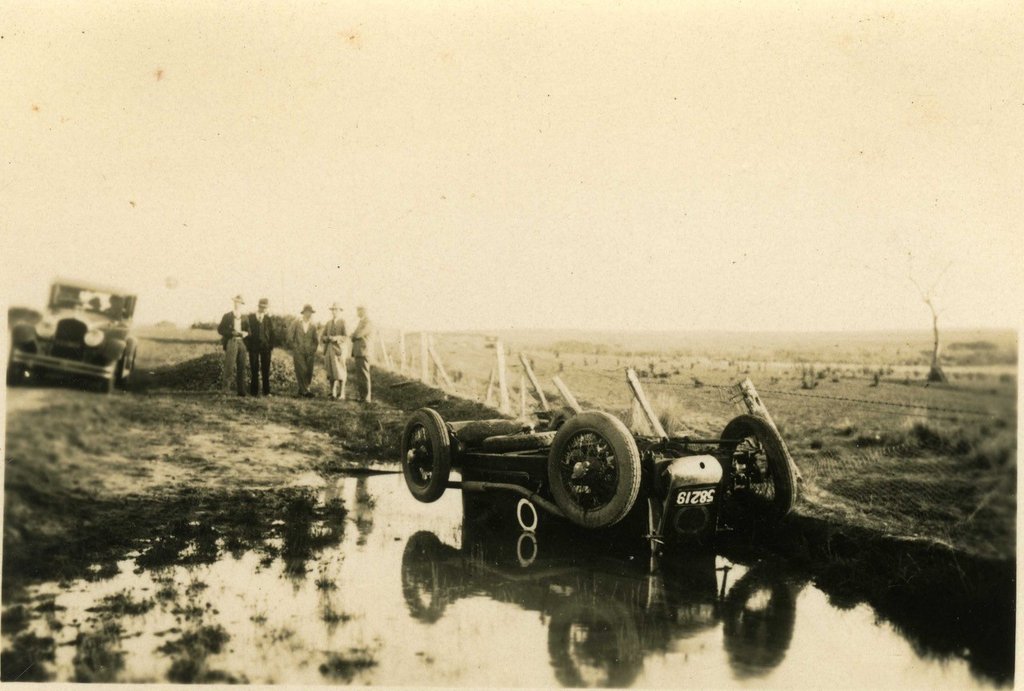
VSCC Australia, Alan Muston Collection.
A very detailed handwritten on the spot race report listing the race order after various laps. Note top right hand corner Dick 1st. Lap 75 MPH. I assume the 203.6 indicate race distance. Also noted Edwards the driver of the Alvis and his mechanic were not injured in the first lap accident however the spectator (R H Wilkinson) also a member of the Light Car Club was hurt.
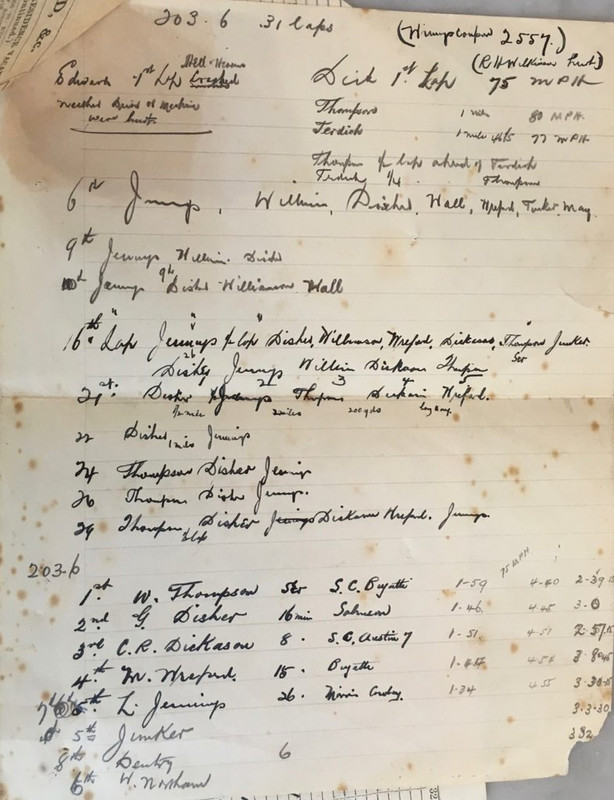
Bob King Collection.
With thanks...
Tim Shellshear, VSCC Australia Librarian and Archivist who has shared the Alan Muston photographs.
Bob King supplied the 1932 AGP program, lap chart and notes from his collection.
The Cyril Robert Dickason Collection from the archives of the Austin 7 Club Victoria - scanned by Robert Humphries.
State Library Victoria
Tony Johns
.



